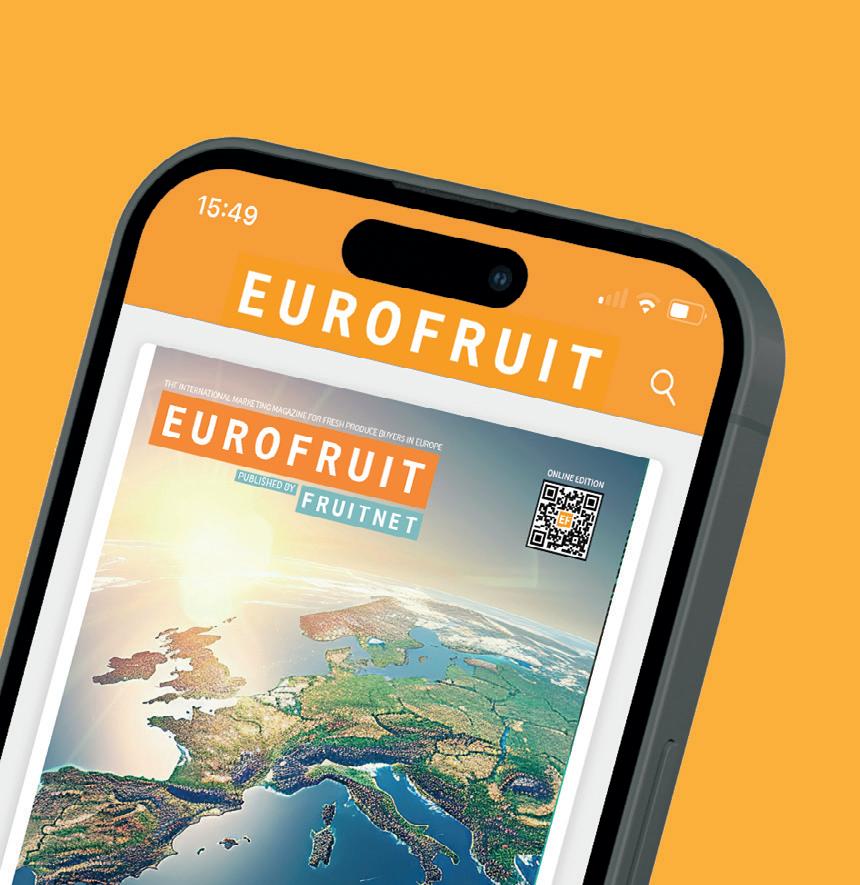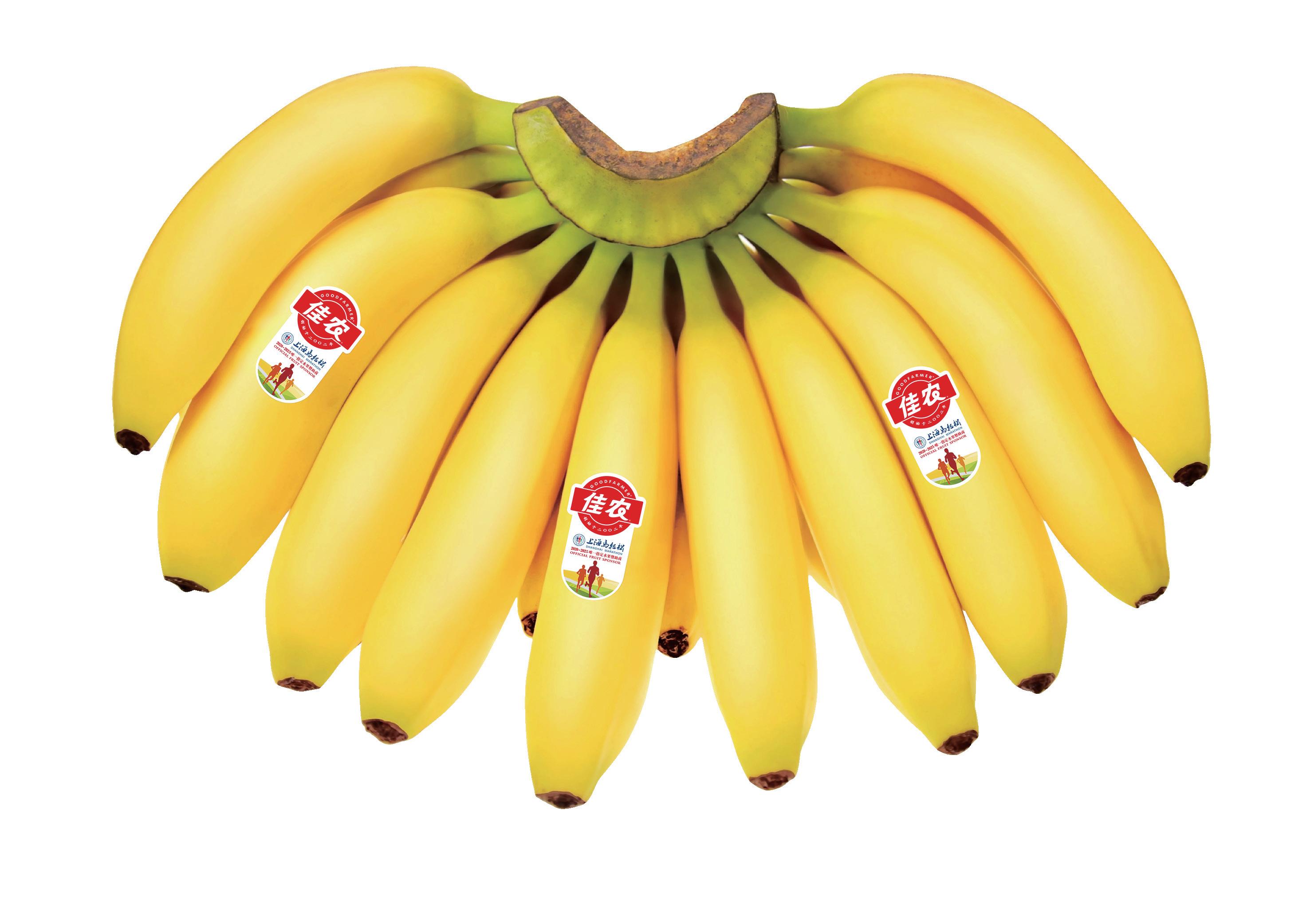EUROF RUIT
PUBLISHED BY



PUBLISHED BY


How can the region’s suppliers respond to commercial and climate challenges? Our Mediterranean issue offers the business a high-level overview







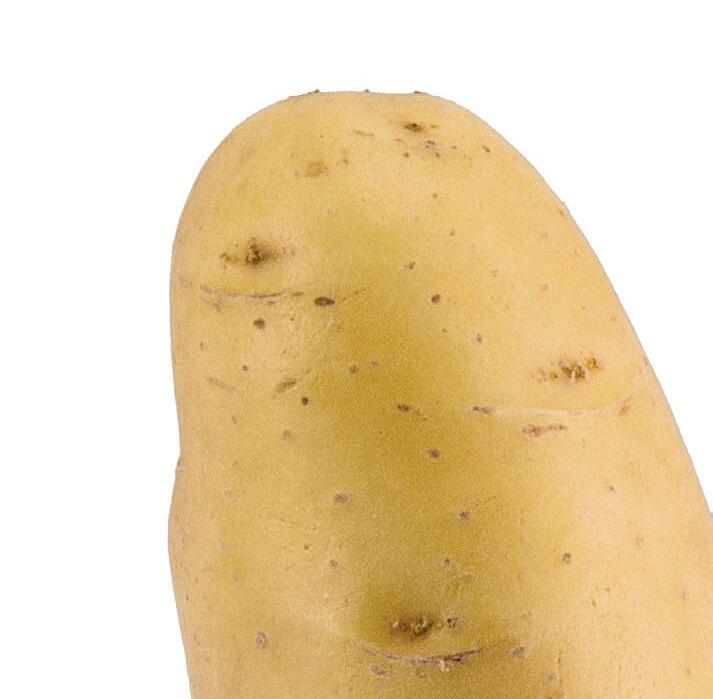







Emerging suppliers in the Mediterranean need to remember: get your marketing message right and the fruit will sell itself
Iwrite this having just returned from the Fruitnet Berry Congress in Rotterdam, where the general atmosphere was distinctly upbeat. Turns out the berry business is in rude health – and with consumer confidence and spending on the rise and new genetics driving improvements in quality and consistency, the feeling is that there is still plenty of room for further growth in the category. New supply sources across the Mediterranean region are brimming with potential – Egypt and Tunisia to name just two – while now established producers like Peru are undergoing a dramatic varietal transformation. The business has identified two consumer trends, health and snacking, as key drivers of growth and are fine-tuning their messaging to ensure they make the most of this opportunity. It’s an example that other categories would do well to follow. Next week takes us to Valencia for the first-ever Fruitnet Citrus Congress, where the theme is how to identify better ways of selling citrus and making the category more profitable. As Genesis Fresh’s recent FLIA win with Onix shows, there’s plenty of innovation in citrus. And big strides are being made with branding too. Will the business find the right way to communicate this to consumers? Watch this space… E

Media International GmbH, Lindemannstrasse 12, 40237 Düsseldorf, Germany


8 US tariffs on EU exports
Veg exporters “closely monitor” situation
10 News in Brief
All of the latest key developments
16 Fruit Logistica Innovation Award
AMFresh picks up main award for Onix
18 Anecoop enjoys record turnover
Spanish cooperative presents 23/24 results
20 EU simplifies rules on sustainability
Mixed reaction to revised CSRD rules
22 BayWa picks new chief executive
Frank Hiller is named chief executive
23 Shaffe appoints its next leaders
Nathan Hancock becomes president
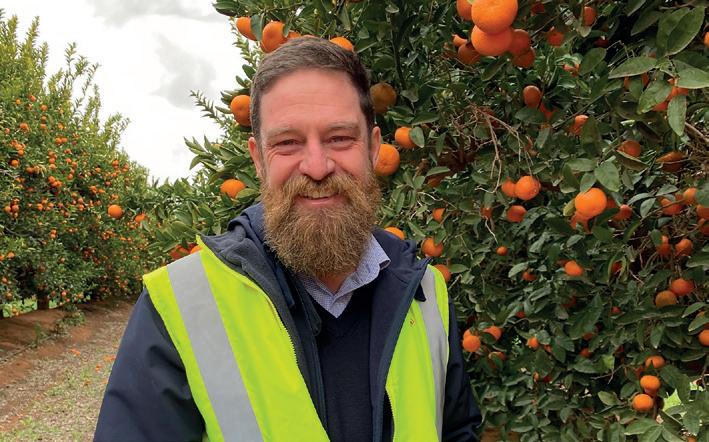
24 New tomato source in Central Asia?
Why Uzbekistan could sell more in Europe
25 Chilean cherries face tough questions
Chinese market collapse poses challenge
26 Interview: Bernardo Calvo, Sun World
”Golden age” for grape variety development
30 New leadership for South African grapes
Alwyn Dippenaar is new Sati chairman
32 Spain puts in strong performance
Produce exports are on the up, says Fepex
33 Grupo Lomar remains positive
Growth in store for onions and garlic
34 Anecoop unveils Red Bouquet
Blood orange brand gets Berlin launch
36 Spanish retail wants more domestic fruit
Supermarkets opt for local apples and pears
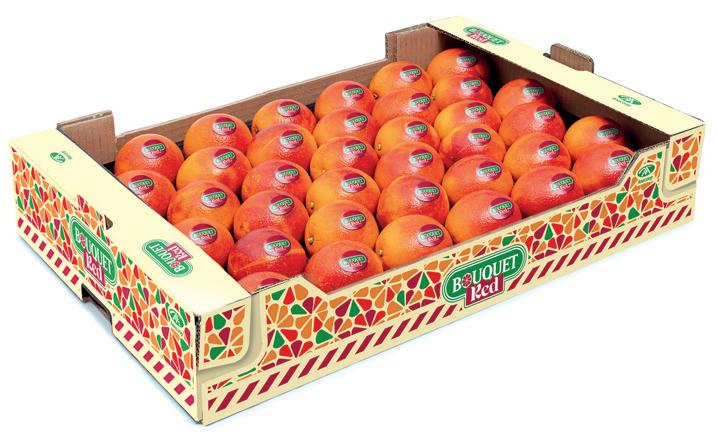
38 Cosmic Crisp freshens up online presence
New web portal aims to build community 40 Battaglio forms pineapple venture
Importer invests in Costa Rica
Tough road ahead for Greek kiwifruit
Price pressures cause frustration
Israeli start-ups prioritise sustainability
Food security remains front of mind
Alanar shifts focus to own production
Turkish exporter adopts new strategy
France and Morocco reach deal
Compromise on tomato competition?
Jordan’s date industry takes off
Exporter confirms ‘massive’ investments
47 Opportunities for Côte d’Ivoire mangoes
48
ADF Agro targets premium market
Saudi Arabia seeks partners
Topian commits to reshaping production
50 Where next for Chilean kiwifruit?
53
Sector could thrive with right varieties
Zespri gets through to consumers
Kiwifruit brand reaches 100mn households
54 Justin Chadwick set for retirement
CGA’s chief executive takes a look back

56
58
60
62
68
69
70
74
76
New Spanish orange protocols for India
Cold treatment to be allowed in transit
European avocado consumption
New heights reached, says WAO
Kenyan avocados ripe for growth
Enzispring spies export opportunities
Interview: Wim Destoop, Westfalia
Positive future for avocados
Pink Lady lays out ambition
Goal for 100mn annual consumers by 2030
Blue Whale revamps apple aisle
Consumer-centric effort working in France
Interview: Matthiew Maxant, Sakata
Vegetable seed firm shares innovations
‘Banana Badasses’ take on world
Canada’s Equifruit intent on disruption
IFPA implores US Congress
‘Bipartisanship’ needed to help growers
78
80
Fresh Take: Madrid, Spain
A shift in the country’s balance of trade
Store Check: Woolworths
Kiwi grocer puts on innovative display
fruitnet.com/berrycongress
Fruitnet Berry Congress brought together leading players from the global berry category to connect and share in-depth experience and expertise, whilst exploring new ideas.
instagram.com/fruitnet
Follow Fruitnet's Instagram page for regular photos and updates from the Fruitnet team.

fruitnet.com/eurofruit eurofruit's news website provides regular updates on all the top stories from the European fresh fruit and vegetable business. News
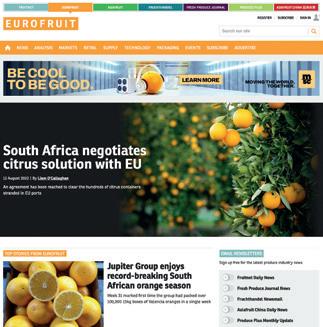
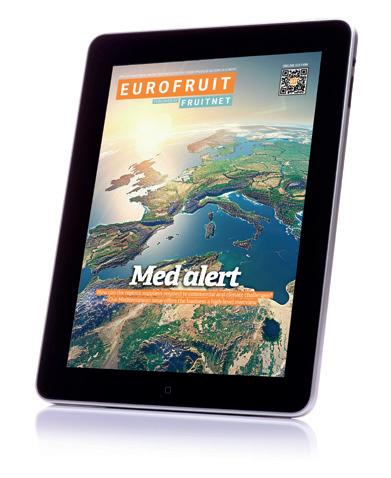
https://desktop.eurofruitmagazine.com
Download the new Eurofruit app onto your smartphone or tablet from the App Store or Google Play. Stay informed of the latest fresh produce industry developments, and enjoy our magazines in new user-friendly digital formats.
linkedin.com/showcase/eurofruitmagazine
Expand your network of professional contacts and join the fresh produce conversation by visiting the eurofruit LinkedIn account. LinkedIn
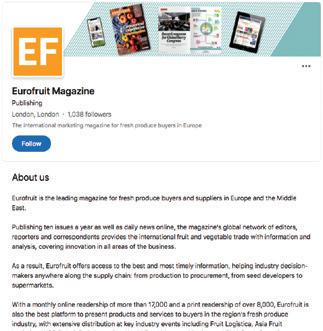
x.com/eurofruit
Keep up to date with news, opinions and developments from around the European fresh produce trade by following our dedicated X account.
fruitnet.com/freenewsletter
Fruitnet Daily News is the fresh produce industry's leading source of news, information and insight. Available free to all, it is essential reading for those who need to keep track of developments and trends in the international fruit and vegetable business.
https://anchor.fm/fruitbox
Listen to Fruitnet's podcast series hosted by managing director Chris White in London. The Fruitbox podcast features conversations and interviews with leading industry experts. Fruitbox

SINCE 1973
managing director, fruitnet europe
Mike Knowles
+44 20 7501 3702 michael@fruitnet.com
managing editor Maura Maxwell
+44 20 7501 3706 maura@fruitnet.com
deputy editor
Carl Collen
+44 20 7501 3703 carl@fruitnet.com
features editor
Tom Joyce
+44 20 7501 3704 tom@fruitnet.com
staff writer
Fred Searle
+44 20 7501 0301 fred@fruitnet.com
design manager
Simon Spreckley
+44 20 7501 3713 simon@fruitnet.com
senior designer
Qiong Wu
+61 3 9040 1603 wobo@fruitnet.com
senior graphic designer Mai Luong
+44 20 7501 3713 mai@fruitnet.com
graphic designer
Asma Kapoor
+44 20 7501 3713 asma@fruitnet.com
head of events and marketing
Laura Martín Nuñez
+44 20 7501 3720 laura@fruitnet.com
events executive Maria Santamaria Peláez +44 20 7501 3719 mariasan@fruitnet.com
MANAGEMENT
commercial director Ulrike Niggemann
+49 211 99 10 425 ulrike@fruitnet.com
managing director
Chris White
+44 20 7501 3710 chris@fruitnet.com
sales director
Artur Wiselka +44 20 7501 0309 artur@fruitnet.com
senior sales manager
Giorgio Mancino +44 20 7501 3716 giorgio@fruitnet.com
us & canada
Jeff Long +1 805 448 8027 jeff@fruitnet.com
italy
Giordano Giardi +39 059 786 3839 giordano@fruitnet.com
spain, latin america, middle east
Belén Barbini +34 615 051 357 belen@fruitnet.com
spain, latin america, middle east
María del Mar Valenzuela +34 671 378 856 maria@fruitnet.com
germany, austria, switzerland, middle east
Heike Hagenguth +20 100 544 5066 heike@fruitnet.com
morocco, france, tunisia Cristina Delof +34 93 000 57 54 cristina@fruitnet.com
south africa
Fred Meintjes +27 28 754 1418 fredmeintjes@fruitnet.com
asia pacific
Kate Riches
+61 3 9040 1601 kate@fruitnet.com
finance director
Elvan Gul +44 20 7501 3700 elvan@fruitnet.com
accounts receivable
Tracey Haines +44 20 7501 3717 tracey@fruitnet.com
finance manager
Günal Yildiz
+44 20 7501 3714 gunal@fruitnet.com
subscriptions +44 20 7501 0311 subscriptions@fruitnet.com
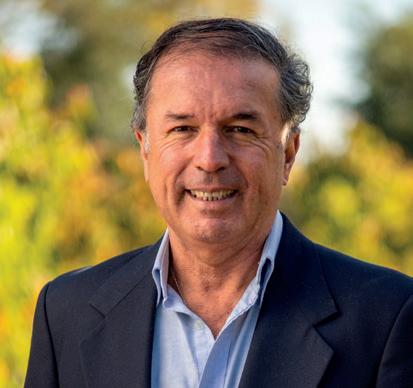
Christian Abud abud y cía
Christian says disease has kept kiwifruit production growth in check in Chile –but with the right varieties and rootstocks, the sector could thrive.
kiwifruit–p26-28
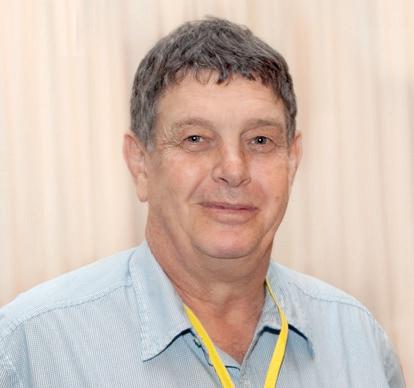
Fred Meintjes eurofruit
Fred catches up with Justin Chadwick, who will soon retire as chief executive of the Citrus Growers Association, to look back at three decades of service.
citrus–p54-55

Gerry Kelman
freelance journalist
Gerry looks at Israeli start-up companies who showcased their food security and sustainability solutions at January’s Food Sec & Tech conference.
mediterranean–p42-43

Michael Barker
fresh produce journal
Michael speaks to Canadian supplier Equifruit, which is using innovative marketing in its drive to secure fairer returns for banana producers.
north america–p74-75
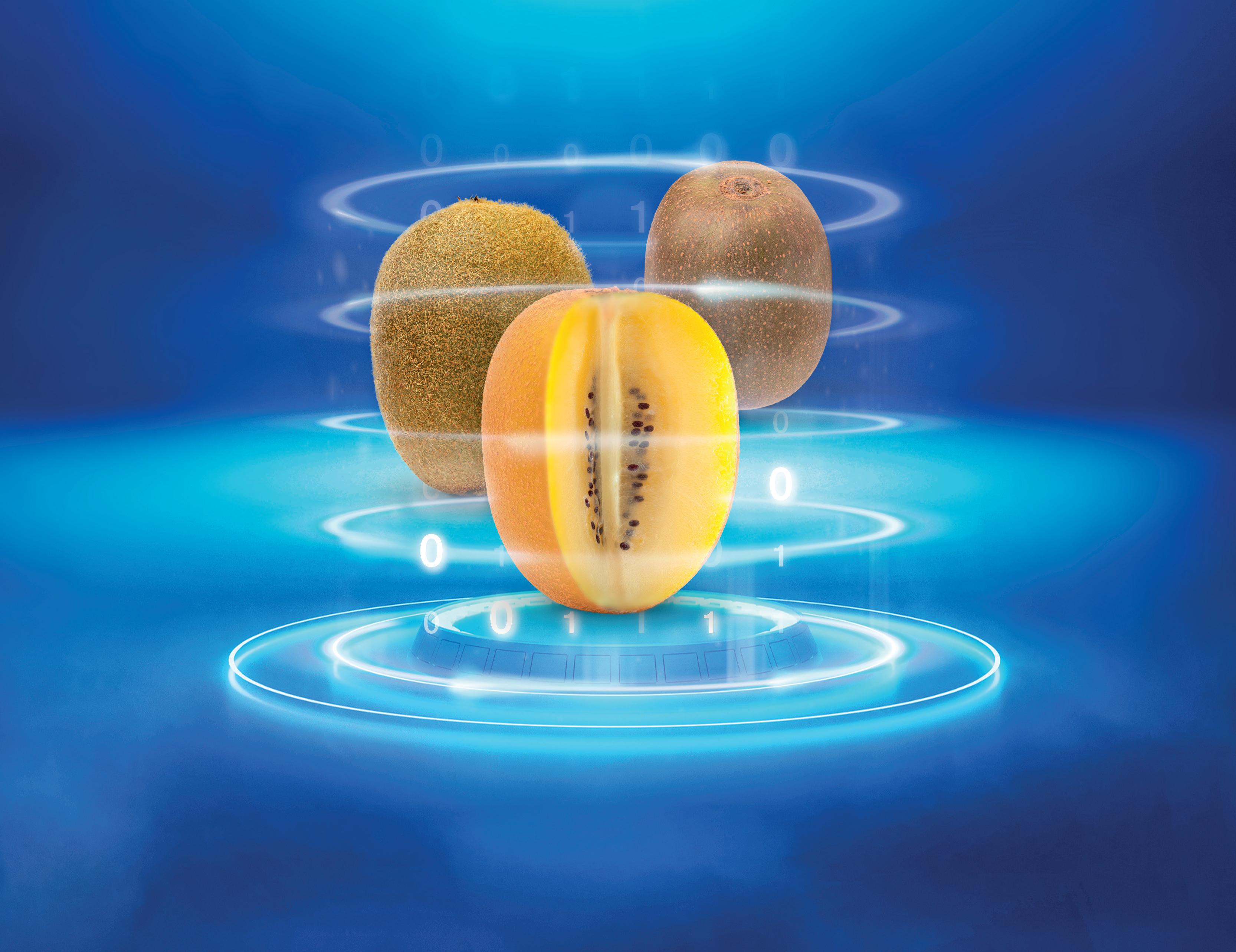
With Kiwi Vision 3 and UNIQ Kiwi your kiwifruit have more value. Nothing is left to chance thanks to an efficient and complete sorting of the qualities: external quality and internal quality, in addition to weight, optical size and color



FRESKON
Thessaloniki, Greece
April 10-12, 2025
Pav.15 - Booth C2-C3
UNITEC Headquarters Via Prov.le Cotignola, 20/9 - 48022 Lugo RA - Italy - Ph. +39 0545 288884 - unitec@unitec-group.com unitec-group.com
The potential impact of Donald Trump’s tariff wars remains highly uncertain, but for European vegetable exporters targeting the US market, much may depend on the availability of alternative sources.
by Tom Joyce
Export volumes of European vegetables to the US may not be massive, but the imposition of a 20-25 per cent tariff on EU imports would certainly create challenges for those targeting the US market.
Many European vegetable exporters have been increasing their focus on the US market in recent years, and this measure risks hurting their competitiveness, according to Steve Alaerts of Antwerp, Belgium-based logistics service provider Foodcareplus.
Alaerts foresees various possible eventualities, not all of them negative, but argues fervently against such obstacles to fair trade.
“At Foodcareplus, we strongly support fair and thriving international trade, and we align with the International Fresh Produce Association’s (IFPA) position, which states that fair trade expands markets, drives prosperity and ensures access to fresh, nutritious foods worldwide,” he said. “While tariffs can sometimes address trade imbalances, their broad application

disrupts supply chains, raises costs for consumers and places unnecessary strain on growers and producers. Instead, IFPA advocates for swift and meaningful regulatory relief and reform as the most effective way to support agriculture and strengthen food security.”
Research from ABN Amro predicted that Dutch food exports to the US — worth around €2.3bn in 2023 — would be more than halved were a 25 per cent import tariff fully passed on to customers, according to Financieele Dagblad.
Only Spain sends more vegetables from the EU to the US, but Dutch vegetables have already seen a decline to the market in recent years. Exports stood at 8,850 tonnes in 2024, according to statistics from Eurostat, nearly half the volume sent to the US in 2019. France was in third place in 2024, sending 2,412 tonnes


of vegetables to the US, including shallots from the region of Brittany.
According to Pierre Gélébart of marketer Prince de Bretagne, French shallots have already faced a tax of 100 per cent that has caused export volumes to plummet over the years.
“Shallots produced on the West Coast of the US are sent by truck to the East Coast,” he explained, “but it’s actually cheaper to ship French shallots by container across the Atlantic.”
A silver lining for fourth-placed Belgium is that its vegetable exports to the US remain limited, falling to just 739 tonnes last year, according to Nele Van Avermaet of VLAM, Flanders’ Agricultural Marketing Board.
“There are some exports of vegetables, but these have been
LEFT—Many European vegetable exporters have been increasing their focus on the US market
BELOW—Steve Alaerts of Foodcareplus
declining year after year, mainly due to decreasing volumes of Belgian endives,” she told Eurofruit “Additional tariffs might be the final blow to these already limited export volumes.”
However, there is good news for Belgian endives. Van Avermaet pointed to a Rabobank study on the importance of price elasticity in determining the impact of tariffs on a given product.
“If a product operates in a highly competitive price market, higher tariffs will have an impact, as buyers will simply look for the product from another supplier or within their domestic market,” she said. “However, if a product is price inelastic and the market does not react to price increases (Rabobank uses EU olive oil as an example), the impact of the tariffs will be less significant.”
Van Avermaet fears that many Belgian and European fruits and vegetables are fairly easily replaceable by alternative sources. Certain products, on the other hand, including Belgian endives and celeriac, are mainly produced in the affected regions of the EU, Canada, China and Mexico, she observed. E

Geopolitical antagonism in North America and Europe looks set to make things a little rough for the fresh produce business in the next few months and years. North America’s importers are “concerned” about the impact that US President Donald Trump’s tariffs on imports from Canada, Mexico, and potentially the EU, could have on fruit and vegetable prices, the health of consumers, and the longterm sustainability of the region’s fresh produce trade. And as trading partners retaliate, the outlook for US produce exports looks bad. In Canada, for example, there are already signs that consumers plan to boycott US imports.
Writing for Fruitnet, former Pear Bureau Northwest CEO Kevin Moffitt said the negative consequences in terms of US market prices could soon be all too apparent. “Fruit and veg prices could be impacted very quickly, making popular imported berries and avocados from Mexico more expensive to American consumers for example,” he explained. US fruit exporters also stand to lose out as a result of retaliatory duties imposed by Canada and Mexico in response to the US import tariffs, he suggested.
The Southern Hemisphere’s apple production is up, its pear production is down. That’s the headline from Wapa’s latest forecast, which compiles data from Argentina, Australia, Brazil, Chile, New Zealand and South Africa. In New Zealand, apple and pear exports have just topped NZ$1bn for the first time.
Spain appears to be producing less fresh produce, exporting more, and importing more. Egypt, Indonesia

and Ukraine have all overtaken the country when it comes to fruit and vegetable output. Faostat data shows its output fell by 10 per cent between 2020 and 2023, from 31mn tonnes to 28mn tonnes. And a separate report reveals that Spain spent more on fresh produce imports in January-October 2024. Morocco was the country’s leading supplier, but Peru and France have both caught up, with Portugal in fourth place.
“When there is an excess of supply, prices go down and when there is less supply, prices go up.” The words of Antonio Walker, president of Chile’s National Association of Agriculture and former agriculture minister, after this year’s record cherry export volume triggered a 50 per cent drop in prices ahead of the Chinese New Year festival. New data shows a 75 per cent increase in the country’s cherry export sales for this campaign, to US$1.1bn. But a 158.7 per cent rise in volume underlines the trade’s devaluation.
Peru’s mango exports seem to have recovered strongly after a disastrous 2023/24, according to new analysis. Exports reportedly totalled 129,115 tonnes worth US$184mn to December 2024, up 530 per cent in volume and 240 per cent in value compared with the year-earlier period.
In Argentina, producers in Río Negro warn that tens of thousands of tonnes of apples and pears could go unharvested in the first quarter of 2025. That’s because their costs are prohibitively high, they say, the result of exchange rates, falling consumption, oversupply, increased input costs, high taxes and a general decline in export volumes.
China could play a greater role in the international table grape market as a supplier, according to Riaan Swart of Dole. “The country has increasingly become a net exporter of grapes over the last three to four years and is still growing,” he commented.
Rwanda appears to be getting in on the avocado act. According to new government figures, weekly exports have risen from 2-3 tonnes in 2021 to 15-20 tonnes in 2023/24, driven by strong international demand.
ABOVE—It’s been a challenging season for Chile’s cherry exporters
British berry growers face an uncertain future as energy and labour costs increase. Despite record UK sales and strong sales growth, some argue unfair retail contracts threaten their survival. Meanwhile, David Sanclement, CEO of The Summer Berry Company, says the market could soon enjoy more year-round local supply, especially strawberries.
» LEFT—Washington apples at a supermarket in Canada (Photo: Hoang Bao Nguyen)
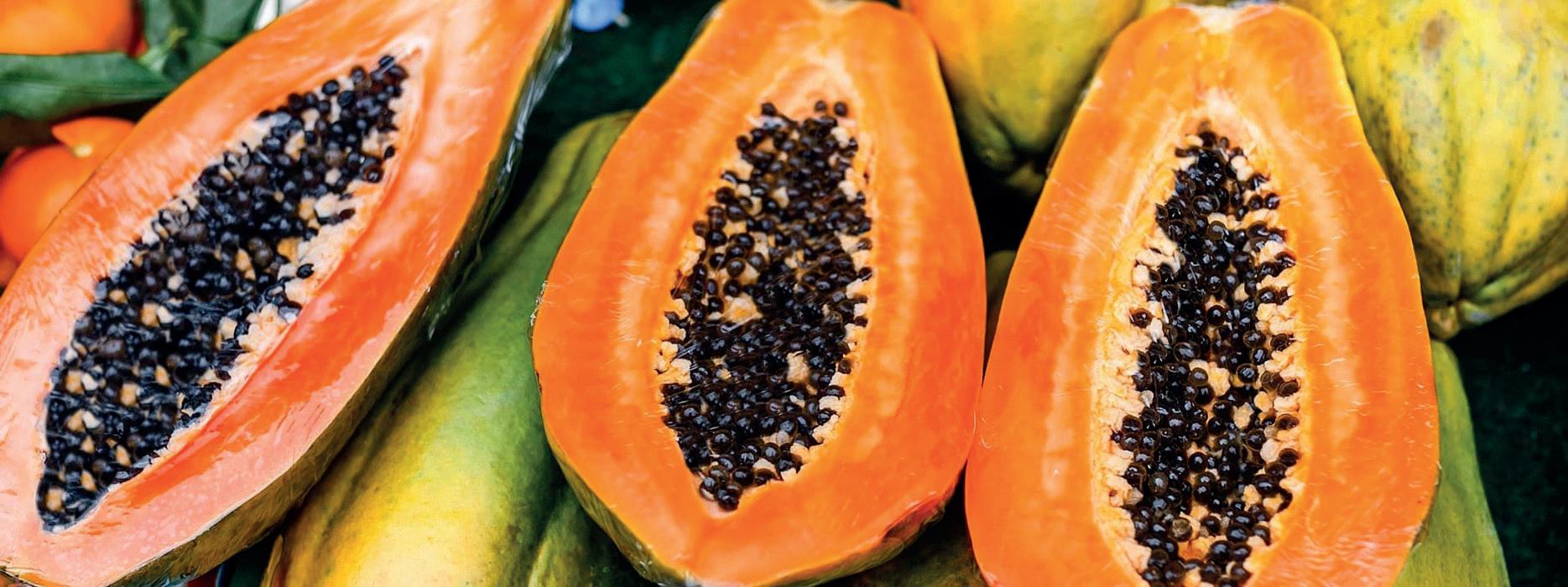
Avocados are the latest product in the fresh produce department that Aldi South Group has introduced to its new responsible sourcing model. Listen online to the latest episode of Fruitbox to hear our exclusive interview with Franka Rodriguez, director of global sourcing at Aldi South Group.
UK market leader Tesco says papaya is now its fastest-growing fruit line, with demand for fruit rocketing by 160 per cent in a year. Tesco has also teamed up with AMT Fresh and Bloom Fresh to create new packs that categorise grapes by tropical flavour, candy flavour, or crunchiness.

New research published by GroentenFruit Huis shows that shoppers in the Netherlands spent less on precut vegetables last year and instead spent more on cheaper meal kits that combine different vegetables needed for specific recipes.
BerryWorld has agreed terms with Tropic Cool Israel to establish Rwanda Berries, a commercial-scale berry farm in Rwanda. The venture plans to export to nearby markets in the Middle East, Europe and Central Asia.
Dutch cooperative Zon has added several new members – all of them major suppliers of fresh produce with their own large-scale retail contracts –in a sign of further consolidation in the Netherlands’ fresh produce supply base. Fellow Dutch marketer The Greenery, meanwhile, has just secured new subsidy funding to support its growers and help them develop more sustainable supply chains.
In neighbouring Belgium, Greenyard has posted a 5.6 per cent increase in sales for the nine months to 31 December, taking its net revenue to €3.95bn.
Mission Produce has added more than eight sources to its global sourcing network in the last year, as it seeks to meet growing global demand for products including avocados and mangoes.
Berry breeder Planasa has acquired ABZ Seeds, a breeder of seed-propagated F1 hybrid strawberry varieties.
ABOVE—Papayas are Tesco’s fastest-growing fruit product LEFT—Berryworld’s blueberry portfolio includes Mountain Blue variety Eureka Sunrise
»

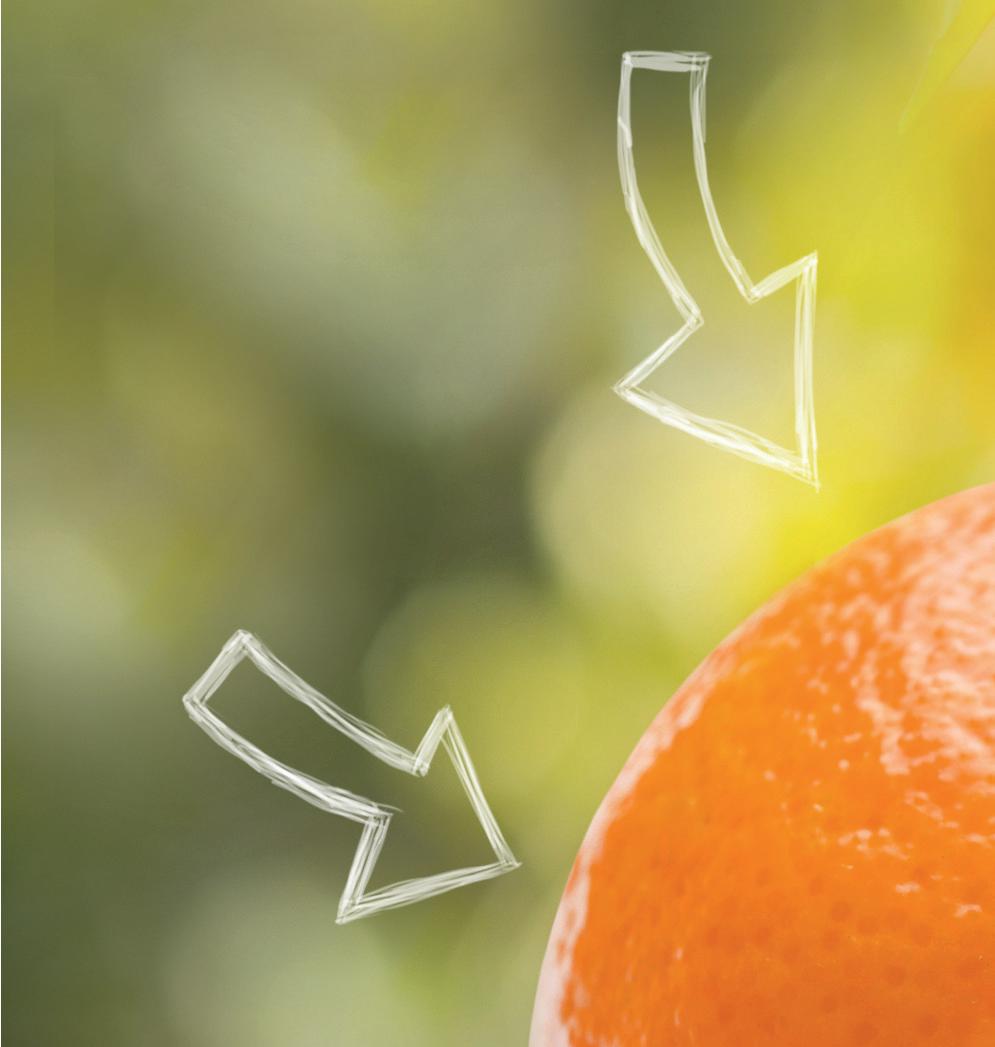
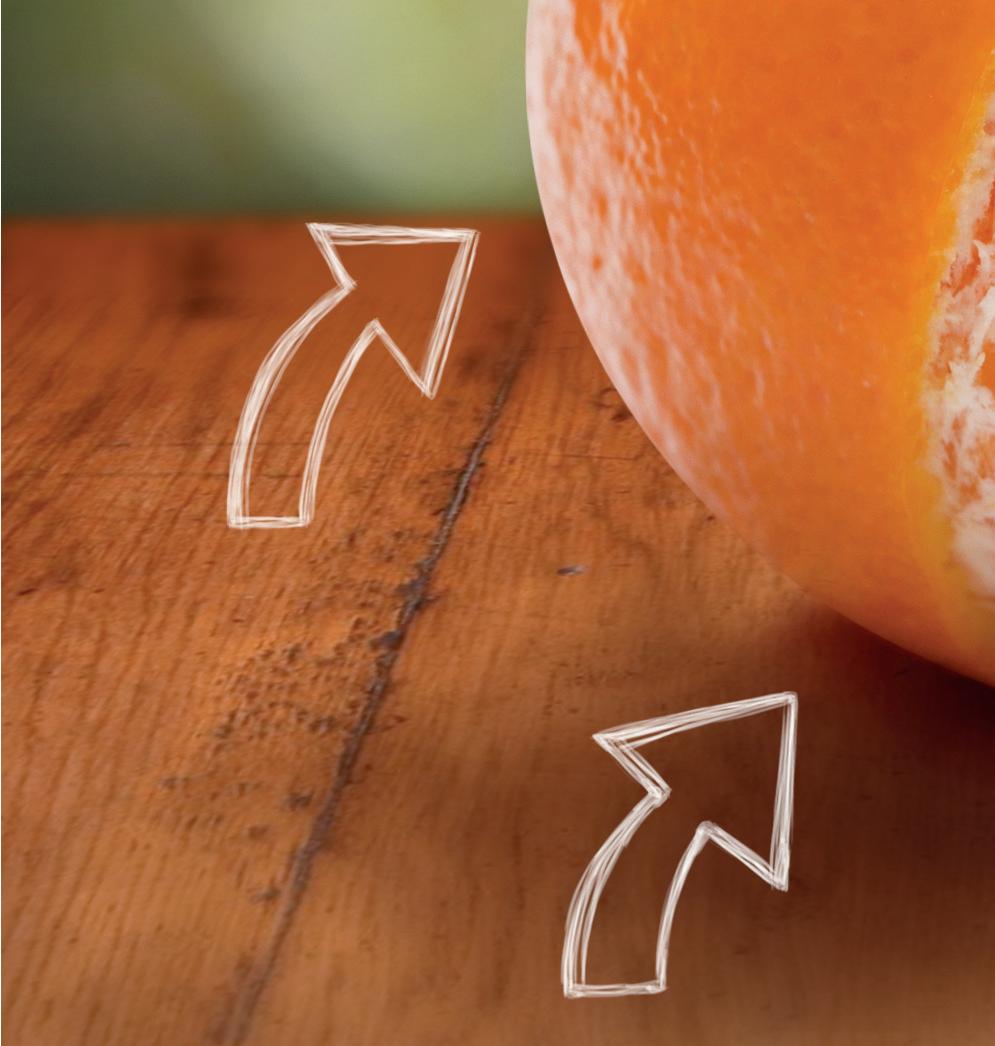


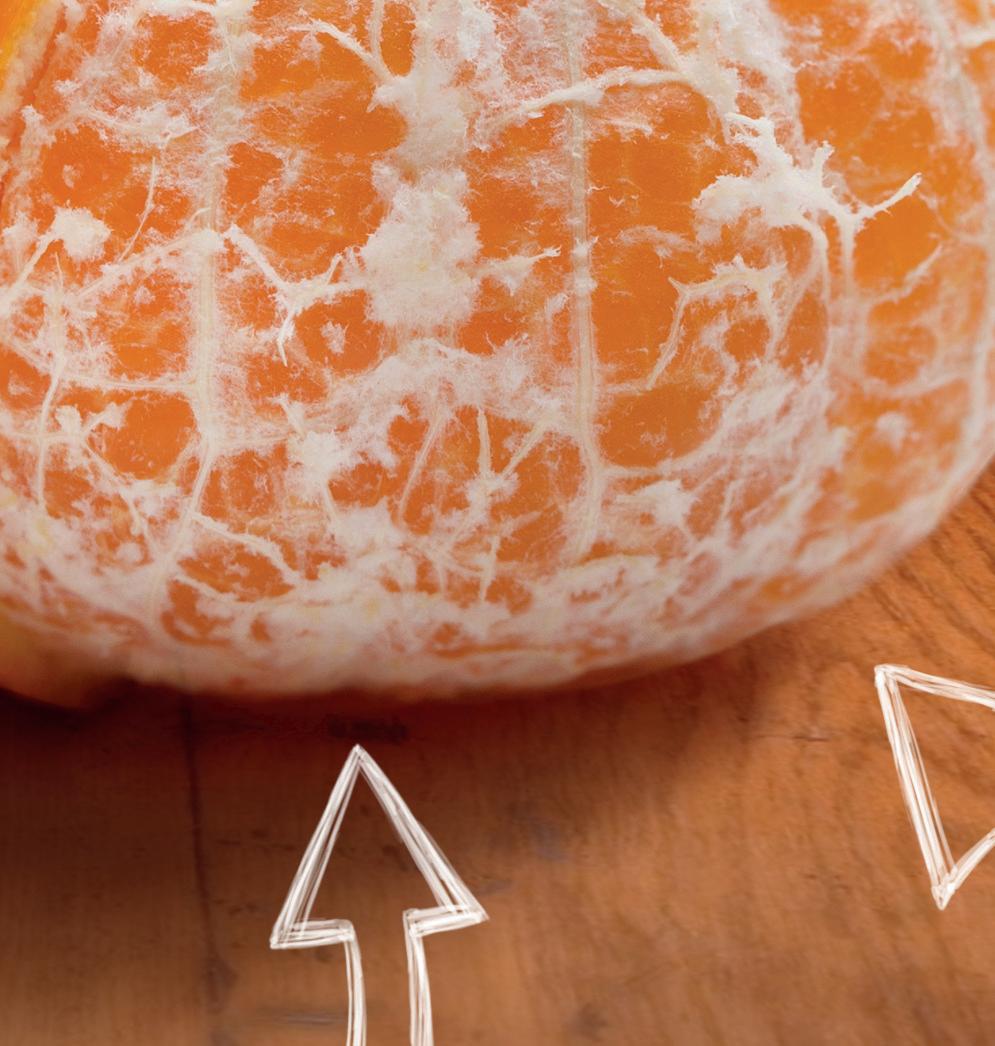



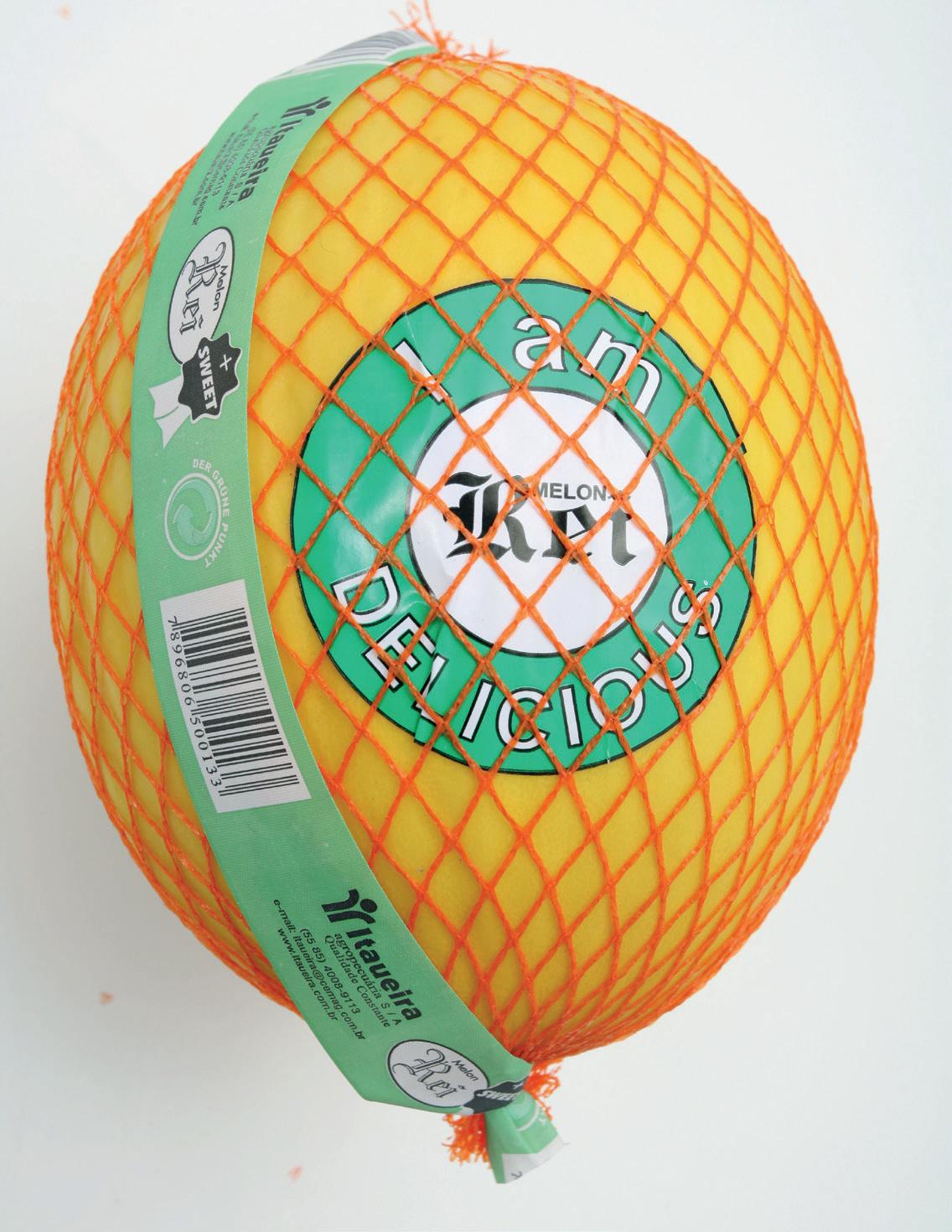

Italian company Battaglio has consolidated its historic ties with the Corrales family-run pineapple plantation in Alajuela, Costa Rica, to form export joint venture Agricola El Camino. The new company will operate around 500ha of production in what is regarded as one of the best-suited areas for pineapples in the country.
Freshmax Group, a leading player in the Australasian fresh produce industry, has announced its acquisition by Sydney-based alternative investment manager, Roc Partners.
In the US, Vanguard Group International has added citrus – including mandarins and oranges from South America, Egypt, Israel, Morocco, and South Africa – to its North American sales and distribution arm, Vanguard Direct.
Itaueira says it will export its Rei-branded yellow melons again, after a seven-year break. The Brazilian supplier is just one of many that aim to capitalise on new international demand.
The Southern Hemisphere Association of Fresh Fruit Exporters (Shaffe) has named Nathan Hancock of Citrus Australia as its new president, and also appointed Jorge de Souza of Abrafrutas in Brazil as vice-president.
The president of Sun World International, Bernardo Calvo, has been promoted to chief executive officer, with David Marguleas moving to executive chair.
Planasa has appointed Hans Liekens as global head of innovation. He was previously value chain and retail manager at blueberry variety brand Sekoya, and before that worked as commercial manager for EMEA at Fall Creek Farm & Nursery.
Giulia Montanaro, former head of international relations at the country’s apple industry association Assomela, has joined Italian apple brand Sambòa as its general manager.
The California Table Grape Commission has appointed Alexandra Merritt as director of global marketing and Lisa Massie as director of international marketing for Asia, following the recent retirement of Susan Day
Oppy’s John Anderson will join a list that includes eight US presidents – including Ronald Reagan and Jimmy Carter – when he receives the International Humanitarian Ellis Island Medal of Honor. The ceremony takes place on 10 May.

Berry marketer Driscoll’s plans to introduce its premium range Sweetest Batch in new markets like the Middle East, Germany and eventually the UK after successful roll-outs in the US and Australia.
Strong demand combined with New Zealand’s largestever (190mn trays) – and earliest-ever – crop has put the kiwifruit exporter Zespri on track to exceed its global revenue target of NZ$4.5bn this season. Included in that figure are more than 3mn trays of RubyRed kiwifruit, which means the variety will be available for the first time in some markets.
Nador Cott Protection has taken legal action against a second unnamed British retailer over what it says is the “unauthorised sale” of Tango/Tang Gold mandarins.
Spanish tropicals specialist Montosa says it has reduced its use of plastic packaging by 90 per cent in the last three years, substituting it for a number of other types.
In the UK, Sainsbury’s is switching its own-brand avocado twin-packs from plastic to paper packaging, in a move it says will eventually save 20.2mn pieces of plastic a year.
Officials in China are to destroy the 1,300 containers of Chilean
OPPOSITE TOP—Brazilian exporter
Itaueira’s Rei-branded melons are set to return to export markets this year
OPPOSITE BOTTOM—Giulia Montanaro has joined apple brand Sambòa LEFT—Jana Lehmann shows off the new Driscoll’s packs at Fruit Logistica 2025

cherries left in poor condition when the Maersk vessel Saltoro was stranded in the Pacific for more than 20 days. The consignment included more than 24,000 tonnes of fruit valued at more than US$120mn.
Greenyard subsidiary Bakker Barendrecht has started construction on a new commercial facility in the Netherlands. The building will include mechanised warehousing, meal-kit production, new production lines, and the largest ripening centre in Europe.
Contecon Guayaquil has opened Ecuador’s first on-dock coldstorage facility in partnership with Cool Carriers. The hub is expected to offer a faster, seamless cold chain for the country’s banana exports.
A new report says inefficient logistics cost South Africa’s citrus industry R5.27bn (€270mn) last season, a figure that outgoing CGA chair Justin Chadwick describes as “a debilitating loss of revenue”. E





















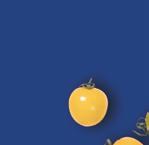





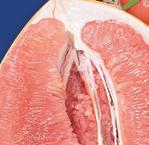








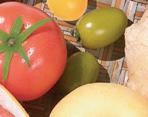





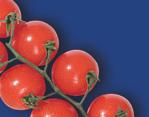

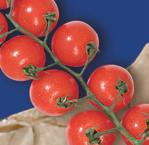


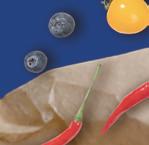

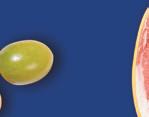

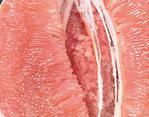
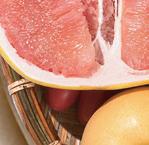
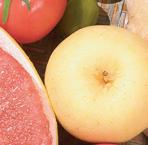






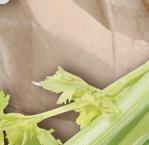










AMFresh landed the Fruit Logistica Innovation Award 2025 for Onix, with Croptimus by Fermata Technology taking the FLIA Technology prize.
by Carl Collen
AMFresh held off strong competition to win the prestigious Fruit Logistica Innovation Award 2025 in Berlin for its Onix orange.
According to the Spanish group, the deep burgundy orange “combines stunning multicolour beauty with a seedless, velvety pulp, rich in antioxidants”. Sized 85–105mm, it is available loose or in premium three- or five-piece packs and is sustainably grown in Spain.
It triumphed over four other innovations, including Aldina, a marketing concept for a strawberry variety from Frutania offered exclusively by Aldi Süd; Halloweena, a mini pumpkin-shaped mandarin from Genesis Fresh in Spain; Eosta’s Organic Raingrown Avocado which is produced in regions where natural conditions are ideal; and Samantha, the world’s first pointed headed cabbage with a savoy texture, from Bejo Zaden in the Netherlands.
“This is fantastic,” said Patricia Sagarminaga, global director marketing and communications at AMFresh Group. “We have this amazing, out-of-this-world fruit that is grown in the sunny orchards of Spain, and being able to deliver that to the world is such a gift. To win this award is a tremendous recognition for the breeder, the grower, and for everyone at AMFresh and Genesis Fresh.”
Meanwhile, Israel’s Fermata Technology won the FLIA Technology prize, impressing voters at the event with Croptimus.
Croptimus is an SaaS solution tailored for greenhouse vegetable production, utilising advanced AI coupled with computer vision to identify pests and diseases early.
Other nominees for the technology award were ABZ Innovation’s Lidar based sensing system for a spraying drone, the Catsystem from Productos Citrosol, WayBeyond’s FarmRoad Irrigation Module, and the Rypen Case Liner from It’s Fresh in the UK.
“I feel amazing,” said Valeria Kogan, founder and CEO of Fermata. “It’s my first time at Fruit Logistica, and I’m very impressed by the scale and quality of the event. We are absolutely privileged to be part of it and to be recognised by it as well.” E
“To win this award is a tremendous recognition for the breeder, grower, and everyone at AMFresh and Genesis Fresh”
BELOW—The victorious companies, AMFresh and Fermata Technology, celebrating in Berlin BOTTOM—Patricia Sagarminaga of AMFresh signs the ‘winners wall’ following the announcement




The agri-food cooperative presented results for 2023/24 at its AGM in Algemesí, with turnover and sales volumes increasing.
by Carl Collen
Anecoop has revealed turnover growth of 11.6 per cent for the 2023/24 season, up to a record €945mn. The results were presented at the cooperative’s AGM, which was held in Algemesí. Volumes sold climbed 13.7 per cent year-on-year, it reported, up to more than 740,000 tonnes.
The combined turnover of all Anecoop Group companies also recorded its best-ever result, reaching €1.126bn – “significant growth” of 12.5 per cent compared to the previous campaign, with a total sales volume exceeding 1.1mn tonnes.
Anecoop said the result meant it had strengthened its position as “the leading Spanish company in the marketing of fruits and vegetables”, increasing its national export share to 5.04 per cent.
“This growth has been possible thanks to a series of management improvements we have implemented, including the reorganisation of the logistics department, greater digitalisation, the streamlining of some processes, and a reduction in expenses,” said Anecoop CEO Joan Mir.
Anecoop noted that the greatest challenges of the campaign had been rising costs, reduced labour availability and a higher incidence of pests and diseases, which were “increasingly difficult to combat”.
Furthermore, there had been

a decrease in fruit and vegetable consumption in Europe, the cooperative explained, customer supply policies with higher demands and a general trend toward fewer suppliers, and “increasingly fierce competition”.
The company sold 265,155 tonnes of citrus in 2023/24, representing a 5.53 per cent increase compared to the previous campaign. The fruit segment showed the strongest results, both in volume (277,996 tonnes, up 35.41 per cent) and in revenue, exceeding €346mn (up 31.85 per cent).
Persimmons performed well while melons and watermelon volumes recovered, Anecoop noted, while “significant growth” was recorded in stonefruit sales for the second consecutive year. The volume of berries increased by nearly 50 per cent, and vegetables also saw
The greatest challenges were rising costs, reduced labour availability and a higher incidence of pests and diseases
growth, rising 5.52 per cent in volume and 4.33 per cent in revenue to 177,855 tonnes and €285mn respectively.
Anecoop said that, in the face of the fragmentation of the sector, it was promoting integration and cooperation as key to improving the scale of agri-food cooperatives to become more competitive and profitable.
“We continue to be committed to integration and cooperation to face the challenges of a global and competitive economy,” said Anecoop president Alejandro Monzón. “This challenge for the sector goes alongside the adaptation to climate change, innovation, digitalisation, the transition to more sustainable agriculture, investment in R&D, and the promotion of generational renewal.” E






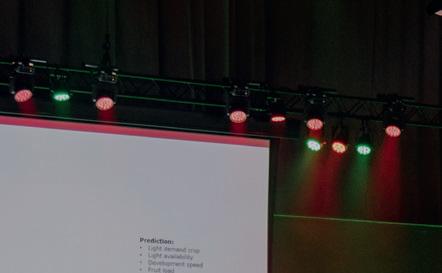


















Fruitnet Live specialises in creating high quality, content rich, commercial networking conferences for the fresh produce industry held around the globe. These live events provide the best arena to connect with present and future clients, discover new trade opportunities and to shape the future of your business.
The European Commission’s proposed Omnibus simplification package would slash the number of businesses impacted by regulations like the CSRD and EU Taxonomy.
by Tom Joyce
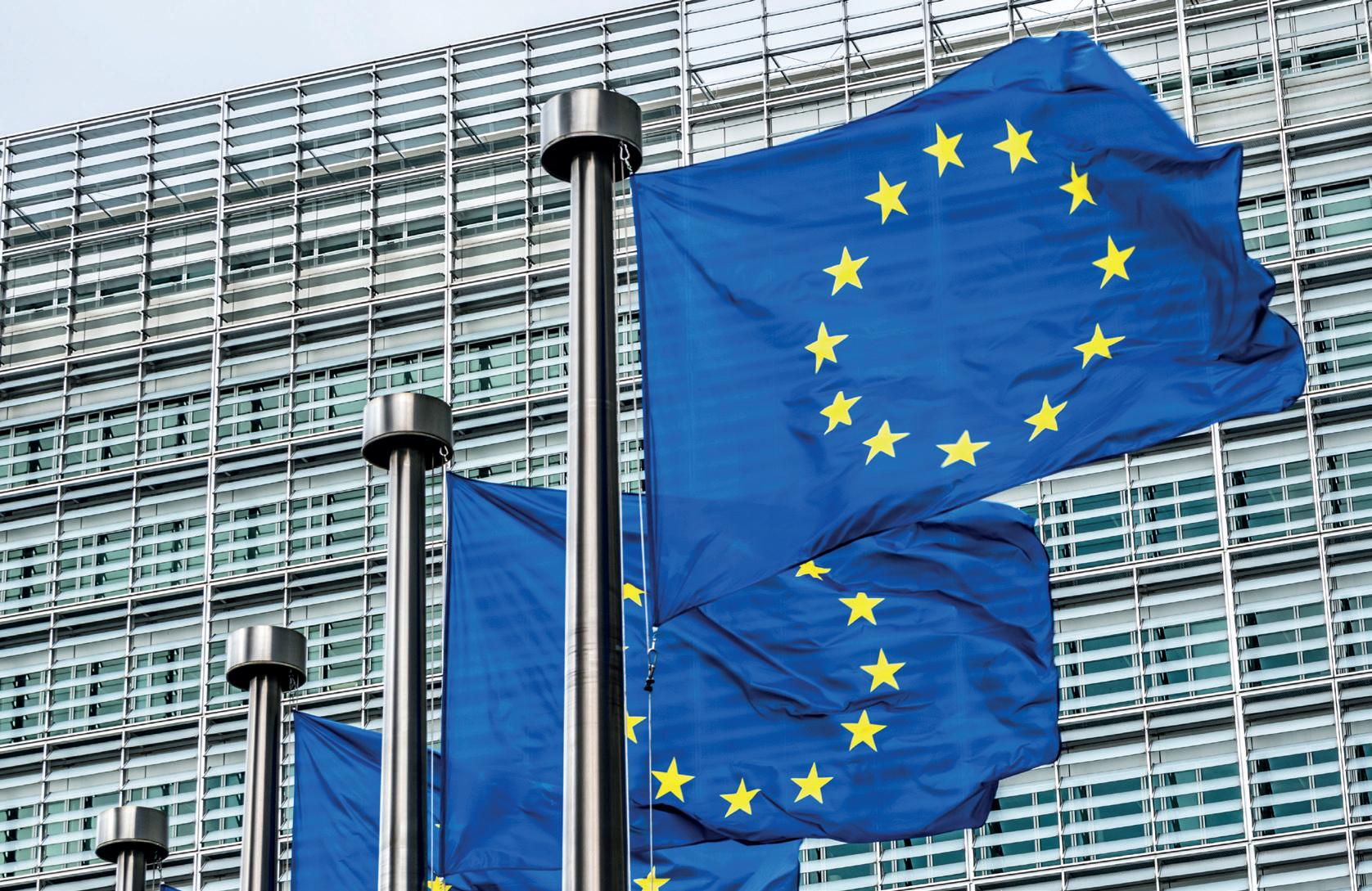
The European Commission has announced a new package of proposals aiming to “simplify EU rules, boost competitiveness and unlock additional investment capacity”.
“This is a major step forward in creating a more favourable business environment to help EU companies grow, innovate and create quality jobs,” the Commission stated.
However, critics said that limiting the Corporate Sustainability Responsibility Directive (CSRD) would be a backward step for EU sustainability and raised questions over how the EU’s Green Deal could be achieved.
The CSRD requires companies to disclose information about their environmental and social impact,
to boost sustainability and increase transparency for investors and consumers.
Robin Hodess, CEO of the Global Reporting Initiative (GRI), commented: “If the Commission aims to make European business more competitive, then cutting the ambition of the CSRD is a backward step, given the crucial importance of sustainability data in driving innovation and investment into Europe. It also raises serious questions about how to achieve a climate-neutral EU as the cornerstone of the Green Deal.”
The CSRD is currently designed to cover around 50,000 companies with more than 250 employees. By only applying to firms with more than 1,000 employees, the proposed changes would remove around 80 per cent of companies from the scope of CSRD. The same exemption would be applied to the EU’s “taxonomy”, which defines what can be considered a climate-friendly investment.
Ursula von der Leyen, president of the European Commission, announced: “Simplification promised, simplification delivered!”
The EU Commission argued that the proposals would bring savings of around €6.3bn and mobilise investment capacity of €50bn.
“By bringing our competitiveness and climate goals together, we are creating the conditions for EU businesses to thrive, attract investment, achieve our shared goals – such as the European Green Deal objectives – and unlock our full economic potential,” the Commission said.
However, the GRI urged the Commission to continue showing global leadership on the issue of sustainability, not least for the bloc’s economy.
“Promoting sustainable business is a strategic imperative and an area in which Europe has long shown global leadership,” the GRI stated.
“The Commission, EU institutions and Member States must maintain the ambition of the CSRD during the upcoming negotiations. Only then can they enable effective reporting that meets the needs of stakeholders, including investors, and supports a sustainable and resilient EU economy.”
The legislative proposals are set to be submitted to the European Parliament and Council for their consideration and adoption, with EU member states and Parliament still in a position to block the changes. E
ABOVE—Critics say limiting the CSRD is a backward step for the EU’s Green Deal

Organic farming means complying with the rules governing organic farming. These rules, based on general and specific principles, aim to promote environmental protection, preserve biodiversity in Europe and increase consumer confidence in organic products. And these are marked with a special logo for organic farming, the eco-label (Green Leaf). The EU organic logo makes it easier for consumers to recognise organic products and helps farmers to market them throughout the EU.
These regulate all areas of organic farming and are based on several basic principles such as the ban on GMOs, the ban on ionising radiation, and the restriction of the use of chemical fertilisers, herbicides and other chemical plant protection products. Consequently, organic producers must take various measures to maintain soil and crop fertility: crop rotation, growing nitrogen-fixing and other crops as green manure to restore soil fertility, banning the use of mineral nitrogen fertilisers; and to reduce the impact of weeds and pests, organic farmers choose resistant or more tolerant varieties and practices that promote natural pest control.
These play an important role in informing consumers about the origin and characteristics of the products. Such labels can contain key symbols and indications that the product meets certain environmental standards. In Europe, for example, the Euro leaf is a popular label. An additional label is also ‘GMO-free’, which means that the product does not contain genetically modified organisms. The manufacturer or supplier can also provide information on the labels about how the production and packaging of the product impacts the environment. The production conditions can be indicated, while other information can relate to quality. These labels help consumers make informed purchasing decisions while supporting sustainability and environmental protection.
The organic food logo, the Green Leaf, provides the EU with a unified
visual identity for organic products sold on the old continent, and must meet strict conditions regarding their production, transport and storage. This helps EU consumers recognise organic products and makes it easier for farmers to market them in all EU countries.
The labelling of organic products has a significant impact on the market on several levels, such as increasing consumer awareness of the origin of products and their impact on the environment, which in turn increases their interest in organic products. Demand for organic products supports farmers and producers who use environmentally friendly farming practices. Growing trust in products with the Green Leaf label can ultimately lead to stronger brand loyalty and higher profitability, while products labelled as organic can be sold at higher prices, creating a premium segment.
In response to the challenges of the rapidly developing organic market and to create an effective legal framework for the sector, the EU has adopted new rules for the organic sector, which apply from 1 January 2022. Examples of changes introduced with the new organic rules include strengthening the control system and thus increasing consumer confidence in the EU’s organic production system; new rules for producers that will make it easier for small farmers to switch to organic farming; new rules for imported organic products to ensure that all organic products sold in the EU meet the same standards; and a wider range of products that can be marketed as organic.

Board says Hiller and new CFO Matthias Rapp “identify strongly” with goals of becoming more robust and profitable as group faces up to financial challenges.
by Carl Collen
BayWa AG has announced that its supervisory board has approved the appointment of Dr Frank Hiller as chief executive officer and Professor Dr Matthias Rapp as chief financial officer.
Hiller and Rapp were appointed to the board of management on 1 March, the group confirmed.
Supervisory board chairman Gregor Scheller said that, with BayWa undergoing a strategy of transformation, the new officers “identified strongly” with its goals – adding that Hiller and Rapp had experience when it came to leading companies facing difficulties.
“BayWa is undergoing the greatest transformation in its history,” Scheller stated. “The company needs to become sustainably more robust and profitable, and to do so it is focusing on its core business areas. We are therefore delighted to welcome the two new members of the board of management, who identify strongly with these goals.
“Dr Frank Hiller has an impressive track record and extensive experience in managing various companies in difficult times,” he continued. “Above all, however, he is a manager who puts the customer first. We on the supervisory board are convinced that he will shape the strategic development of the company along the defined guidelines and successfully implement the associated ideas. The management
team will thus lead BayWa into a solid and successful future.”
Scheller pointed out that Rapp had “extensive expertise” in financial management.
“He has proven time and again that he can successfully lead companies through difficult financial challenges and has strong communication skills,” he noted.
“Both gentlemen have assured the supervisory board that it is their personal goal to lead BayWa back to success for the benefit of our customers, suppliers and employees.”
Hiller said he was excited to be joining BayWa and was ready to take on the challenges faced by the group.
“We are facing a fundamental transformation that has been triggered by major financial challenges,” he said. “BayWa is firmly rooted in agriculture and has always enjoyed an excellent reputation among its customers. Our top priority will be to restore BayWa’s good name in the market. I will do everything in my power to lead the company back to its usual stability and commitment,” Hiller commented. “This is what our customers, our shareholders and our employees expect.” E


“BayWa needs to become sustainably more robust and profitable, and to do so it is focusing on its core business areas”
TOP—BayWa’s new chief executive officer Frank Hiller
ABOVE—Chief financial officer Matthias Rapp
Southern Hemisphere Association of Fresh Fruit Exporters appoints Nathan Hancock as president with Jorge de Souza vice president.
by Carl Collen
The Southern Hemisphere Association of Fresh Fruit Exporters (Shaffe) has unanimously elected a new president and vice-president.
Shaffe’s presidents and vicepresident serve two-year terms, and in February 2025, Marta Bentancur’s term as president of the association ended. Shaffe said that, over the past two years, Marta had “reinvigorated” the association and “secured its financial and administrative stability”.
“Bentancur led the association into very active times by setting up various working groups focusing on, for example, logistics, sustainability and market access,” the association outlined.
“In addition, Marta drove the improvement of the association’s new collection and reporting system for statistical data on exports and production of fresh fruits in the Southern Hemisphere, which remains one of the group’s core activities.”
The association’s staff and members expressed their gratitude for the work Bentancur had done to enable the association to tackle all future challenges through open dialogue and collaboration between all players in the Southern Hemisphere fruit industry.
Taking over from Marta is Nathan Hancock, CEO of Citrus Australia, the peak industry body representing Australian citrus growers. In his position, Hancock
“As Shaffe’s president and vice-president, Nathan and Jorge will work to further professionalise the association”
plays a key role in supporting growers and exporters through market development, biosecurity initiatives, and industry advocacy.
Hancock also serves as the chair of the Plant Health Australia Plant Industry Forum and as the chair of the Horticulture Council Market Access Committee, “demonstrating his leadership in plant health and international trade policy”.
Jorge de Souza, technical and project manager of Abrafrutas in Brazil, will serve as vice-president.
“As Shaffe’s president and vice-president, Nathan and Jorge will work to further professionalise Shaffe and grow its role as the representative of the Southern Hemisphere fruit industry, enhancing collaboration between players in the industry and addressing key global trade and production challenges,” the association commented.
Shaffe represents the leading fresh fruit production and export associations in Australia, Brazil, Chile, New Zealand, Peru, South Africa, Uruguay and Zimbabwe. E

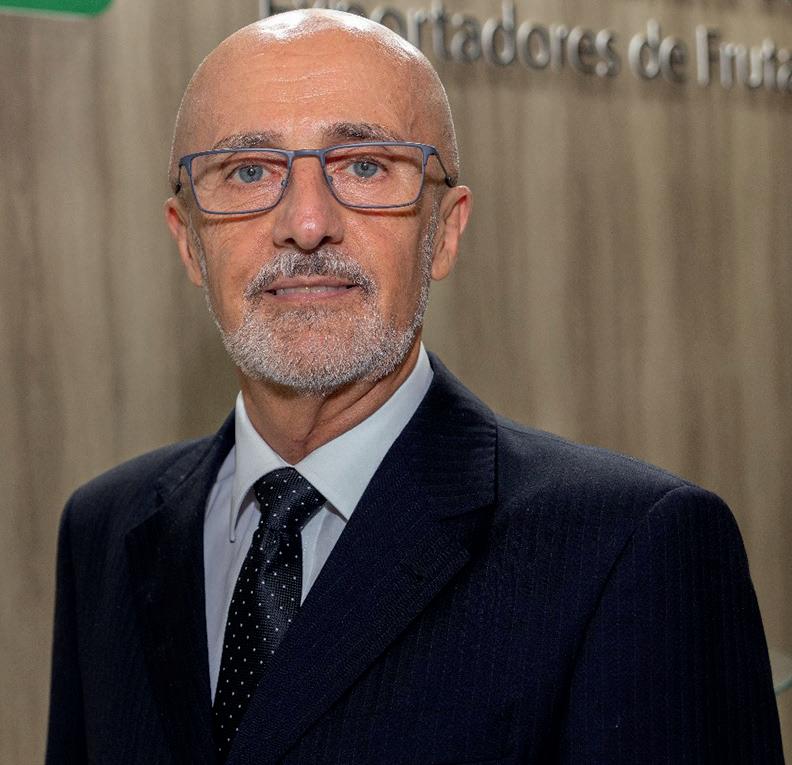
As European buyers look to diversify their supplies of tomatoes, Exim Agro’s Yorkin Inamov believes Uzbekistan has an opportunity to grow its share of the market.
by Tom Joyce
As European tomato production faces mounting challenges, from climate instability in Spain to growing logistical difficulties, Uzbekistan is emerging as an alternative source, according to Yorkin Inamov, founder of exporter Exim Agro, since the Central Asian country’s climate offers optimal conditions for tomato cultivation.
Inamov highlighted the country’s four-season environment, where hot summers and cool nights stress the plants, resulting in tomatoes that offer exceptional flavour.
“The tomatoes from Uzbekistan are unlike anything you’ve tasted,” said Inamov, “especially varieties like Pink Paradise, which has a natural sweetness and depth that makes it stand out.”
Currently, Uzbekistan exports a range of products, including fresh and freeze-dried tomatoes, with a primary focus on markets like Russia. However, with shifting global dynamics, the company is expanding its reach to Europe, particularly as the continent grapples with tomato shortages.
Inamov points to the importance of diversifying sourcing to countries like Uzbekistan, which offer both high-quality products and stable production conditions.
The growth of the Uzbek tomato industry has not been without
challenges. Water availability and the rising cost of energy are issues, but the government has supported the sector with initiatives, helping producers like Exim Agro to gain a foothold on the global stage.
“One of the biggest problems for the European market has been that the majority of Europeans didn’t know that such a country as Uzbekistan existed,” said Inamov.
However, as Uzbekistan’s tomato exports grow, Inamov believes the country could become a significant player, particularly in the UK and Germany, where there is increasing interest in sourcing tomatoes from alternative regions. E

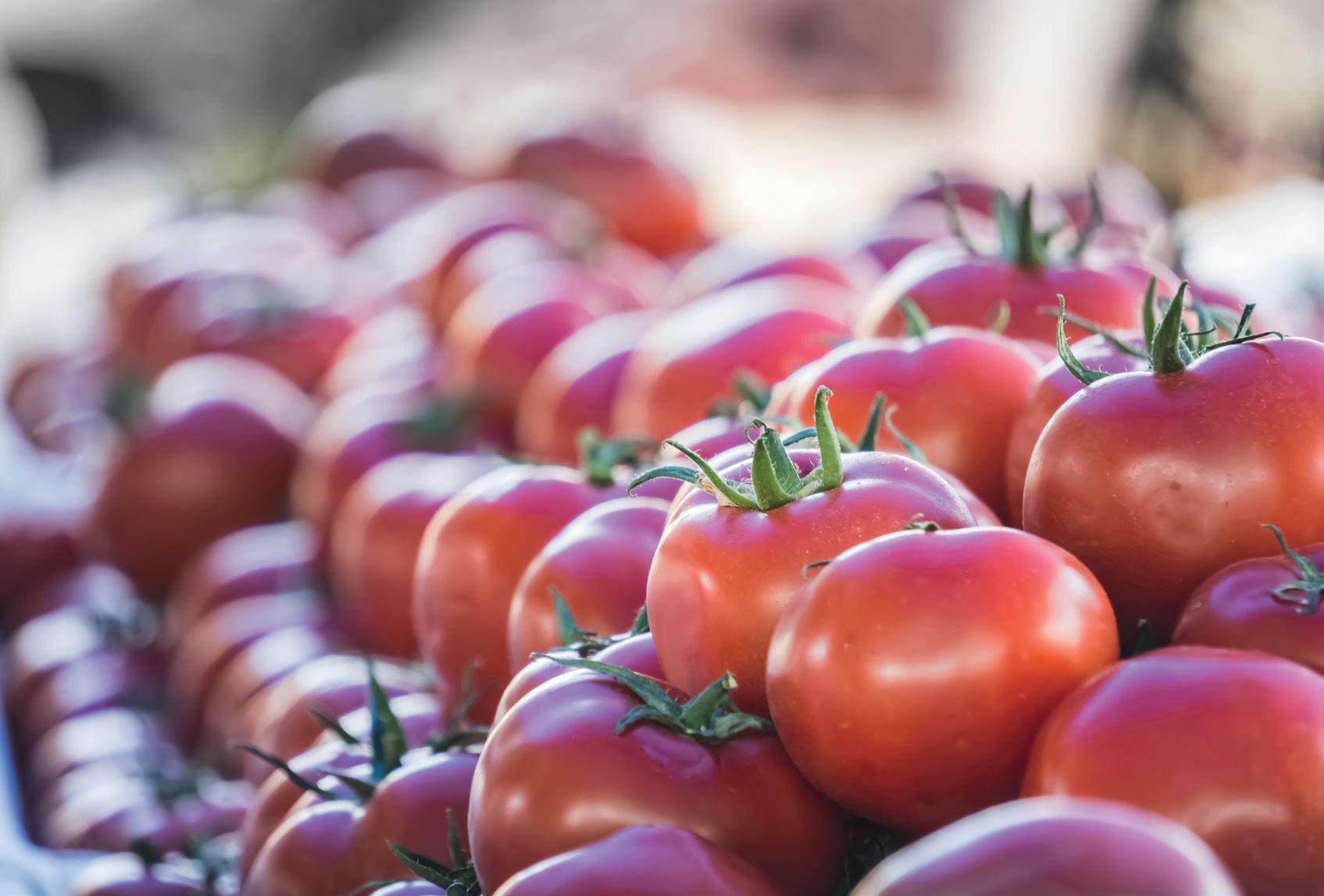
After the collapse of the Chinese market this season, who will absorb Chile’s extra production volume in the coming years?
by Maura Maxwell
Chile’s cherry industry is facing renewed calls to seek greater market diversification after this season’s disastrous results in China. The sector is set to rack up losses of at least US$1.6bn in 2024/25 according to analysis by the consulting firm Colliers. With exports now concluded, manager Rodrigo Gil said the signs are “not encouraging”, despite the industry previously forecasting that this would be its best season ever.
In China, which takes more than 90 per cent of Chile’s cherry output, prices collapsed following unprecedentedly high shipment volumes. Exports grew 60 per cent compared to last season, saturating the market and causing prices to fall by 50 per cent from 2023/24.
To add to Chile’s woes, the Chinese authorities confirmed that they had rejected the entire cargo from the Saltoro, the Maersk ship stranded in the Pacific for more than 20 days, due to the poor condition of the fruit. The vessel was carrying 1,300 containers of cherries valued at more than US$120mn.
“Based on the average expected returns of previous seasons, and the results that are we are seeing in the current one, the losses for producers and exporters are estimated at around US$1.6bn,” Gil said.
The estimate is based on average net return values of US$5/ kg to the producer in the past three
BELOW—Losses from the breakdown of the Maersk Saltoro run into tens of millions of dollars
BOTTOM—Chilean cherry exports are projected to reach 200mn cartons by 2030
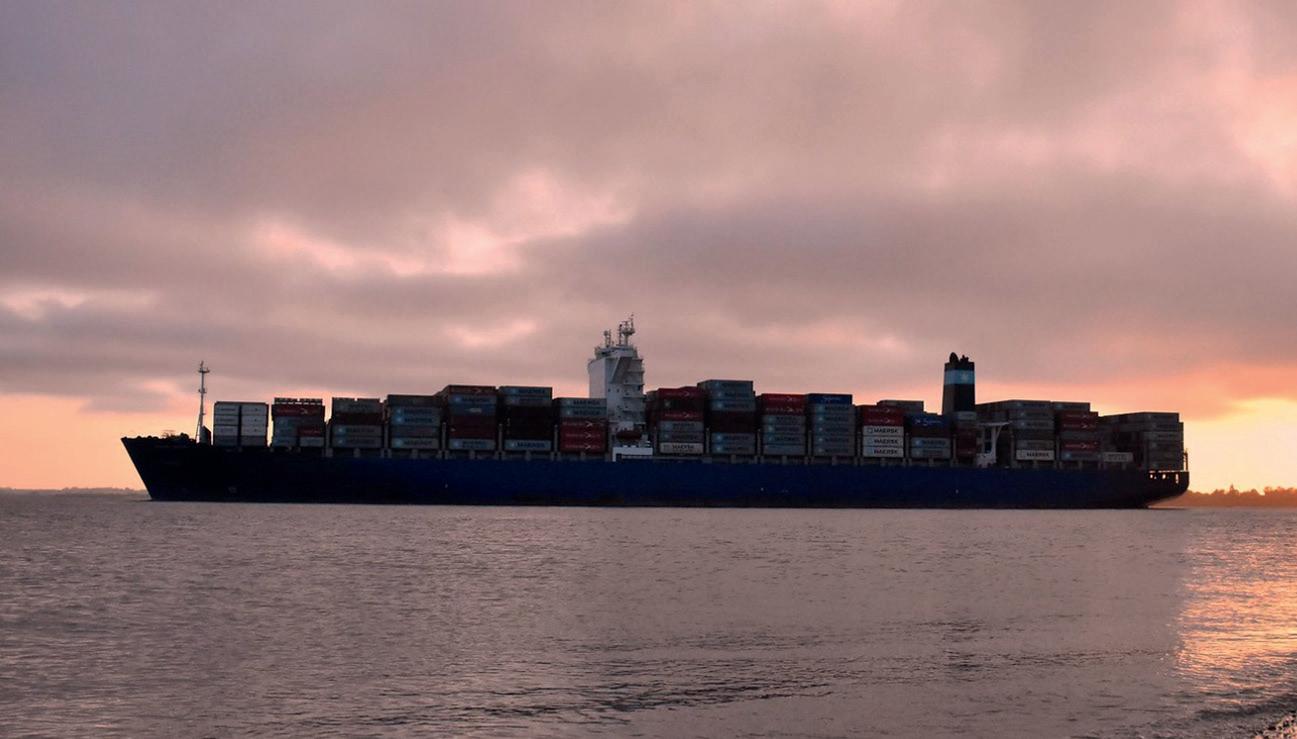
seasons, and an estimated return of US$2.5/kg in the most optimistic of scenarios for the current season.
Colliers cited several reasons for the losses, chief among them the dramatic increase in exports–which went from 83mn cartons in 2023/24 to 120mn cartons in 2024/25 – and the heavy concentration of arrivals ahead of the Chinese New Year at the end of January.
“An early Chinese New Year (29 January), the subsequent rush of Chinese importers to receive fruit and a rather cold spring season in Chile meant that the bulk of the first fruit shipments were cherries of not the best quality, mainly due to lack of ripeness, and this caused them to be quoted at a lower value than in 2024 and slowed down demand in China,” Gil explained.
He added that even when the fruit did arrive in its optimal state of ripeness, it did so in such large quantities and faced such a high

volume of accumulated stock that prices were unable to recover.
With nearly 80,000ha of cherries planted in Chile and export volumes projected to reach 200mn cartons by 2030, producers face an uncertain outlook in the coming years. What is clear is that banking on Chinese consumers to absorb this extra volume is no longer an option. E


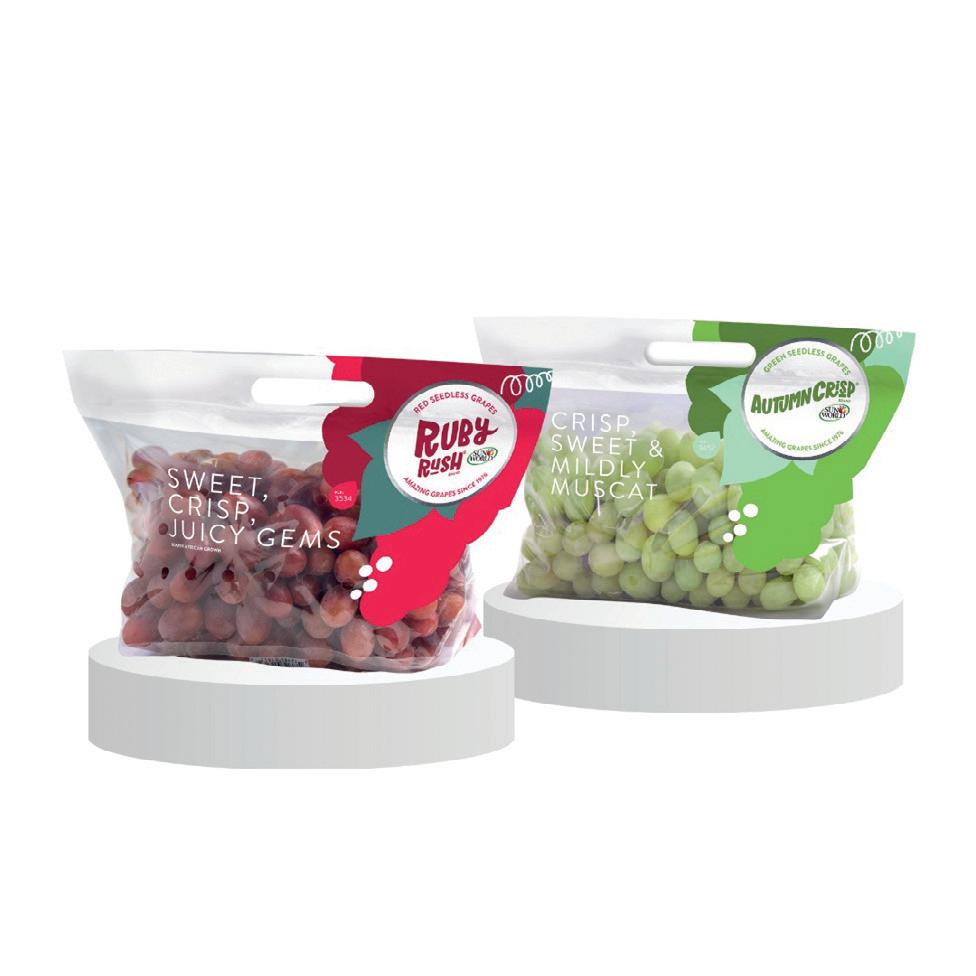
Sun World’s newly appointed CEO, Bernardo Calvo, heralds the arrival of a golden age for varietal development and what it means for growers worldwide.
By Maura Maxwell
Bernardo, congratulations on your appointment. What can we expect to see from Sun World in 2025?
Bernardo Calvo: Thank you! I’m grateful for the opportunity to lead a company that’s in exponential growth mode and has been for quite some time. We’re busy on a number of fronts and excited about what’s coming up in the year ahead.
We’re focused on new varietal offerings in 2025, particularly in table grapes. Last year we announced three brands that are now planted and commercially available in most countries in 2025. We’re encouraged
that Ruby Rush, Epic Crisp and Applause are generating strong retailer interest.
Demand for Autumncrisp grapes continues to escalate even beyond our bullish expectations, so that brand remains one of our top priorities. So much so that we’ve begun work on an a ractive Autumncrisp franchise extension to magnify the potency of that brand.
We are also very excited about the new opportunities we have with citrus, mangoes and avocados a er our successful acquisition of Biogold last year. This gives us the opportunity to offer our customers a broader portfolio to fulfil their needs and an opportunity for quick geographical expansion.
More broadly, our genetics pipeline is extraordinarily robust because of the work being done at our Centre for Innovation. I’m inspired by our incredible scientists and technicians every time I visit our labs. So, there’s a lot for our licensees to particularly look forward to in the decade ahead.
What are your key priorities in terms of R&D and new fruit variety development?
BC: Is it ok to say ‘everything’? There’s been a sea change in fruit variety development and we believe we are experiencing something of a Golden Age in our work. Emerging technologies and advances in science are facilitating innovation leapfrogs in breeding – especially when it comes to breeding efficacy – and this is powering the development of high-value adjacent crops; cra ing germplasm to mitigate climate change; and shortening time-to-market.
We’ve been investing in and prioritising new
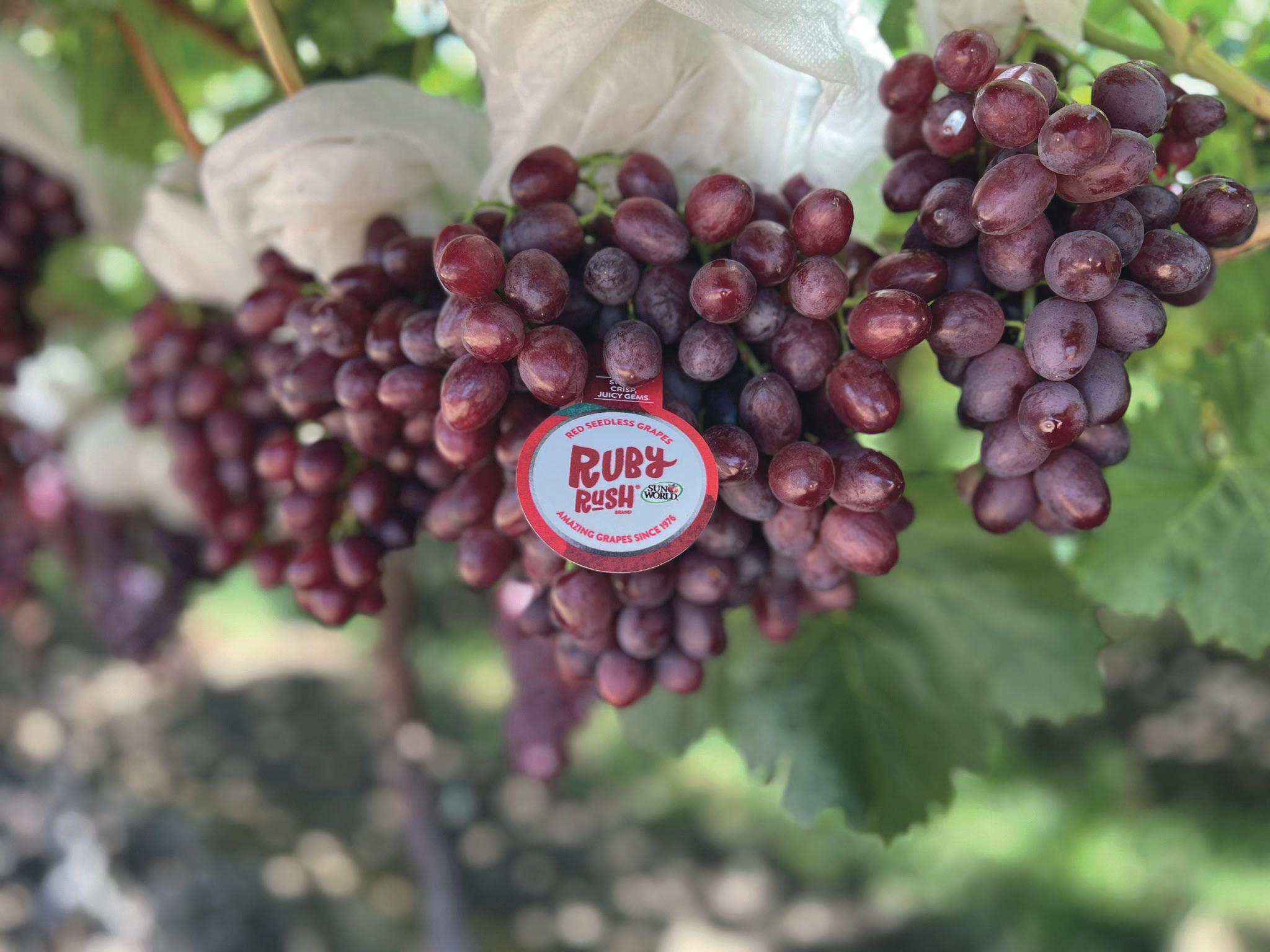
technologies to drive quality and efficacy in all ways. And we were particularly happy to add Ellio Grant to our board as a proof of that intent. Ellio , the former CEO of Google’s Mineral, is a globally recognised “big thinker” in the application of artificial intelligence in agriculture. He serves as an advisor to prestigious organisations who are always thinking about what’s next – which is both Sun World’s tagline and mantra.
From an R&D and development perspective, 2025/26 will be important at Sun World with the release of new pipeline varieties. I’ve mentioned our new table grape offerings. And, as you can imagine, there’s a lot of
OPPOSITE—Bernardo Calvo, CEO of Sun World International
THIS PAGE—The company’s consumer grape brands – Autumncrisp, Ruby Rush, Epic Crisp and Applause – are generating strong interest from retailers
anticipation around our new citrus and seedless lemons becoming more broadly planted and offering more weeks of supply to retailers. But looking ahead, we’re convinced we can be an important global supplier of mango genetics.
Our 2023 acquisition of the Kankun mango license was our initial step into this highest-ofhigh-potential crops. But Sun World’s mango category was simply transformed through our 2024 acquisition of the world’s largest mango breeding programme and the world’s largest collection of mango genetics. The la er is currently under evaluation via Sun World mango breeding centres in South Africa and California.
We expect to soon begin releasing and commercialising mango germplasm. This will happen both in geographies where we have existing table grape business, as well as through the opening of new markets like Brazil and Mexico, which are already globally prominent mango growing regions.
How do you plan to develop Sun World’s geographical footprint in
the coming years? What countries and regions really excite you?
BC: At the moment we have more than 40,000ha of different crops planted in 18 countries which keeps us plenty busy. Beyond that, Sun World isn’t alone in recognising the extraordinary market for high-quality fruit in Asia, particularly in China.
We’re excited to have built the beginnings of a very solid organisation there and, as is Sun World’s way, we’re “commercialising carefully”. We want to make certain we’re aligning with partners with whom we can form long-term relationships, which I like to think is one of Sun World’s strengths. We’re also significantly expanding our footprint in Europe and LatAm and are pursuing other geographies in an exploratory way.
With that said, a very important synergy opportunity we have is to expand citrus and mango offerings in countries and customers where the former Biogold team didn’t have access and vice versa. We’re already starting to see demand traction with table grape growers asking for citrus and citrus growers asking for grapes.
Is Sun World exploring further partnerships or acquisitions to strengthen your market position?
BC: Always. Our executive chair David Marguleas is highly focused in this area. Our 2024 Biogold acquisition was major and there’s still an incredible runway to maximise our expanded portfolio. I’ve always called this a smooth “un-transition” of two like-minded companies, but we’re still fully optimising this exciting multiplier.
»
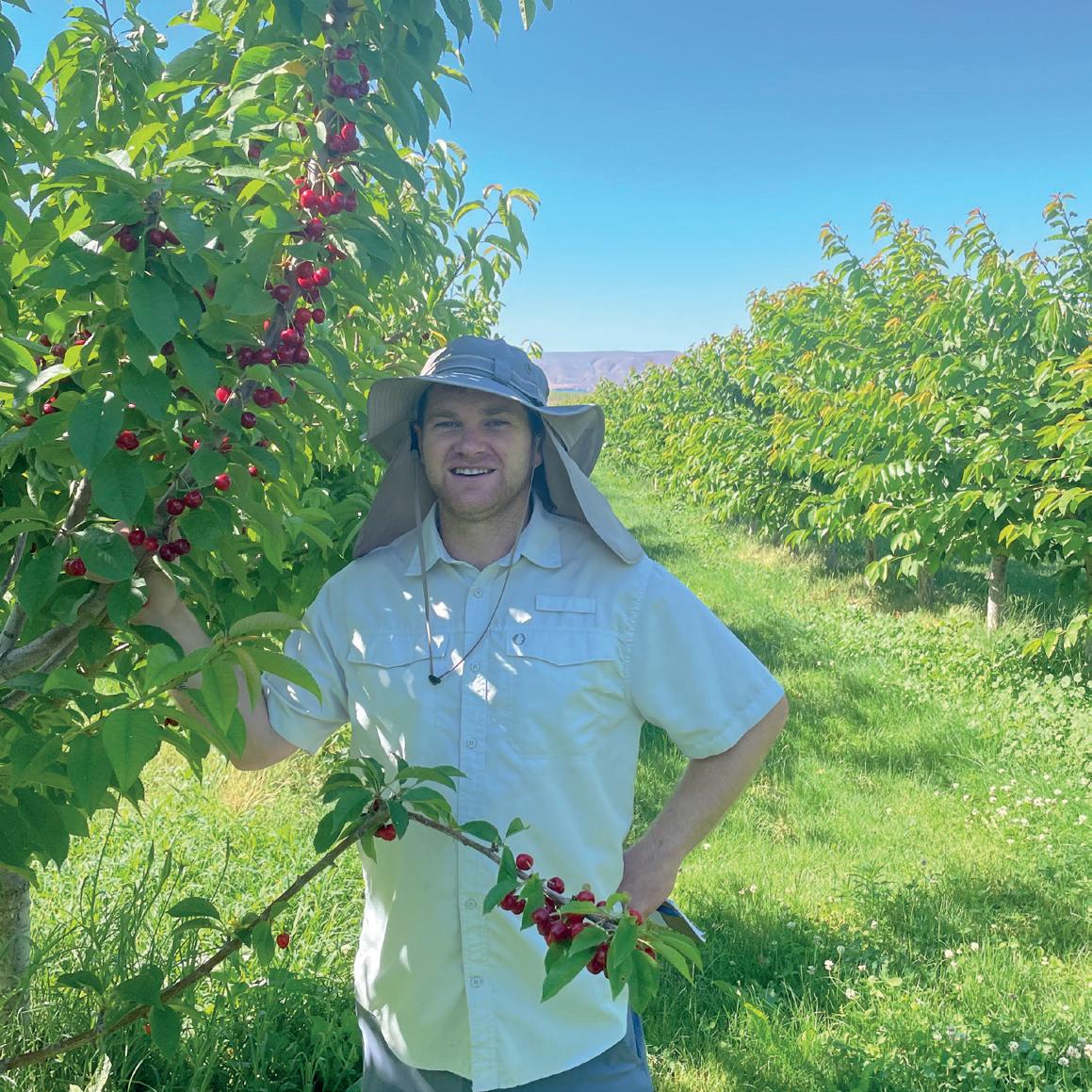
Additionally, we’ll continue to expand our genetics range in a prudent way and with the needs of our licensees in mind. Potential alignments with world class breeding organisations are a constant for us and we’ve been in discussion with a large number of businesses. We’re always eager to talk to enterprises with a genetics innovation element. We also assess the potential to acquire or partner with other breeding programmes, plus one-off opportunities like the Kankun mango.
UK retailer Tesco is trialling a new approach to table grape marketing by selling grapes with flavour and texture labels such as ‘tropical flavour’, ‘candy flavour’ and ‘crunchy texture’. Do you think this is the future of the category?
BC: Sun World has been extolling the opportunities in table grape branding for the last decade. While consumption has accelerated, most consumers still choose grapes by colour. That is beginning to evolve. We believe the apple industry, which has brilliantly marketed by brand, is a model for what table grapes can be with appropriate support. Sun World absolutely believes this is part of the future of the table grape category. We’ve
focused in a major way on ‘crunch’ which you mentioned, through investment in Autumncrisp. Crunch feels like an enduring consumer desire as opposed to a fad and it’s one of the traits that’s made Autumncrisp a Sun World flagship.
And we developed both our Sable Seedless and Applause table grape varieties to satisfy consumer interest in the tropical flavour profile you mentioned, also in high demand.
Your early ripening cherry varieties are one of the highlights of your breeding programme. What other gaps are you looking to fill in the stonefruit category?
BC: Low-chill plums commercialised under the Black Diamond brand,
LEFT—Early-ripening cherry varieties are one of the highlights of Sun World’s breeding programme
BELOW—Visitors at one the company’s recent table grape open days
and nectarines and peaches, continue to be important to Sun World. We’re focused on the development of early-ripening varieties that can be grown in very early, hot environments like North Africa and the Coachella Valley in the US to fill production gaps that ma er to our licenses.
Our customers and their consumers, continue to be keenly interested in Sun World’s red-fleshed, blackskinned plum line with its exceptional flavour and antioxidant profile so that’s a priority as well.
There have been major strides in genetics in recent years. How is this influencing the commercial landscape in fruit breeding? How critical is speed to market when it comes to the success of a new variety?
BC: You’re absolutely right and I already mentioned the degree to which advances in science and technology are propelling our business. In a world where things happen lightning-fast, and where consumers are open to trying new and be er produce, increasing speed-to-market is the Holy Grail of variety development.
Maximising the intelligent and intentional use of data; the optimal deployment of AI; and the introduction of molecular breeding and sophisticated gene-editing tools are just three examples of important new drivers in efficacy in variety development.
Accelerating processes to achieve desirable fruit traits is something Sun World has long been laser-focused on and historically, that’s been a painstaking, labourintensive effort. But with the emerging technologies we now employ, we believe our years-to-commercialisation has the potential to be cut by at least 30 per cent. That’s real progress. E


FESTIVAL OF FRESH 2025 takes place at the home of FreshLinc in the vegetable-growing heartland of Spalding, Lincolnshire in June. We’ll be just across the road from Worldwide Fruit, who will host tours of their cutting-edge facility. So don’t miss your chance to be involved in the UK’s best fresh produce industry event!

For more information, contact us at festivalo resh@fruitnet.com or visit fruitnet.com/festivalo resh
Organised by
Alwyn Dippenaar, the new chairman of Sati, walks in the footsteps of many grape farmers from South Africa’s remote Orange River region.
by Fred Meintjes

In the mid-1980s, reaching Blouputs in the Lower Orange River region was quite an ordeal. When you turned off the main road from Augrabies to Pofadder, and headed down to the river, you had to open many farm gates.
For unsuspecting supermarket buyers who visited farms, one leading grower had the practice of letting them open the gates, and once they drove through, pretending to forget them in the desolate, neardesert landscape.
Today there is a tarred road and Blouputs has cemented its position in the world of table grape production. This is where we find the home of the Dippenaar Group which during the past 30 years has grown into one of the leading grape growing organisations in the country.
Alwyn Dippenaar is one of three sons of the founders of the business, Paul and Neeltjie Dippenaar, back in
1982. Currently there is 329ha in production with plans for considerable further expansion soon. The company has also invested in infrastructure and today the farms have modern pack houses with state-of-the art pre-pack facilities.
The aim is to talk to Alwyn Dippenaar, who also built up Dippenaar Choice Fruit as marketing division, but now has a greater industry function as chairman of Sati. His term, he says, is the continuation of the work done by the previous chairman and the Sati board.
“There are many important projects which we as a board and the industry have been working on for some time and they will continue,” he explains. “I am also excited that we have such a dynamic Sati team, led by the exuberance of youth coupled with experienced staffers, who will lead us forward.
“There are however several very important focus areas that is particularly relevant as the industry enters 2025,” he notes.
Dippenaar points to Sati’s focus on logistics and the role the new logistics model will play in stabilising logistics operations.
“We cannot solve these problems ourselves, but the information that we will derive from this model will be crucial to assist all role-players to contribute.”
“There are many important projects which we as a board and the industry have been working on for some time”
Sati is also determined to maintain progress in new markets, but 2025 will probably see greater efforts to grow sales in the US.
“Over time we have seen demand for our grapes grow in the US and Canada and we see special opportunities from December to February which we now need to take advantage of,” he adds. E
ABOVE—Alwyn Dippenaar, sixth from the right, with the rest of the Sati board

Exports increased in volume and value compared to the previous year.
by Maura Maxwell
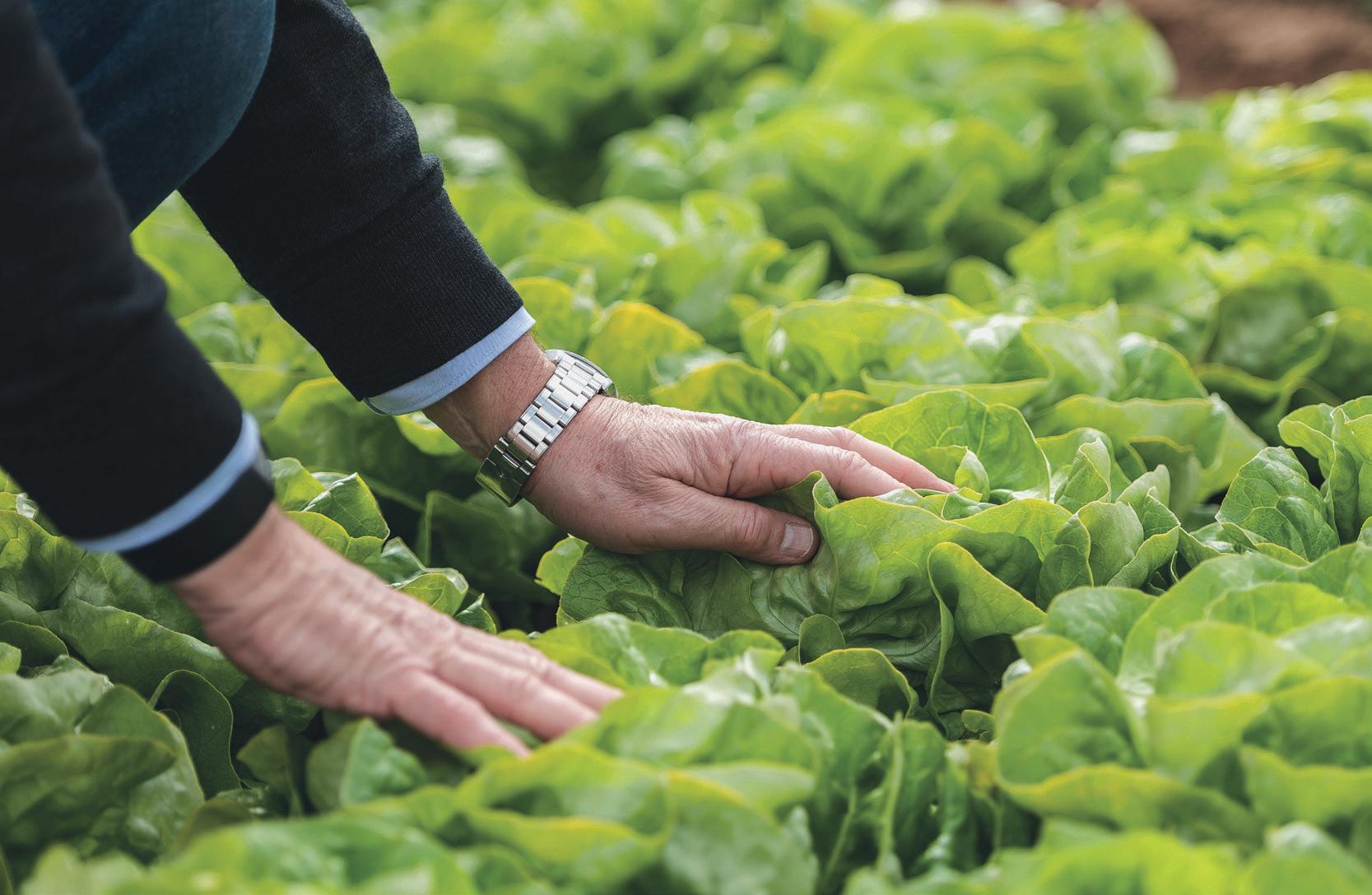
Spanish fruit and vegetable exports grew by 8 per cent in volume and 5 per cent in value in 2024. The latest customs data, published by Fepex, shows that 12.3mn tonnes of produce worth more than €17.7bn was exported last year. Ninety-seven per cent of shipments were destined for the European Union.
A total of 5.7mn tonnes of fresh vegetables worth €8.044bn were exported, an increase of 10 per cent and 2 per cent respectively on the previous year. Peppers, cucumbers and lettuce topped the table, pushing tomatoes into fourth place.
Pepper exports grew 13 per cent to 804,126 tonnes in volume and 3 per cent to €1.564bn in value; cucumber exports totalled 745,726
tonnes (+12 per cent) and €979mn (-2 per cent); lettuce exports reached 745,699 tonnes (+5.5 per cent) and €920mn (unchanged), and tomato exports grew 21 per cent in volume to 674,426 tonnes but fell 6 per cent in value to €1bn.
Overall exports of fresh fruit grew 7 per cent in volume to 6.6mn tonnes and 8 per cent in value to €9.658bn. In the stonefruit category, nectarines were up 13 per cent in volume and 11 per cent in value at 339,085 tonnes and €495mn, while flat peach exports grew 10 per cent in volume and 17 per cent in value to finish on 204,276 tonnes and €315mn.
Strawberry exports totalled 255,375 tonnes worth €788mn – an increase of 4 per cent in volume and 12.5 per cent in value. Watermelon exports also performed well, growing by 16 per cent in volume and 11 per cent in value to 789,733 tonnes and €552mn, making them the third most exported fruit after oranges and mandarins. Fruit and vegetable imports in 2024 grew 6 per cent year-on-year to 4.4mn tonnes worth more than €5mn. Vegetable imports were up 15 per cent in volume
LEFT—Lettuce
exports grew 5.5 per cent in volume last year
and 12.5 per cent in value at 2.1mn tonnes and €1.587bn, while fruit imports totalled 2.2mn tonnes worth €3.414bn – a dip of 0.4 per cent and increase of 11 per cent respectively.
By destination, Europe was the top market, taking 11.9mn tonnes worth €17.171bn, an increase of 8 per cent in volume and 5 per cent in value compared to 2023.
“The data on fruit and vegetable foreign trade show that the EU continues to be the mainstay of the positive development of the sector, compared to third countries that only represent 3 per cent of exports, and with very limited growth possibilities, due to the protectionist policies based on phytosanitary barriers of some of these countries, such as the US, where Spain exported only 32,468 tonnes, or 0.2 per cent of the total,” Fepex said.
“Furthermore, the globalisation of the community market requires an ever-increasing investment effort to maintain competitiveness, which is why we are calling for an investment financing policy that is more in line with sectoral needs.” E

Despite ongoing challenges, the La Mancha-based company anticipates strong growth in onion and garlic sales.
by Maura Maxwell
Water restrictions, falling demand and climate change are just some of the challenges facing Spain’s onion and garlic industry according to leading producer Grupo Lomar.
The La Mancha-based company, which has been supplying garlic and onions for more than 50 years to its wholesale and supermarket customers throughout Spain, reported a turnover of €48.1mn last year – 13 per cent down on the previous year’s record results, but 48.2 per cent above 2022 levels.
Onion production fell by 14.9 per cent compared to the previous year. “The average sales price has normalised, driven by an increase in supply at a national level that has exceeded demand. This has caused the average price to stand at €0.43/kg, lower than the peak reached in 2023 (€0.74/kg), but well
above previous levels, which allows profitability to be maintained,” the company said.
In garlic, Grupo Lomar’s production grew 37.5 per cent compared to 2023, while average prices increased by 21.6 per cent to €3.32/kg. CEO José López de la Fuente said the upward trend in prices was due to higher production costs forcing many companies to
plant less, resulting in a shortage of supply.
“Irrigation restrictions led us to cut back on sowing, which reduced production. This, together with high demand and the inflationary context, has driven up prices, especially for garlic,” he said, adding that this had also impacted consumption.
Despite the challenges it faces, the company said it expected the sector to maintain a positive trend and for sales to increase in 2025. “We expect production and turnover to grow significantly. The price of onions will rise in the short term due to the increase in the costs of preserving the product, while garlic could experience a slight downward adjustment in the second half of the year with the new campaign,” López de la Fuente noted.
Nationally, the onion and garlic sector faces challenges such as increased production costs, difficulties in accessing water, price volatility and a lack of specialised labour. Nevertheless, Grupo Lomar remains confident that the implementation of sustainable agricultural practices, technological innovation and the development of new, more resistant varieties can strengthen the sustainability and competitiveness of the sector in the future.
Grupo Lomar said a decision to concentrate all its production processes within a 60km radius of its headquarters in Zarza de Tajo, Cuenca has allowed it to generate a high-quality, local product, significantly reducing the costs and times of transporting the goods to the country’s main logistics centre, Mercamadrid, while also helping to cut carbon emissions.
“With a market in full evolution, the garlic and onion sector faces 2025 with expectations of recovery and growth, anticipating greater stability in production and maintaining competitive prices,” the company said. E
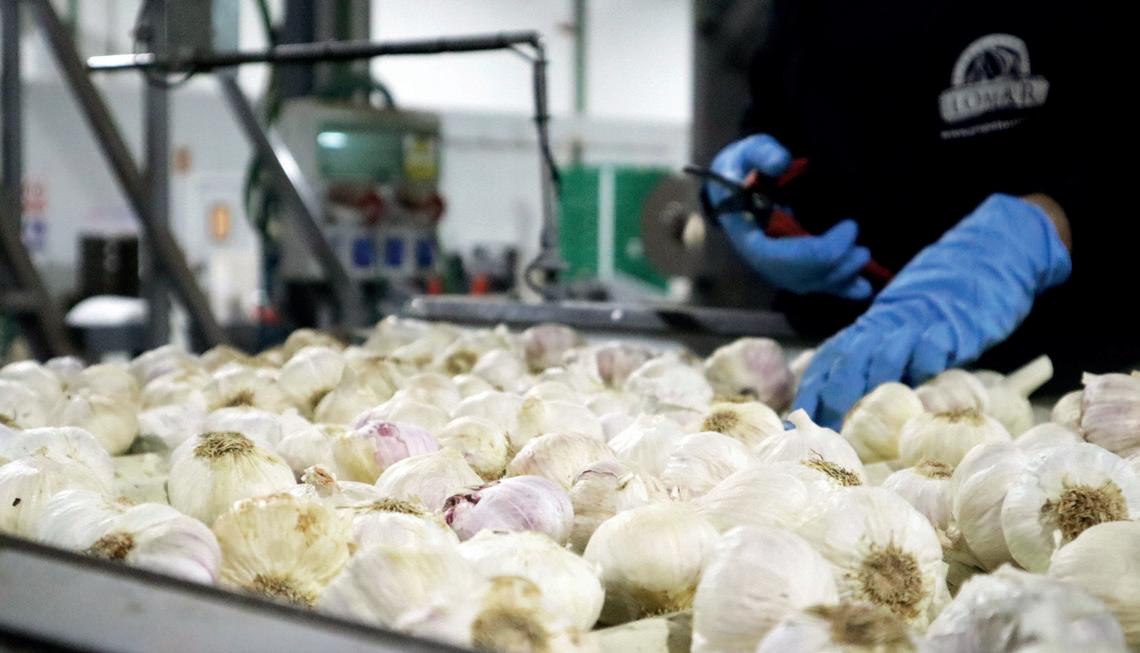
TOP & LEFT—
Grupo Lomar has been supplying garlic and onions to retail and wholesale customers for more than 50 years
New range of blood oranges taps into consumer trends of health and innovation.
by Maura Maxwell
Red Bouquet is the name of Anecoop’s new blood orange brand, which made its debut at last month’s Fruit Logistica.
The second-tier cooperative’s range of red-skinned and redfleshed oranges were developed at Anecoop’s trial farm in Museros, Valencia. They have an extra-high antioxidant value thanks to the elevated levels of anthocyanins.
The company says the new brand serves a double objective: to restore the historical value of bloody oranges that were traditionally grown in Valencia but have almost disappeared, and to expand its varietal offer, thus guaranteeing broader and more homogeneous commercial programmes for this type of orange.
After studying several varieties over a number of years, Anecoop selected its current range, which includes Ippólito, known for its intense exterior and interior colour and its larger size, and Tarocco Rosso.
“Although these are very wellknown and marketed varieties elsewhere in Europe, in Spain they still have a long way to go
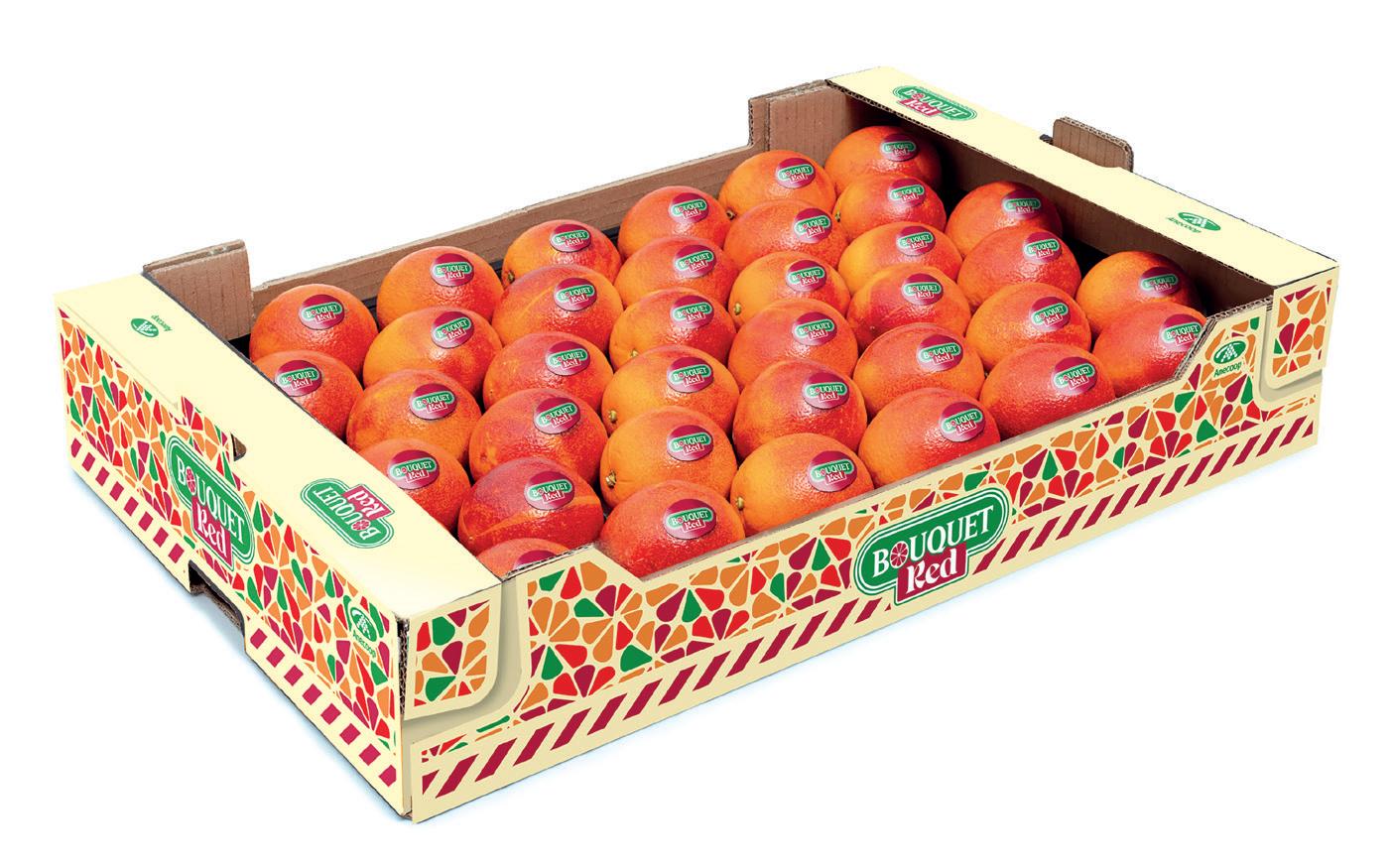
because for many years it has been difficult to find them on the market,” Anecoop says. “In addition, they arrive at a very attractive commercial moment, with consumers receptive to new developments in both eating and juicing oranges.”
Anecoop is targeting the retail and wholesale channels in Spain, as well as countries where blood oranges are already well known, such as Italy, France and Germany, all markets in which the company’s oranges and Bouquet brand already have a significant presence.
“The red oranges marketed under this new brand respond to our effort to adapt the varietal offer to the tastes and demands of the consumer, to extend the calendar and the range and to recover traditional flavours,” says Anecoop’s president Alejandro Monzón.
“The objective: to consolidate the competitiveness of our citrus fruits throughout the world and to boost the economic performance of our farmers, who are our reason for being.”
Red oranges owe their characteristic colour to the high presence of anthocyanins,
show the varieties have high
a bioactive component that develops thanks to the contrast in temperatures between day and night that occur during the cultivation process.
According to recent studies carried out within the framework of the collaboration agreement between Anecoop and the Complutense University of Madrid, the varieties of red orange marketed by Anecoop have a high content of vitamin C, fibre and anthocyanins, antioxidants that are very valuable for health.
Under this agreement, both parties are carrying out further studies to better understand their nutritional composition along with the benefits they provide. E
TOP—The range was developed at Anecoop’s trial farm in Museros, Valencia


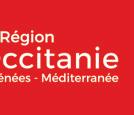
The essential meeting for the Fruit and Vegetable sector in France
23 & 24 April 2025
Parc des Expositions - Perpignan, France
250 Exhibitors expected
5,000 Decision-making visitors expected 100% sustainable practices
50 International Top buyers
6 Exhibition sectors
1,500 Business Meetings during the show
4 Summer fruit harvests forecast
23 Conferences including 1 Exclusive Big Debate

Spanish production accounted for 61 per cent of total apple and pear sales last year.
by Maura Maxwell
Spanish supermarkets sell a higher proportion of homegrown apples and pears today than ten years ago, new research from Catalan fruit association Afrucat shows.
Barcelona, Lleida, Zaragoza and Madrid, while the most recent report also includes data from Donosti, La Coruña, Valencia, Sevilla y Tenerife.
€0.59 to €0.92. Last year, national apples retailed for €2.55/ kg on average, while imported ones sold at €3.47/kg.
Afrucat’s general manager, Manel Simon, said: “Data shows that while the volume of imported apples sold since 2004 has been fairly constant, there has been a significant increase in the supply of domestic apples on the shelves. This leads us to value the approach that supermarkets have taken towards local production, but it also makes us wonder where all these imported apples that continue to arrive are being sold”.
Simon acknowledged that there is still a lot of work to be done in traditional stores, which represent 30 per cent of total sales. “We are talking about the small neighbourhood shop that is mainly supplied by wholesale markets, where we find a large amount of imported fruit and, above all, fruit that is not correctly labelled, preventing the consumer from exercising their right to be informed and to choose national products,” he said.
The association recently presented the latest findings of its retail monitoring service Infolineal, which tracks retail produce sales across Spain.
The report noted that the price of imported apples not only remains higher than national apples, but that the price difference has increased over the last ten years, rising from

In 2015 – the first year Infolineal was published – more than half of the apples on sale in Spanish supermarkets were imported, while 47 per cent were grown domestically. Last year, national production accounted for 61 per cent of apple and pear sales.
Afrucat qualified the findings by noting that the first Infolineal only collected store data from four cities,
In pears, the situation is different. In 2015, homegrown pears accounted for half of the sales in 100 per cent of the surveyed retailers, while in 2024, some supermarket chains sold less than 50 per cent of local product. Imported pears accounted for 21 per cent of total pear sales.
“This situation is closely related to recent years of inclement weather, droughts, heat waves and frosts, which have drastically reduced Spanish pear production and have favoured the increase in imports,” Afrucat said.
It noted that the price difference between national and imported pears is smaller than for apples and has been reduced in the last 10 years, going from €0.68 in 2015 to €0.52 last year. This meant national pears cost an average of €2.81/kg, while the imported ones cost €3.33/kg. E

ABOVE LEFT—
Domesticallygrown apples sell for considerably less than imported ones
LEFT— The supply of homegrown apples has risen sharply in the last 20 years
PlantSeal® coatings increase the shelf life of limes, reducing aging symptoms such as wrinkling in the stem area and calyx browning. Weight loss mitigation is spectacular, far superior to other coatings on the market, with control of up to 50%.
With PlantSeal®, the yellowing that occurs in limes during refrigerated transport and throughout their shelf life is reduced, meaning the fruit can remain green for longer in the supermarket.
PlantSeal® coatings are plant based and certified as both organic and suitable for vegan consumption, this is particularly important in the case of the lime, as the rind is a highly prized ingredient in cooking and for cocktails.
www.citrosol.com


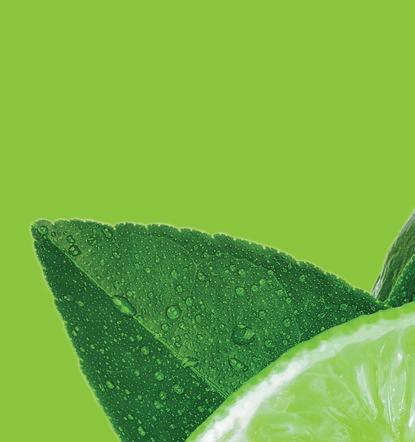

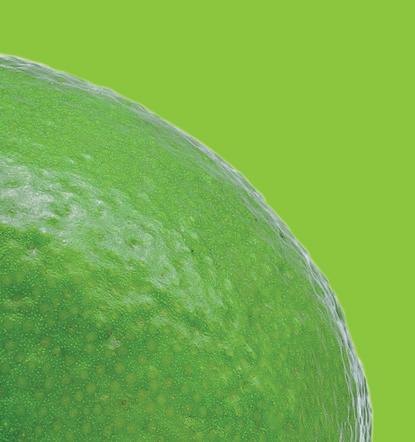


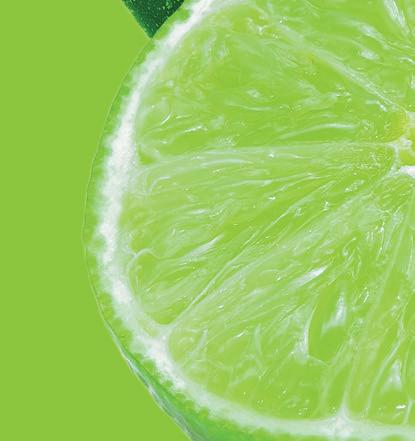

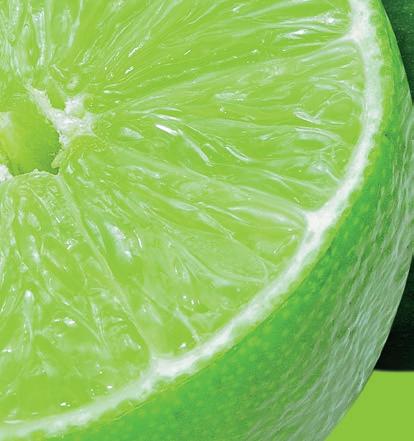











Apple brand’s new-look website offers ”an engaging, interactive and personalised experience”.
by Carl Collen & Mike Knowles
The Cosmic Crisp brand returned to European markets in early 2025, supported by a range of special events and marketing initiatives designed to persuade young, city-dwelling consumers to enjoy it “under any sky, from sunrise to sunset”.
Total supply of the fruit across Europe is set to rise to 21,000 tonnes, ensuring availability from mid-January through to mid-autumn. And with its enhanced storage capabilities, its marketers are confident Cosmic Crisp will maintain exceptional freshness throughout both spring and summer.
he companies behind Europe’s production of Cosmic Crisp apples have announced that the brand’s dedicated website now has a completely new look, which they describe as a ”game-changer approach exploring new horizons in the areas of interactivity, engagement and brand community”.
managers at Vog and VIP, the two Italian companies that are licensed to grow and sell the apple in Europe.
“The aim is to construct a community around the brand and
“We are really excited to once again be able to meet the demand for Cosmic Crisp on all reference markets in Europe,” Tauber and Laimer comment. Their joint campaign kicks into high gear during the spring and summer months in Italy, Spain, and Germany, encouraging consumers to discover the “heavenly taste

to replicate the pleasure we get from biting in to this exceptional apple,” they add.
“Adopting an original approach for the fruit and vegetable industry, we wanted to create an interactive and modern website perfect for the Cosmic Crisp target audience of young urban consumers on the lookout for new products,” explain Hannes Tauber and Benjamin Laimer, marketing
The new Cosmic Crisp website aims to involve consumers ”right from the homepage”.
“Thanks to its qualities and brand positioning, Cosmic Crisp is changing the European apple category,” note Tauber and Laimer. “With the relaunch of the website, we take consumers into its heavenly world in a completely original way.”
of Cosmic Crisp” and enjoy the fruit at any time of the day.
“Thanks to our multichannel campaign, we are able to attract new consumers to the apple category,” Tauber and Laimer conclude. “In order to achieve this, Cosmic Crisp has positioned itself as a lifestyle product on the fruit and vegetable market thanks to special events, on-trend merchandising, and online and Instagram campaigns: communications aimed at a young urban target.” E
Company’s latest investment puts it on path to further growth as Southern Hemisphere supply base continues to expand.
by Mike Knowles
Italian company Battaglio has formed Agricola El Camino, a new joint venture pineapple supplier in Costa Rica.
The investment further strengthens the Turin-based company’s production portfolio, at a time when demand for tropical fruit is increasing across much of Europe.
Situated in San Carlos, a canton in Costa Rica’s Alajuela province, the new company will operate around 500ha of production in what is regarded as one of the bestsuited areas for pineapples in the country.

“We decided to take this step together, to build something solid and valuable, in a sector that offers great opportunities”
“The name Agricola El Camino is symbolic for us,” commented group president Luca Battaglio.
“It represents the path we have undertaken together with the Corrales family, evolving from a simple customer-supplier relationship to a real strategic alliance. We decided to take this step together, to build something solid and valuable, in a sector that offers great growth opportunities.”
According to Battaglio, the 50:50 joint venture will be led by Alexander Bolaños, who also manages a number of companies in leading Costa Rican group Caribe.
Battaglio has made a number of investments in the past decade to expand its international supply base and complement its domestic production and procurement.
These include the creation of Colombian avocado export business Agricola Persea in partnership with CI Tropical in 2018, and the formation three years later of a partnership with South Africa’s Sundays River Citrus Company, to produce citrus fruits, including lemons and oranges.
The group also has operations in Argentina, where in 2022 it bought Rio Negro-based Agricola Alto Valle to expand its apple and pear sourcing. E
LEFT—Alexander Bolaños, Luca Battaglio, and Estéban Corrales
The Greek exporter is enthusiastic about new markets for its kiwifruit as the company expands production, but pricing and climate pressures continue to cause frustration.
by Tom Joyce
BELOW—Antonis Ioannidis and Christina Manossis of Zeus
Greek exporter Zeus Kiwi is seeing growing demand for its kiwifruit in new markets this campaign, including in Brazil, but the company says it will have to be patient for the arrival of its new plantings before it can make a sizeable dent in such a giant market.
“Even if the profit is good, if the volume isn’t there, what can you do?” asks Christina Manossis, general manager of Zeus Kiwi. “You can’t serve a market if you don’t have the fruit to do so. Climate change is playing a part in this too.
“We are almost halfway through the season, and we wish we had more fruit. We always have more demand than we can supply, and that’s a good problem to have, but it does present challenges.”
“We are looking to expand both in green and yellow kiwifruit,” explains Ioannidis. “We have new fields and volumes of Kikokà that will be commercially available within the next two to three years, and of course there are new plantations of green kiwifruit as well.”
With disappointment Ioannidis points out that the price of kiwifruit this year has not reflected the shortage of supply on the market. “The pricing is not as high as it should be, especially considering that the quantity is
“We have new fields and volumes of Kikokà that will be commercially available within the next two to three years”
lower than usual,” he comments. “Something was not quite right at the start of the season, but so far we are thankfully doing quite well at Zeus Kiwi.”
One of the key hurdles for the company is the increasing cost of raw materials, as well as the disadvantage faced by European growers due to the EU’s “severe” controls and regulations. “The EU has some of the strictest controls and regulations in the
world, which is good for food safety but also creates challenges for growers,” says Manossis. “At the same time, labour costs continue to rise, adding further pressure on margins.”
However, the company remains optimistic about the future, particularly in relation to its brand.
“When we enter a new market, we focus on promoting the Zeus Kiwi brand,” Ioannidis explains. “We want customers to understand what sets our product apart, and we aim to convey the added value of our fruit.” E
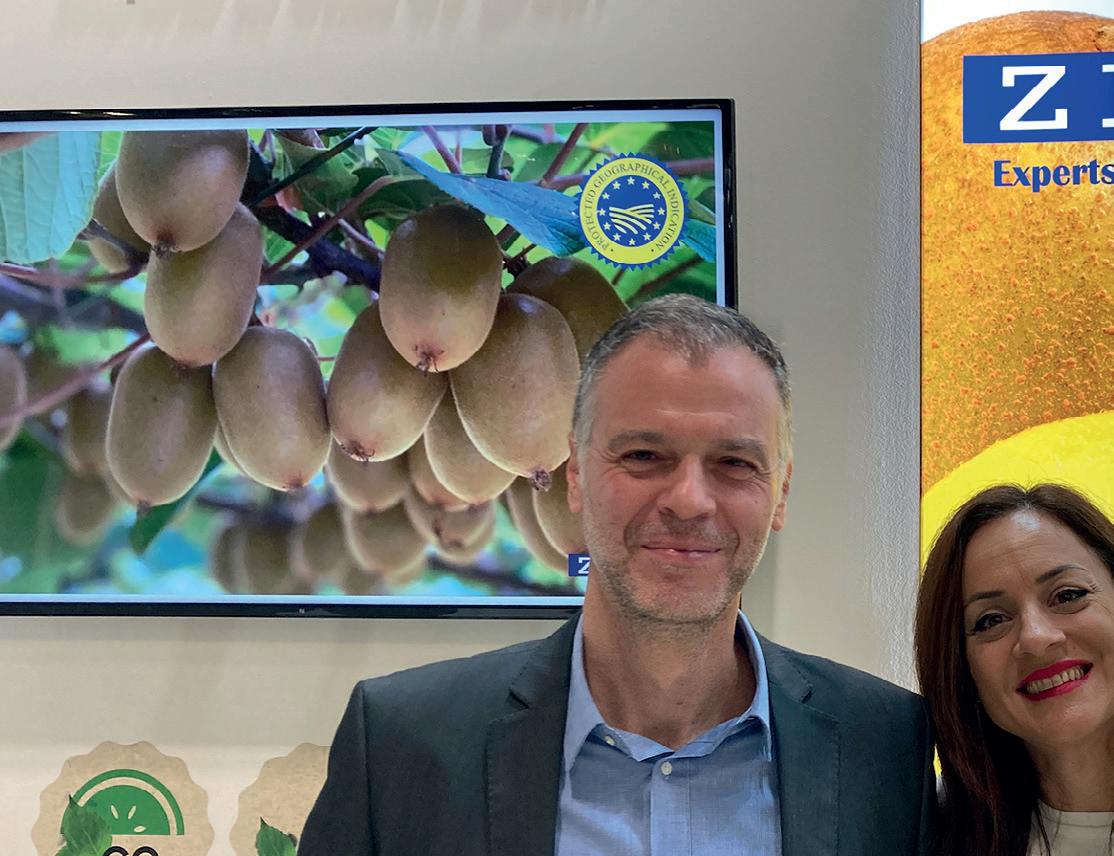

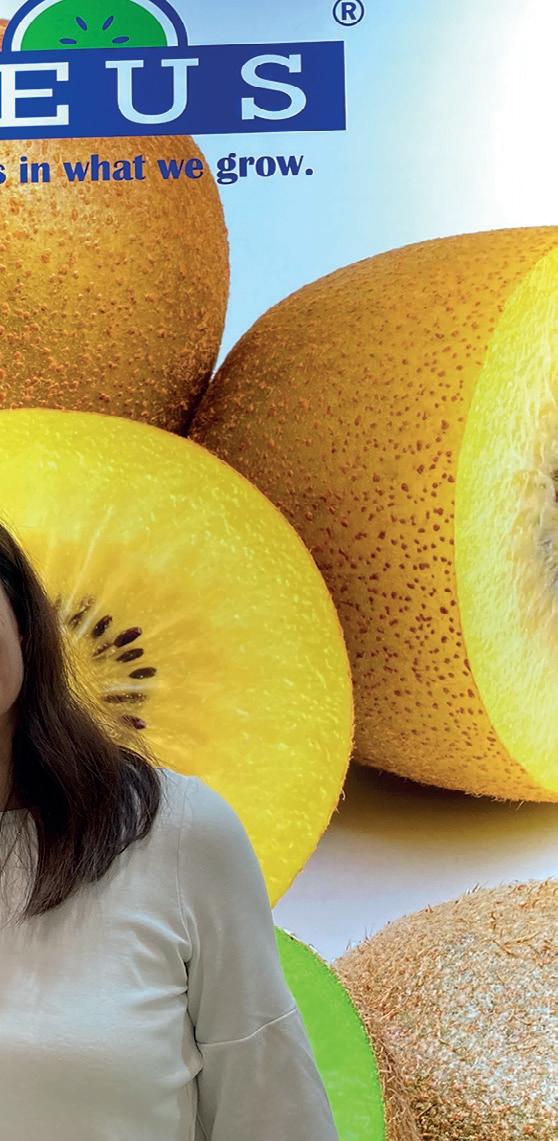
A number of Israeli start-up companies offered their solutions to sustainability and food security issues at January’s Food Sec & Tech conference in Sderot, in southern Israel.
by Gerry Kelman
January saw the return of Israel’s International Food Sec & Tech conference, the second edition of the event held in Sderot in southern Israel, a small city that was badly affected by the events of 7 October 2023.
The vulnerability of Israel’s food security has been emphasised by multiple events, including Israel’s prolonged war in Gaza, the departure of thousands of Thai agricultural workers after 7 October, the Covid-19 pandemic and the war in Ukraine, a country that had met at least 70 per cent of Israel’s wheat demands.
In addition, the average age of the Israeli farmer is now a staggering 65 years old.
Responding to such issues, multiple start-up companies offered their solutions at the event.
As published in Journal of Agricultural and Environmental Ethics by Dr David Pimental in 1995, the Platypus development is based on the assumption that, “of a global pesticide consumption of over 4mn tonnes per year, only 0.1 per cent of the applied pesticides reach the target pest and the other 99.9 per cent pollutes the environment, enters the food cycle and damages human health”. The Platypus development offers an innovative delivery system for volatile bioactive compounds like
essential oils and pheromones.
This groundbreaking platform provides controlled, prolonged release of active ingredients, reducing waste, minimising environmental impact and enhancing pest control effectiveness. Aiming to cut development costs in half and to accelerate regulatory approvals, Platypus aims to enable manufacturers to bring ecofriendly pest control solutions to market much faster.
Marina Arshavsky, CBO at Platypus, commented: “Platypus technology aims to empower agriculture, food supply chains and home garden industries to replace traditional chemical pesticides with safer, more sustainable alternatives. With its innovative approach,
Platypus is driving a transformation in pest control, offering a cleaner, healthier future for people and the planet.”
Initiated as a project at the Faculty of Agriculture of the Hebrew University, RumaFeed has developed new varieties of potatoes that eliminate the presence of solanine, a toxic glycoalkaloid present in potato plants. This enables potato haulm utilisation, creating a whole new revenue stream while significantly contributing to resolving the food and feed crisis. The option to use potato haulm as a feed, and not have to eliminate it by burning or by the use of toxic herbicides, offers a significant economic advantage.
Oded Ilan, CEO of RumaFeed, said: “Additional advantages in the use of this innovative technology are longer shelf-life for potatoes and less greening of the tuber. We also generate a substantial increase in protein in potatoes and reduce the processing cost for protein and starch.”
The technology is based on genetic engineering
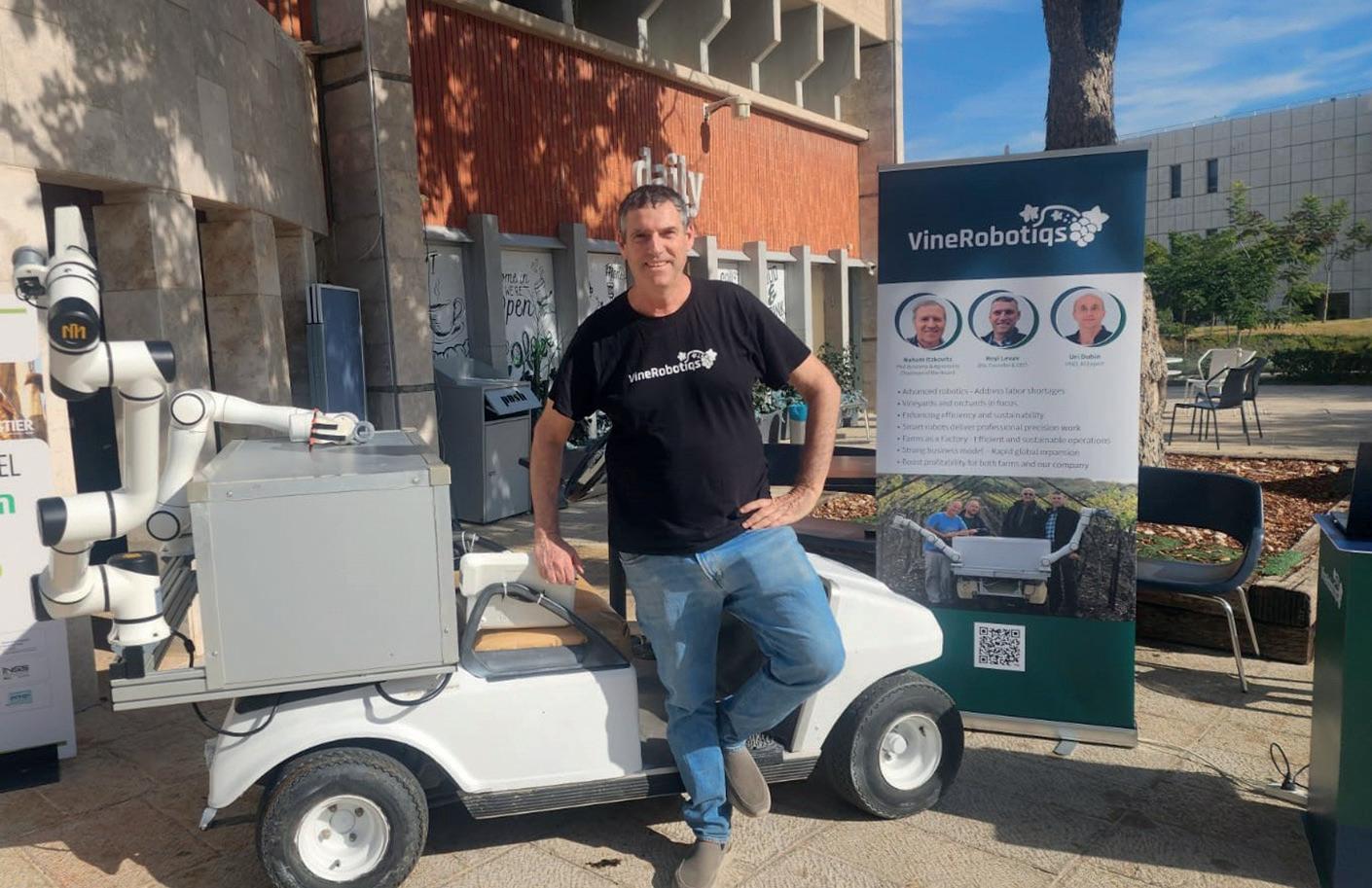
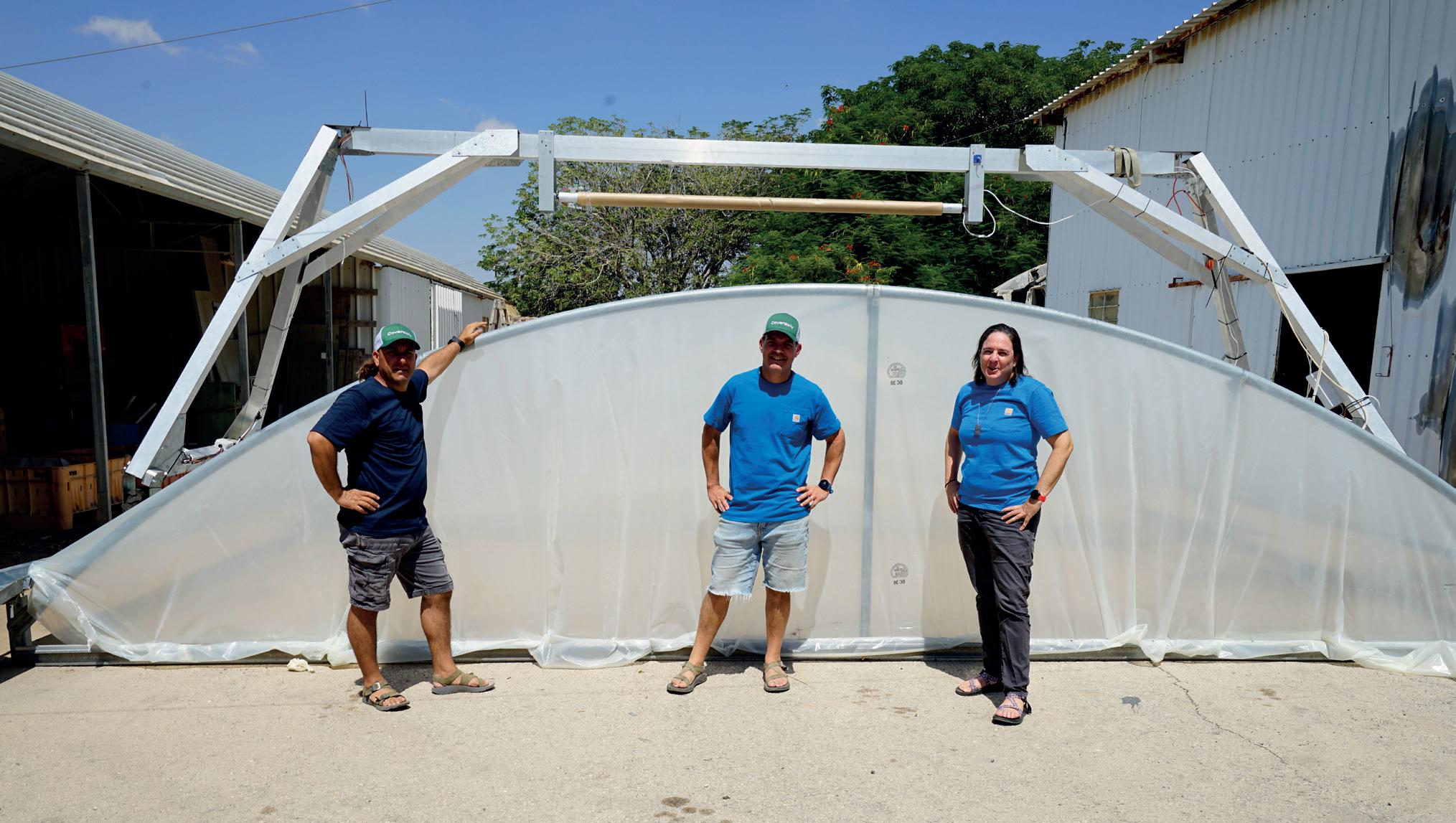
(Crispr) without any genetic modification. RumaFeed is now looking at the reduction of solanine present in tomato foliage.
VineRobotiqs
The vine is the fastest growing of trees. Branches grow arbitrarily wild, striving for light. The bunches tend to be messy, with twisted tendrils everywhere. As hundreds of bunches start to flourish, a proper dilution is a must to get the required quality of product. Quality is defined by some 20-30 factors, including size, shape, density, taste, colour and shelf-life, achievable by properly executing the right actions all year around. Thus, maintaining high quality viticulture and cultivation expertise is critical for farm profitability. The massive use of temporary human labour is spent on cultivation tasks, labour being up to 60 per cent of total expenditure.
The need for AI and robotics has been created by the everwaning availability of labour in many grape-producing countries. The VineRobotiqs solution utilises a best-in-class AI real-time control
The need for AI and robotics is created by the ever-waning availability of labour in many grapeproducing countries
system. The robot executes a recipe defined by the farmer. There are tens of recipe types and adjustment parameters that enable a best fit to the most updated practices in vineyard viticulture. The company uses a modern cloud-based BI-SAS system to keep decision-making optimal through a continuous improvement process.
VineRobotiqs systems are set to be able to work 24/7 along vineyard rows, carrying out exactly the detailed programme defined by vine experts for the specific plantation and conditions. Tasks are done at the appropriate time, aiming to achieve best bunch quality and a better market price.
Inspired by the crisis of war and absence of labour, CoverDolly came
to being shortly after 7 October, a startup to develop an automated solution to make greenhouse covering easier and more efficient, even in extreme conditions.
Ahi Sitbon, a vegetable farmer cultivating close to Gaza, was visited by a long-standing friend, Ora Nakash, a woman with expertise in information system design and software. They discussed a major challenge facing Sitbon. Closing the greenhouses for winter planting before the rainy season was being carried out by external contractors who would bring in teams of ten skilled workers to climb onto the greenhouse roof and spread plastic sheeting, which can be as large as ten metres by one hundred metres.
“It’s a huge challenge, especially with alarms going off, wind and sun, and it’s not a job for volunteers,” said Sitbon. “I simply didn’t have the manpower for it.”
Discovering that no machine existed for such a job, Nakash recruited another mutual friend, Gilad Meller, an independent mechanical engineer who specialises in robotics and automation, and the team set out to build one. That’s the origin of the CoverDolly, described by Meller as “an autonomous robotic platform that runs on top of the greenhouse, removing used plastic sheets, installing new ones, and eliminating the risk that humans face in doing such a job, while doing it in an efficient and controlled manner”. E
ABOVE—CoverDolly’s co-founders, Ahi Sitbon, Gilad Meller and Ora Peled Nakash
OPPOSITE PAGE—Royi Levav, CEO of VineRobotiqs
Turkish grower-exporter Alanar has announced its decision to export only its own production of cherries, apricots and figs in order to prioritise quality and control, as well as reducing the financial risk.
by Tom Joyce
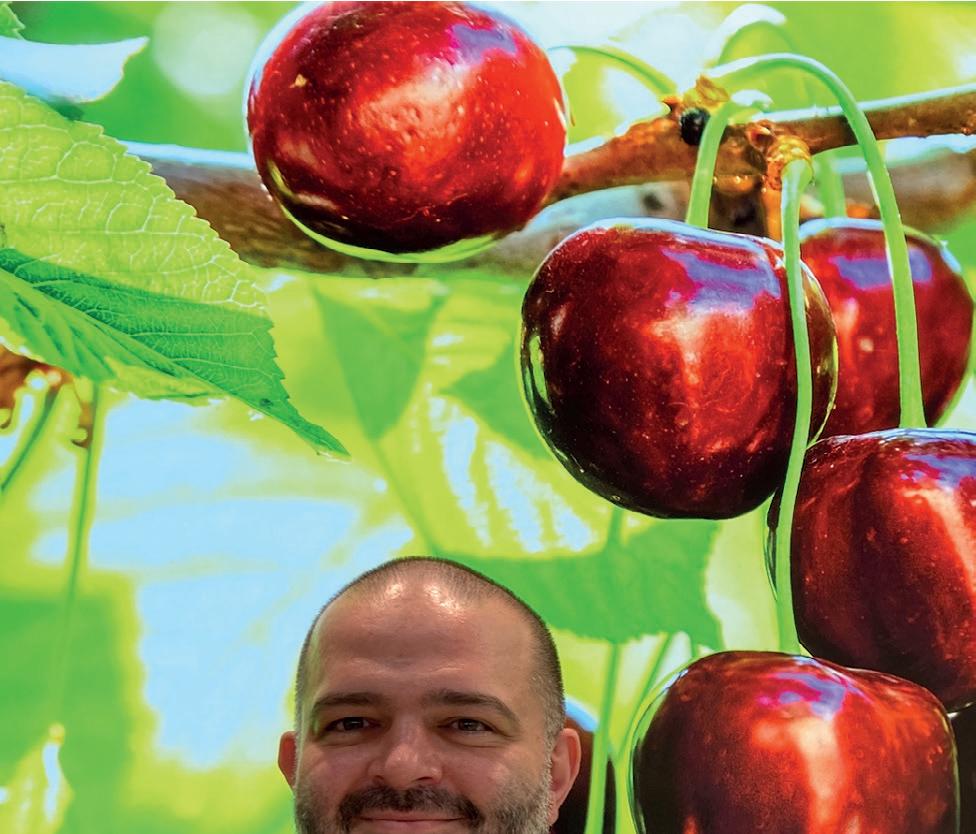

In a move that underscores its commitment to quality,
Turkish grower-exporter Alanar is set to exclusively export only the fruit produced in its own orchards, a shift from previous years when it also bought from other growers.
Yigit Gökyigit, the company’s commercial coordinator, explained that the decision was motivated by a desire to have better control over product quality and to reduce financial risks.
“We’re not going to be buying fruits like before,” confirmed

Gökyigit. “This year, we’re focusing solely on exporting what we grow ourselves. We expect around 1,000 tonnes each of cherries and apricots, with figs and a small quantity of blueberries also in the mix.”
Alanar has historically sourced fruit from a variety of growers to supplement its own production. However, the risks associated with this model, particularly in a challenging Turkish economic climate, led to the shift.
Gökyigit outlined some of the main factors driving the change. “Interest rates in Turkey are super high,” he said, “and rising grower prices have made profit margins increasingly tight. You have to pay the grower in advance and then the European supermarkets have payment terms of up to 30 days, so it becomes a risky business. The interest rate stands at about 6 per cent
per month, which is substantial.”
Alanar’s shift will result in a reduction in volume, with cherry exports expected to fall from 2,000 tonnes to 1,000 tonnes, for example, but the company’s control over quality will of course rise.
“Managing our own production will allow us to control quality and reduce the chances of facing losses,” said Gökyigit. “When you’re dependent on other growers, an issue like late payments or poor quality can wipe out all your profits.
“Many of our customers are happy with our decision because they know they’ll receive completely traceable, high-quality products. It’s not always about volume; quality and traceability are crucial. Of course, some of our clients that rely on larger volumes will be disappointed, but we’ll work with them to find a solution.”
Looking ahead, Gökyigit said he remained confident that Alanar’s focus on quality would benefit both the company and its customers. “Last year, we had an excellent season, with claim rates at below 1 per cent, which is a fantastic result. But there have been some bad years in the past, with quality issues and lots of claims. Going forward, we’re prioritising quality, and that will allow us to manage our business better, even if it means fewer tonnes of fruit.” E
The two countries have signed a bilateral agreement to guarantee fair competition on the French tomato market following attacks on trucks.
by Tom Joyce
Tomato producers in France and Morocco are ready to sign a bilateral agreement to regulate tomato seasonality and ensure fair competition on the French market, according to Réussir
French producers have complained about the arrival of cheaper Moroccan tomatoes at the start of France’s season.
“These tomatoes are now appearing on French shelves at the beginning of the French season at prices that French producers simply cannot compete with,” Réussir stated.
The deal is expected to be signed in mid-March, once a consensus has been reached to avoid an overlap of Moroccan and French cherry tomatoes during the beginning of the French season.
Producer representatives from both sides have met frequently following reports of European farmers attacking and destroying trucks loading Moroccan vegetables, including tomatoes, in countries such as France and Spain.
Moroccan ministers have hit back at accusations of “unfair competition”, with foreign affairs minister Nasser Bourita pointing out that the EU continues to have a “surplus with Morocco of around €600mn” in agricultural products, and a surplus of around €10bn in total trade.
“Trade agreements between Morocco and the European Union are based on strict standards, and they were carefully negotiated to achieve a balance between the interests of all parties,” he added. E

Dutch organics supplier Eosta has announced the addition of organic Medjool dates to its range, sourced directly from a family farm in Morocco that is dedicated to reintroducing and promoting the Moroccan Medjool date through organic cultivation.
“These dates combine excellence in quality with an efficient and flexible supply chain,” the company said. “With a moisture content between 22 and 27 per cent, these dates are particularly juicy, soft and flavourful.”
Cultivated 100 per cent organically, Eosta stressed that the dates were “completely free of chemical pesticides”, as well as guaranteeing the use of efficient water management and natural weed control.
“The Medjool date, also called the ‘king among dates’, originates in Morocco and is known for its rich, sweet flavour and soft, melt-in-the-mouth texture,” Eosta stated. “Eosta’s Moroccan dates are grown according to international quality standards, resulting in a premium product of the highest quality.”
The high quality is aided by shorter transportation routes, ensuring faster and more flexible delivery, the company said. “Morocco’s geographical proximity allows us to deliver quickly and efficiently and respond flexibly to market demand,” it revealed.
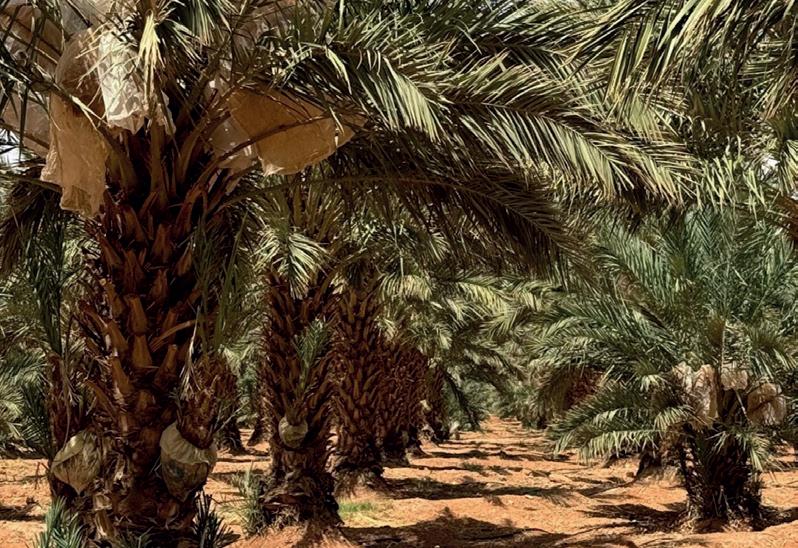
Ayham Fakheralden of Spectra Dates tells Eurofruit that “massive money” is being invested in the sector.
by Carl Collen
Jordan’s date industry is seeing steady growth, with “massive money” being invested in the sector.
That is according to Ayham Fakheralden of Spectra Dates, an exporter based in the country.
“The area planted with date palms in Jordan is about 4,500ha, and the rate of increase in area and production is estimated at about 10-15 per cent annually,” he tells Eurofruit
“We have noticed greater demand for the Medjool variety, ranked as one of the most prestigious in the world”
“The current number of trees is estimated at about 750,000,” Fakheralden outlines. “Production quantities amount to about 35,000 tonnes of various types, including about 22,000 tonnes of Medjool dates, and the rest are Barhi and other types. This represents about 14 per cent of the estimated global production of Medjool dates.”
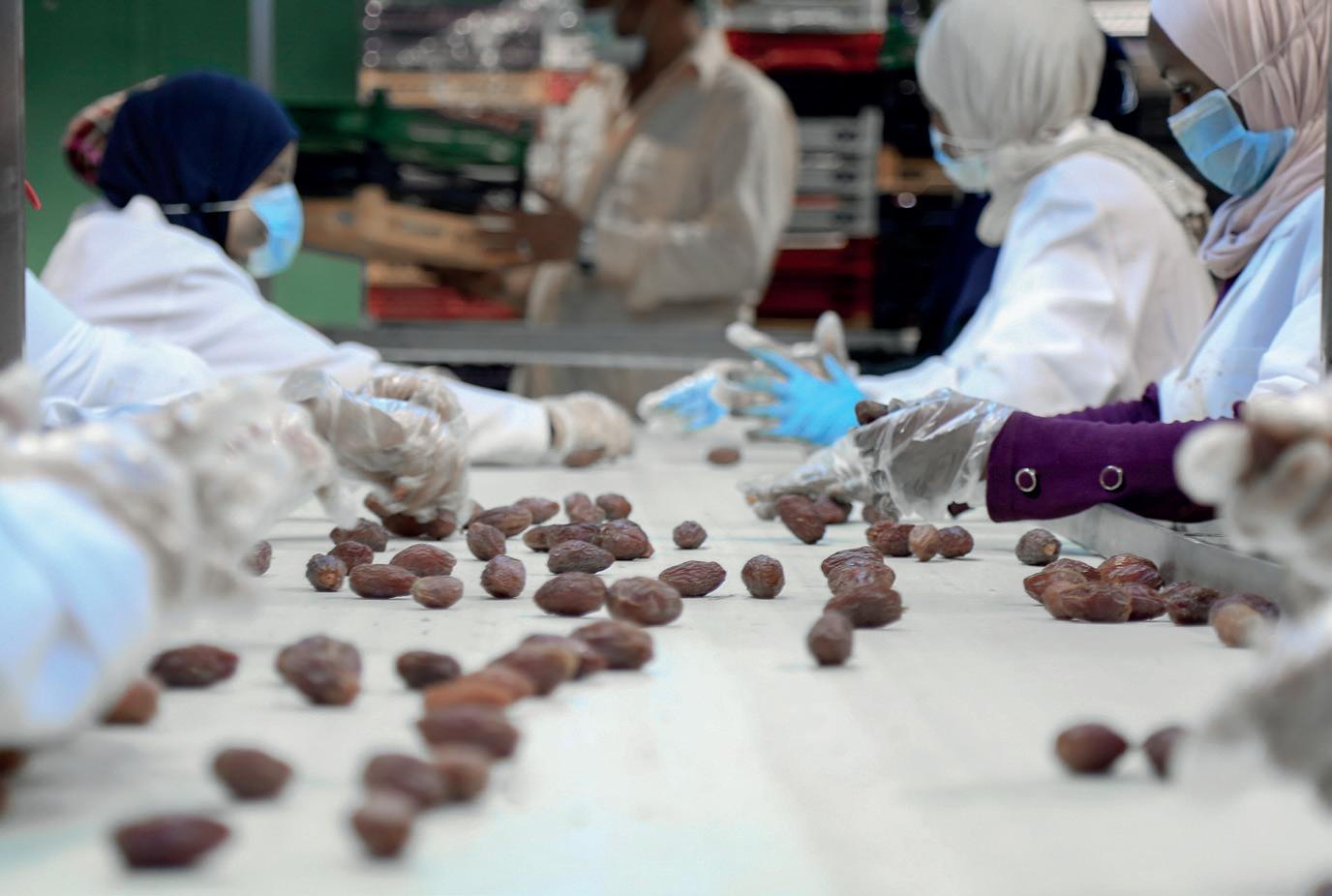

In terms of financing, the volume of direct and indirect investment in the Jordanian date sector exceeds more than half a billion dollars, he explains. Meanwhile, the annual working capital is estimated at US$60mn, an increase of about US$10mn over last year.
“The number of workers in the sector is about 10,000, including about 40 per cent female workers, and the annual growth rate is estimated at 15 per cent in this field,” says Fakheralden.
“Jordan is considered the country with the highest export percentage of local production, 65 per cent of dates.”
One specific variety is seeing much more demand than before, he confirms. “We have noticed greater demand year after year for Jordan’s Medjool date, which is ranked as one of the most prestigious dates in the world,” Fakheralden continues. “Many countries were hardly consuming any dates and only recently started to import the product, thanks to its valuable nutrition. Jordan exports Medjool dates to about 24 countries.”
Water and skilled labour have been historical challenges when it came growing Medjool dates in Jordan, so “a lot of money and resources” have been invested to train staff, who have also studied the trees’ need for water and installed systems to control it.
“Jordan and our farm will continue to grow 10 per cent to 15 per cent per year, as we’re planting new trees, while at the same time many of our trees are still not fully mature yet,” Fakheralden concludes. E
TOP—Sorting at Spectra Dates
LEFT—Planted area is increasing 10-15 per cent annually in the country as demand for dates grows, with the Medjool variety exported to some 24 countries
Challenges remain in terms of accessing raw materials and adapting to the changing climate, but Côte d’Ivoire’s mango exporters see opportunities in Europe’s premium market.
by Tom Joyce
As demand for high-quality mangoes continues to rise across Europe, Côte d’Ivoire is positioning itself as a key player in the global mango market, according to Madigbe Diaby of ADF Agro, which specialises in premium mango exports.
Diaby highlighted the unique quality of Côte d’Ivoire’s mangoes, specifically the Kent variety, which ADF Agro grows on its own farm.
“In Europe, the main demand is for Kent,” he explained. “There are mangoes that are sent by sea, and then there are mangoes that are shipped by air – these are the luxury mangoes, ripened on the tree and bursting with flavour.”
ADF Agro is focused on airfreighted mangoes, which Diaby said are known for their superior taste and appearance. In addition to fresh mangoes, the company has also developed a dried mango range, including strips and sheets for healthy snacking.
The company currently exports to France and Italy, but Diaby sees potential in the UK market. “One of our customers in France delivers to the UK, but we don’t have a direct importer there yet,” he said. “This could be an opportunity for the future.”
Like many African exporters, ADF Agro faces obstacles to growth. “As a young company in Africa, the most challenging part is
ABOVE—Madigbe Diaby of ADF Agro
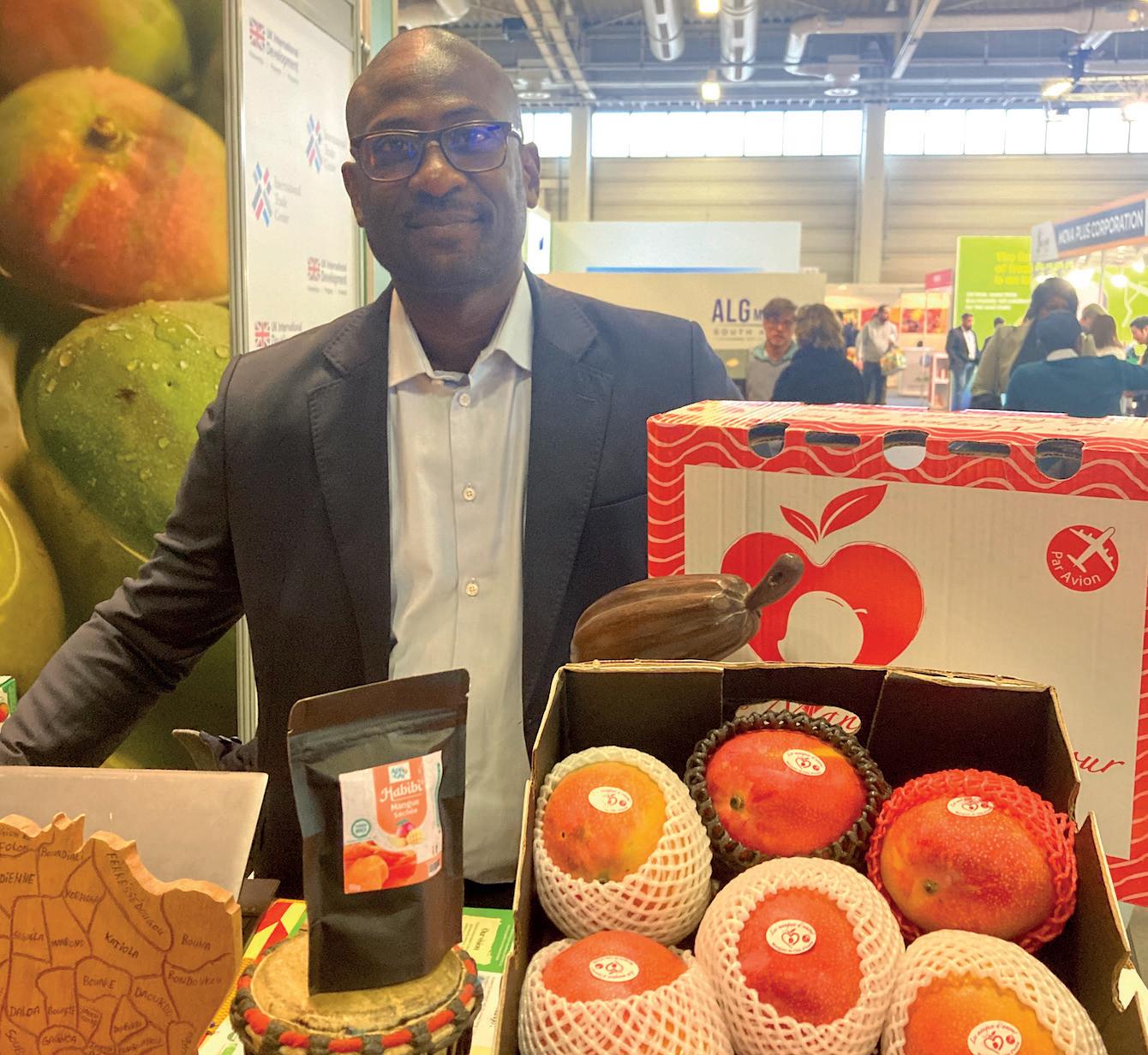
ensuring the availability of quality raw materials, including chemicals and packaging,” said Diaby. “Our farm is 200ha, but we also rely on around 800ha from partner farms. If our partners don’t have the resources for proper treatment, we can’t guarantee the quality needed for export.”
“There are mangoes that are sent by sea, and then there are mangoes that are shipped by air – these are the luxury mangoes”
Nevertheless, Diaby remains confident about the future of Côte d’Ivoire’s mango industry, and said his company was fully committed to supplying a premium product to international markets. Even in the face of unpredictable weather patterns, which have affected crops like maize and rice in the country, Diaby is optimistic.
“Mango production is not as sensitive to weather changes as other crops,” he said. “We may sometimes see a reduction in yield as a result of a lack of rain, but we can still guarantee the highest quality mangoes for export.” E
Describing new sustainable region Neom as “more than a construction project”, Topian says it is committed to reshaping food production in Saudi Arabia.
by Tom Joyce
You may well have heard of Neom – the region taking shape in northwest Saudi Arabia, one of the most arid parts of the world – which has been described by Topian, tasked with developing sustainable food production methods for the city, as “more than a construction project”.
At its heart, the company says, lies a commitment to reshaping essential sectors, including food, transforming production and validating groundbreaking technologies.
“Topian’s mission is to ensure access to healthy, delicious food produced sustainably for the benefit of both people and the planet,” explains Dr Juan Carlos Motamayor, CEO of Topian.
“Innovation is in our DNA. We’re committed to developing watersaving agricultural solutions and contributing to Saudi Arabia’s food security and environmental goals. This is crucial for the Kingdom and a model we believe can be impactful globally.”
Leveraging cutting-edge technologies and sustainable practices, Topian has built a hightech greenhouse piloting climateproof agriculture in Oxagon, a state-of-the-art refurbished aquacultural hatchery and advanced vertical farms.
“We’ve achieved impressive
progress against ambitious targets in a remarkably short timeframe,” says Pierre Broun, director of agriculture at Topian. “Our current assets are poised to deliver exceptional quality produce, laying the foundation for our first phase of production, which will include premium lettuce, strawberries and tomatoes.”
The next phase of production is set to focus on premium berries, table grapes and expanded ranges of tomatoes, peppers and lettuces, with the company seeking partnerships with leaders in those segments.
“The response from international companies has been incredibly positive,” says Konstantine Vekua, agricultural projects manager at Topian, who is leading the outreach. “There’s a clear recognition of the immense opportunities within Saudi Arabia’s rapidly growing food sector and a strong interest in exploring joint ventures with Topian.”
Topian says collaborations will be essential to bring in new technologies, incorporate specialised knowledge, further diversify Saudi agriculture and enhance the Kingdom’s global competitiveness.
“By combining Topian’s visionary approach with global expertise and cutting-edge




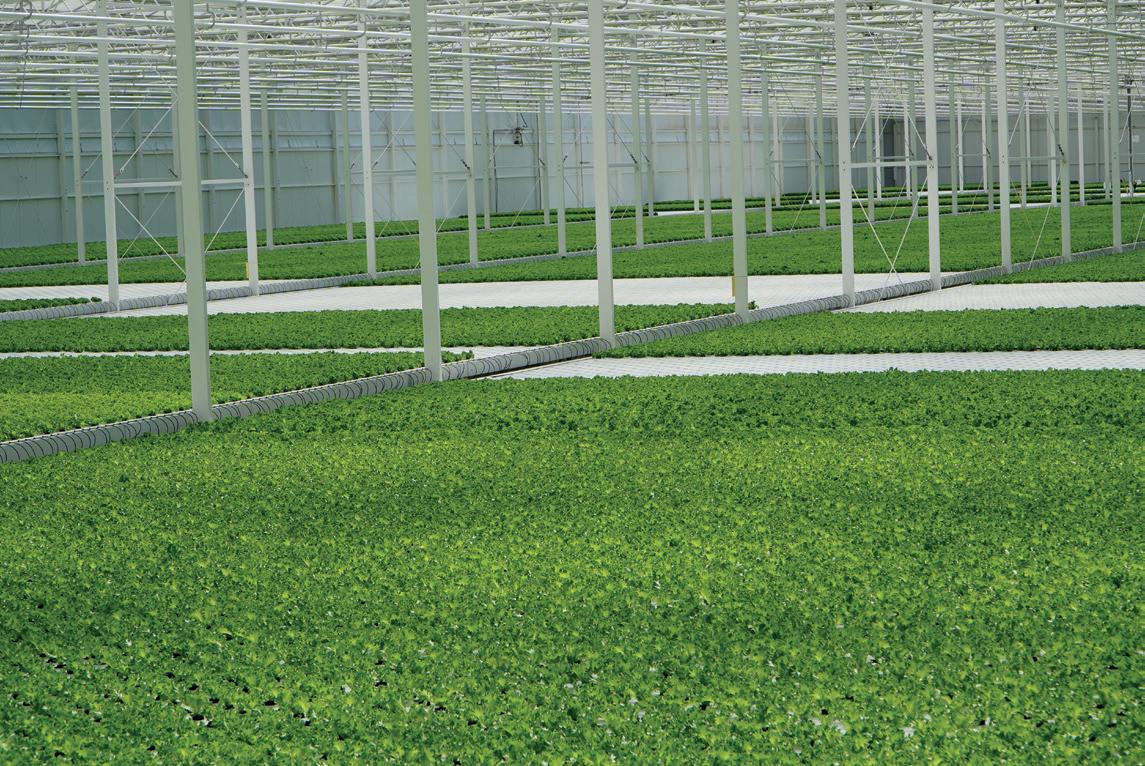
technologies, the company aims to transform the fresh-produce landscape in Saudi Arabia and set new benchmarks for sustainable agriculture worldwide,” Topian states. E
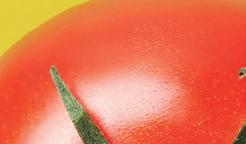


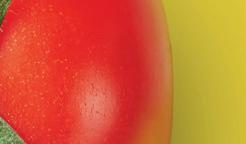
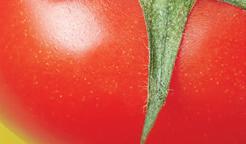
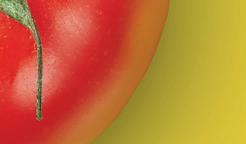







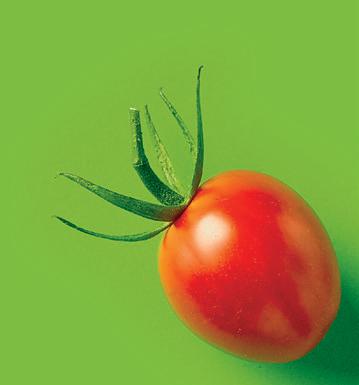



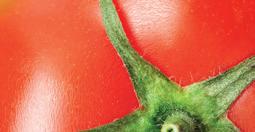






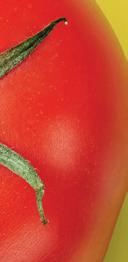

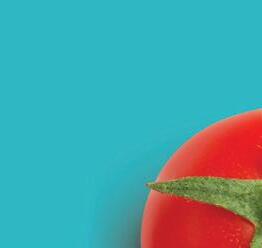
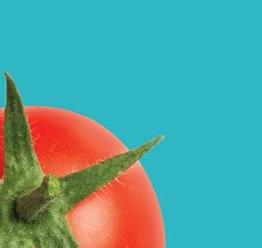



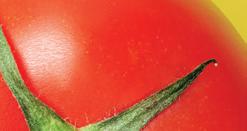

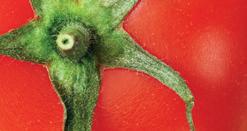









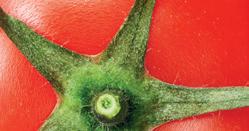
















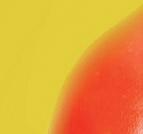
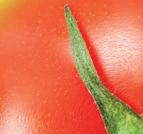
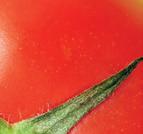

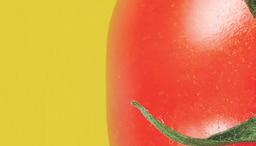


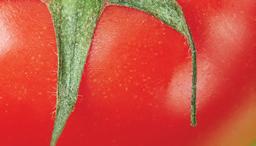




















By Christián Abud Managing director, Abud y Cía
When kiwifruit arrived in our country at the end of the 1980s, plantings expanded very quickly, leading to a rapid increase in production and subsequent crisis in prices. With Europe as their only export market and a series of production problems to contend with during the 1990s, many growers eventually gave up and left the industry. This caused a major crisis, as kiwifruit was already ranked as the third or fourth most widely grown
fruit in Chile, and for more than a decade returns remained low. But in recent seasons the industry has shown a resurgence. The formation of the Kiwifruit Committee in 2008 has paved the way for the standardisation of basic quality criteria and enabled exporters to open up new markets like India.
There are various reasons for the revival of kiwifruit production, not least the impact of climate change. Italy, for example, has seen its output
OPPOSITE—Christián Abud, managing director of Abud y Cía
THIS PAGE—Chile’s export markets are highly diversified, and there are good opportunities for shippers of green kiwifruit to fill the gaps left by New Zealand as it focuses on Asian markets
of green kiwifruit fall from 500,000 tonnes to 130,000 tonnes in the space of a decade due to PSA and Moria. This has prompted growers to move towards yellow and red kiwifruit, which fetch higher returns and are more resistant to disease when grafted onto Bounty rootstock, which hasn’t proven to be as effective for green kiwifruit.
Chile’s main competitor, New Zealand, has also increased its production of yellow kiwifruit, while green kiwifruit production has fallen by 40 per cent due to the limited availability of suitable soils and growing areas. New Zealand is positioning itself as a key supplier to Asia, where consumers prefer a sweeter kiwifruit and are willing to pay high prices for a premium product. As a result, Chile is looking at filling the space left unoccupied by Zespri in other parts of the world.
It’s worth noting that demand for kiwifruit increased globally during the pandemic due to its positioning as a superfood. Since then, consumption levels have held up in traditional markets, while new markets with considerable potential, such as India, have opened up.
Because Chilean kiwifruit is shipped to many markets worldwide, the commercial risk involved is much lower than for cherries, which are heavily reliant on the Chinese market. Kiwifruit exports to China have been practically non-existent in recent years, which has allowed exporters to focus on other destinations. This diversification provides greater stability and security to exporters, reducing their vulnerability to fluctuations in a single market.
Moreover, unlike cherries, kiwifruit production has not increased significantly in Chile in recent years, largely because of previous negative experiences such as PSA, high initial investment costs and low returns.
Another limiting factor is that kiwifruit is very demanding in terms of the quality and availability of water, soil and climate it requires, so its potential to be grown successfully is limited to very specific areas. There is a good opportunity to develop production in these areas without strong competition from other valleys.
Chile learnt important lessons from the kiwifruit crisis, not least ensuring that orchards are sustainable over time and that production is limited to places where the fruit will grow well. Before investing in new plantings, it is vital to carry out a climatological, water and soil study. Experience shows us that kiwifruit production is more stable than cherries, but the right water and soil parameters are crucial. New plantations should be limited to areas with a coastal climate that are less
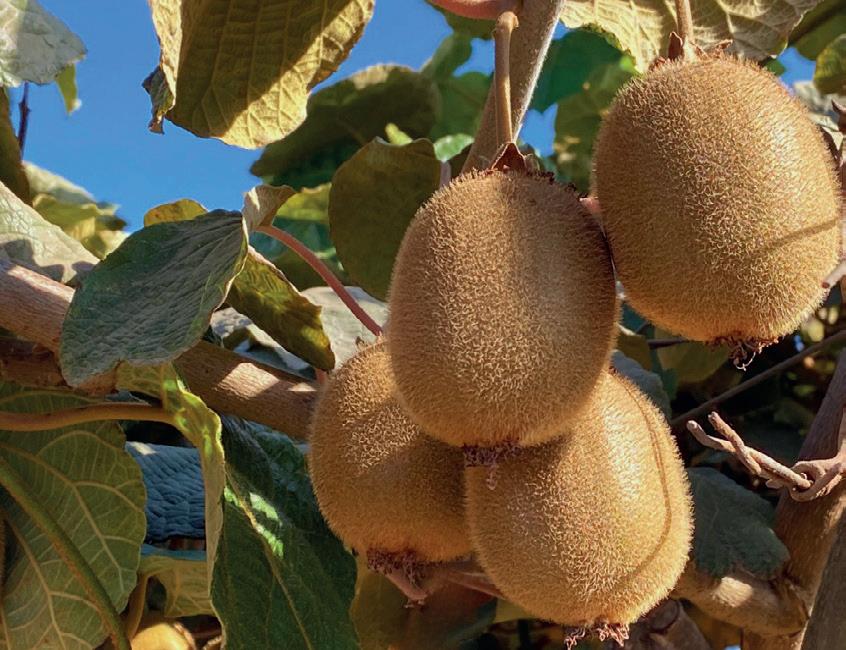


susceptible to frosts, where the soil is well drained, preferably loamy and deep, and with an abundant availability of water.
Provided the above criteria are followed, a modern orchard planted with newer genetics such as Hayward Clone 8, and with a nursery plant format from propagation by cuttings, can easily produce 50 tonnes of very good quality fruit per hectare.
Everything indicates that Chile has a huge opportunity to develop a sustainable kiwifruit industry, but we must learn from our past mistakes. For example, new

varieties should be required to undergo field studies of at least five years before being planted.
One of the diseases that is most impacting kiwifruit production in Chile right now is PSA, caused by the bacteria Pseudomonas syringae pv. Actinidiae. It was first detected in 2010 and affects varieties such as Hayward, Summer kiwifruit, Kiwi Kiss, Sorelli and Jintao. The disease appears between August and September, in the form of red sap oozing from trees, but it can also be observed later in the production cycle in the form of brown spots on the flower bud and leaves, so it requires constant and high levels of monitoring.
Another important threat to kiwifruit cultivation in our country is Verticillium, a soil fungus that causes wilting of plants. It particularly affects yellow varieties which is why, although
different regions of the country. In 2012 an even greater threat emerged in the form of Moria, which has significantly impacted commercial orchards. Currently this pest has been detected in several European countries, including Spain, France, Greece and Portugal, marking a worrying advance on the continent. The situation Italy faces should prompt us as an industry to redouble our efforts on prevention, based on sustainable and regenerative management of soil and water, which is the key to fighting this disease.
Although this type of pest cannot be eradicated, producers have found effective strategies to combat its spread. In the case of Italy, for example, the Bounty rootstock has been found to be more resistant to Moria, as well as a high tolerance to clayey soils. The Hayward variety is very sensitive to Moria, which is why plantings of this variety have decreased considerably. The Bounty

very attractive commercially, their production is restricted.
After a recent technological visit to Italy carried out by Abud & Cía and financed by the Maule Regional Government and the Foundation for Agrarian Innovation (FIA), a group of producers was able to observe other types of threat to production, which have strongly affected the Hayward variety in that country.
PSA was first discovered in Italy in 2006, spreading rapidly through
rootstock has proven to be more erratic in its compatibility with Hayward and less resistant to Moria than the yellow varieties.
In Chile, we are also looking for solutions to deal with PSA, which is why Abud & Cía recently embarked on a project with the support of the Foundation of Agricultural Innovation and the regional government of O’Higgins to study new production systems based on the use of grafted plants with
The 2025 Chilean kiwifruit crop is expected to weigh in at 128,000 tonnes, 12-13 per cent down on the previous year, according to preliminary estimates. Carlos Cruzat, president of the Chilean Kiwifruit Committee, said the fall is due to the presence of PSA and frosts in the Precordillera del Maule, Ñuble and Biobio regions.
Despite the reduction in volume, Cruzat said the quality of the crop augurs well for the new season, with a prevalence of larger calibres and less second-class fruit. “The fruit is good enough, and if climatic conditions continue to be favourable, the shortfall could be less, say between 7 and 10 per cent,” he noted.
Cruzat suggested that Chilean producers could benefit from the larger sizes, which command higher prices on the market. He said that growers are also optimistic about brisk sales of European kiwifruit. The key, according to Cruzat, is to focus on the quality of the fruit, harvest it at the optimal time and not to miss the markets.
The committee will once again carry out promotional campaigns in key markets such as India, the US, Mexico and Brazil, seeking to increase consumption and consolidate the presence of the Chilean kiwifruit.
greater tolerance to PSA and greater productive potential.
The three-year project found that the Hayward Clone 8 plants were less susceptible to PSA than regular Hayward kiwifruit plants and obtained more cylindrical and uniform fruit, offering a promising alternative for Chilean producers.
It is clear that as a country we must diversify our varietal offer and develop home-grown varieties of yellow-fleshed kiwifruit that adapts productively to our reality and allow us to diversify our production. Red kiwifruit looks very attractive commercially, but as long as the phytosanitary problems remain unsolved, its successful establishment in Chile is unlikely.
We must also continue to try out different rootstocks, especially Bounty, as this could give us a way of planting in more restrictive soils and provide greater tolerance to current diseases. All this suggests that Chile has an enormous opportunity to develop a sustainable green kiwifruit industry – but the challenge is still on in yellow and red varieties. E
Abud y Cía has been providing technical and management support to Chilean fruit growers for more than 25 years.
ABOVE LEFT—Kiwifruit requires very specific climatic and soil conditions, so new plantings should be limited to areas where it is known to grow well
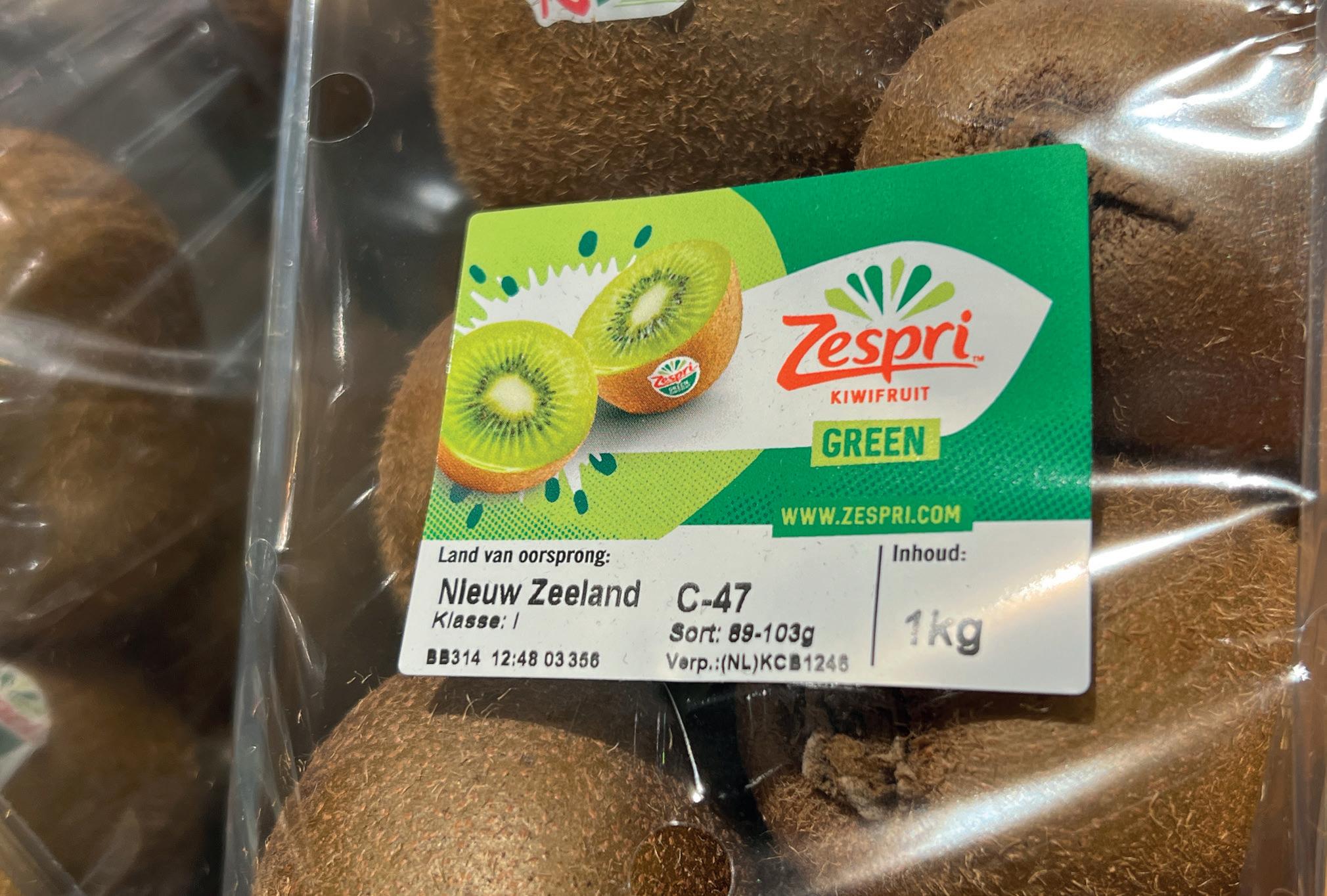
Milestone reflects kiwifruit marketer’s focus on brandled marketing, as consumer interest in product’s health properties continues to generate new demand.
by Bree Caggiati
Kiwifruit brand Zespri has made its way into more than 100mn global households for the first time, according to new household penetration data. The milestone reflects growing global demand for the product, with Zespri’s shopper panels revealing the kiwifruit marketer has achieved around 23 per cent penetration across its core markets.
Zespri’s chief marketing, innovation and sustainability officer, Jiunn Shih, said the company was proud to have built on strong consumer demand for kiwifruit and establish a brand consumers love.
“This milestone reflects our continuous focus on brand-led marketing efforts showcasing the benefits
of our high-quality, nutritious and great-tasting Zespri kiwifruit,” he commented. “It also demonstrates the progress we’ve made with our expansion into new markets and our use of new sales channels –making our kiwifruit available to more households across the globe.”
Shih said kiwifruit is an increasingly popular choice for consumers who are seeking products which support their health and wellbeing.
ABOVE—The kiwifruit brand has achieved 23 per cent market penetration
“While kiwifruit continues to rise in popularity, there is still plenty of untapped demand which presents an opportunity for Zespri and our growers to continue to supply good quality fruit to grow household penetration further as volume increases,” he said.
“We’re incredibly confident in the outlook for the category and our ability to create ongoing value for our growers. With an expected crop volume from New Zealand of more than 200mn trays of kiwifruit this season, we’re looking forward to making more nutritious Zespri kiwifruit accessible to even more consumers around the world, in an increasingly competitive market.” E
Justin Chadwick, who will soon retire as chief executive of the South African Citrus Growers’ Association, looks back at three decades of service.
by Fred Meintjes
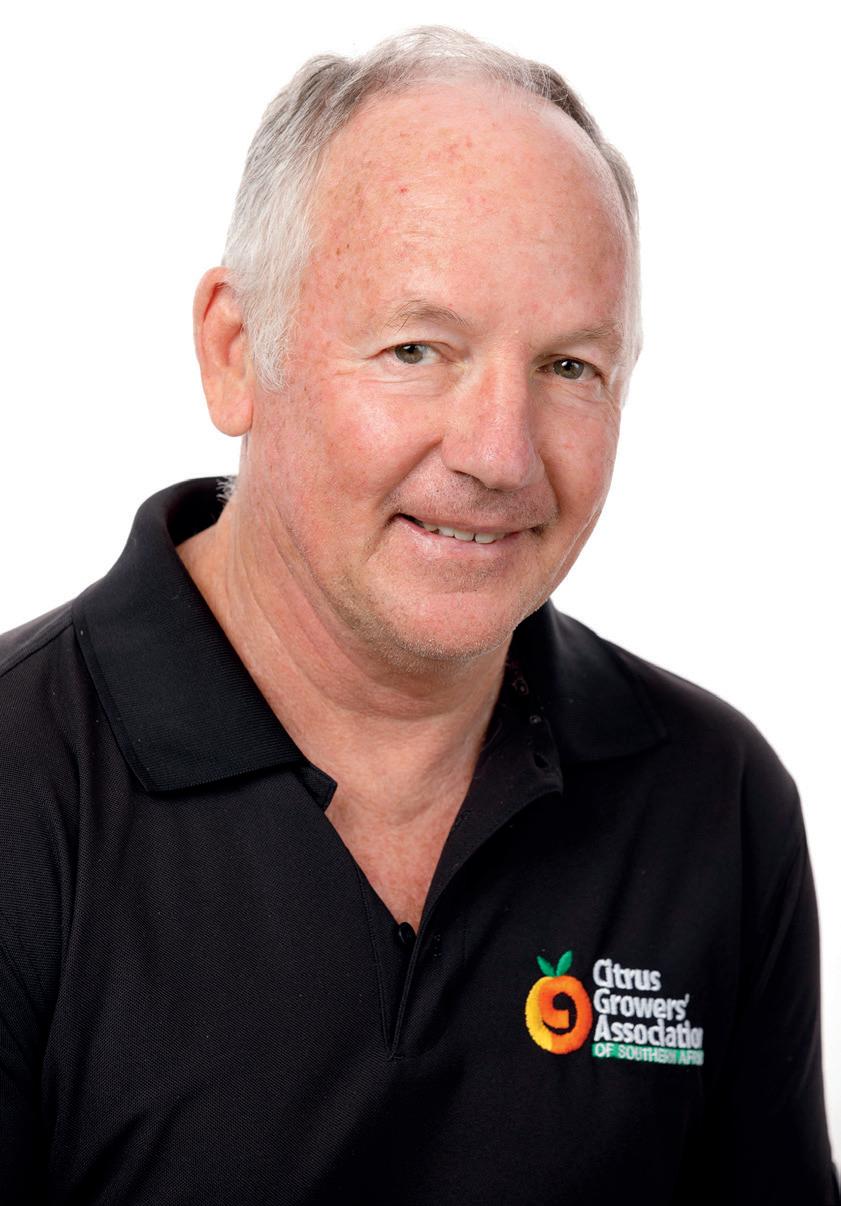
Justin Chadwick, long-serving chief executive of the Citrus Growers Association (CGA), says the South African industry has learned many lessons in the past quarter century.
“The industry’s story the past 25 years is one of growth, resilience and adaptability,” he outlines. “It has made us stronger. I would describe the industry as a community, and a supportive one at that.”
Chadwick is speaking exclusively to Eurofruit at the end of a career that saw him filling leading roles in the global and South African citrus business, as well as across the country’s wider fresh produce industry.
“Citrus has become the economic heart of so many rural communities. It supports 140,000 livelihoods on rural level,” he reflects. “I would describe the citrus industry as strong but held back from greater growth by significant challenges. Most of these challenges we can’t solve as an industry by ourselves. All role-players and stakeholders must come together to do so.”
The unity forged within the Southern African citrus industry has been one of the most significant achievements, he continued. “When I joined CGA
25 years ago there were fault lines throughout the country with different factions peddling different narratives and priorities –with little cognisance of the greater good,” Chadwick remembers. “Without doubt the Southern African citrus industry is now united behind a common vision and common objectives.”
Working with growers remains one of the extremely satisfying parts of the business, he confirms. “They are the most ‘can do’ people in the world and survive – and even thrive – through extremely adverse times. They are the most hospitable people I have ever met. They are more than members or business acquaintances – they are friends.”
The formation of the World Citrus Organisation (WCO), and co-chairing it with Spanish partners from Ailimpo, was also a
BELOW LEFT—Justin Chadwick
BOTTOM—The CGA has been instrumental in facilitating the growth of the sector
OPPOSITE—The industry is set to expand further, although challenges remain
satisfying moment.
“This has brought all responsible citrus industries around the world together to ensure that the global citrus family continues to attract consumers to consume tasty, nutritious, healthy and safe citrus fruit,” Chadwick enthuses. “There is more that binds us together than keeps us apart – fortunately most global players recognise the value of this goal of the WCO.”
Ongoing industry expansion, achieved despite extreme odds, has also been rewarding, with Chadwick commenting that it is satisfying to know the CGA has been instrumental in creating an enabling environment for such growth to occur.
However, he is quick to remind CGA members that there are still major challenges to face.
“We are still concerned about
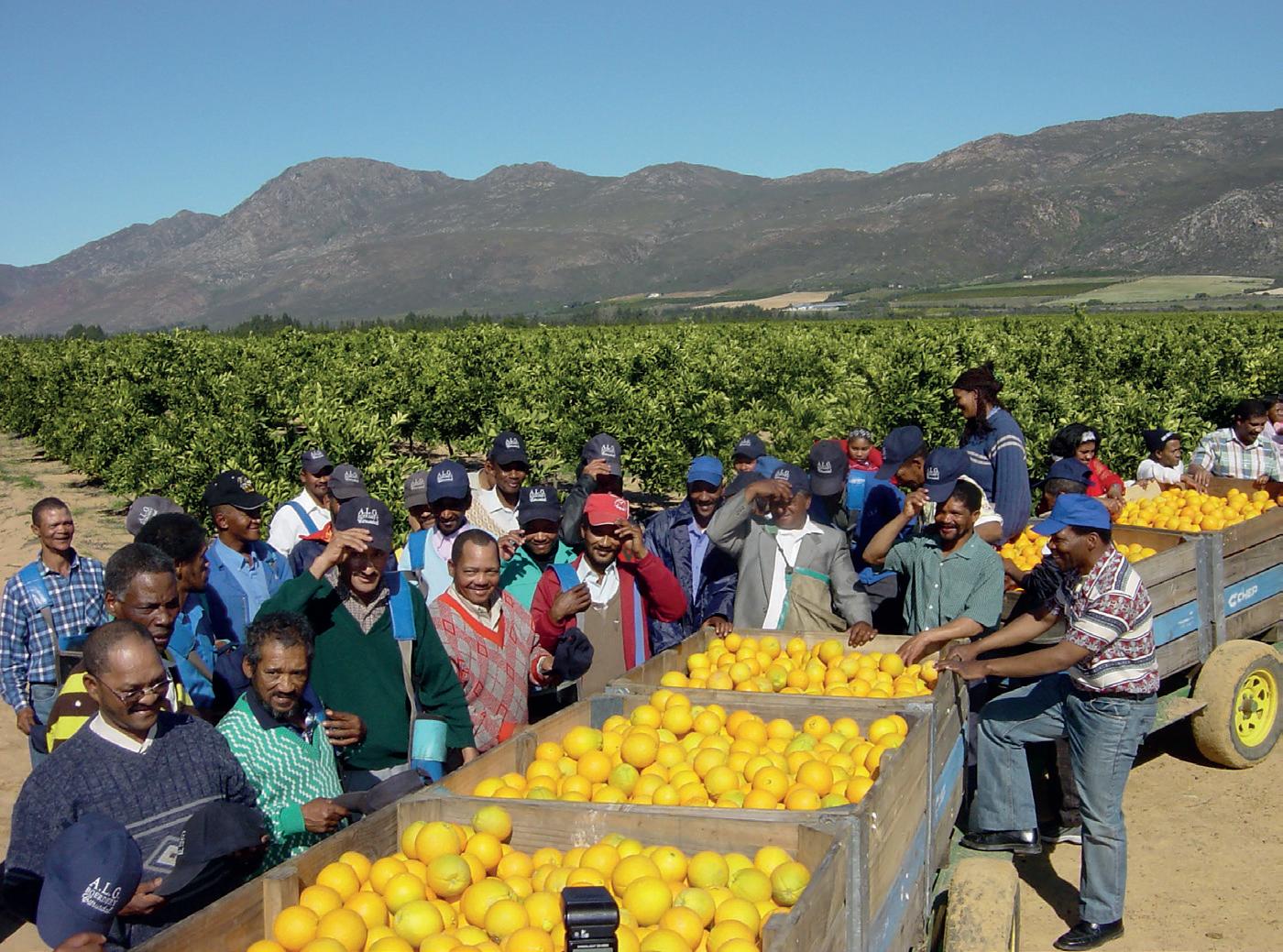
“Without doubt the Southern African citrus industry is now united behind a common vision and common objectives”
port logistics,” says Chadwick. “The only way to improve our container terminal efficiency in the longer term is with greater urgency regarding private public partnerships. More and more fruit will be coming off the trees, and the ports must be able to handle this increase, otherwise a massive opportunity for job creation and economic growth will be missed.”
A further challenge is solving what he calls the European Union’s “unscientific and unnecessarily trade restrictive measures” on citrus black spot and false codling moth, which he says remain “an enormous obstacle to growth.”
These measures on imports from South Africa are being challenged by the South African government at the World Trade Organisation in two historic trade
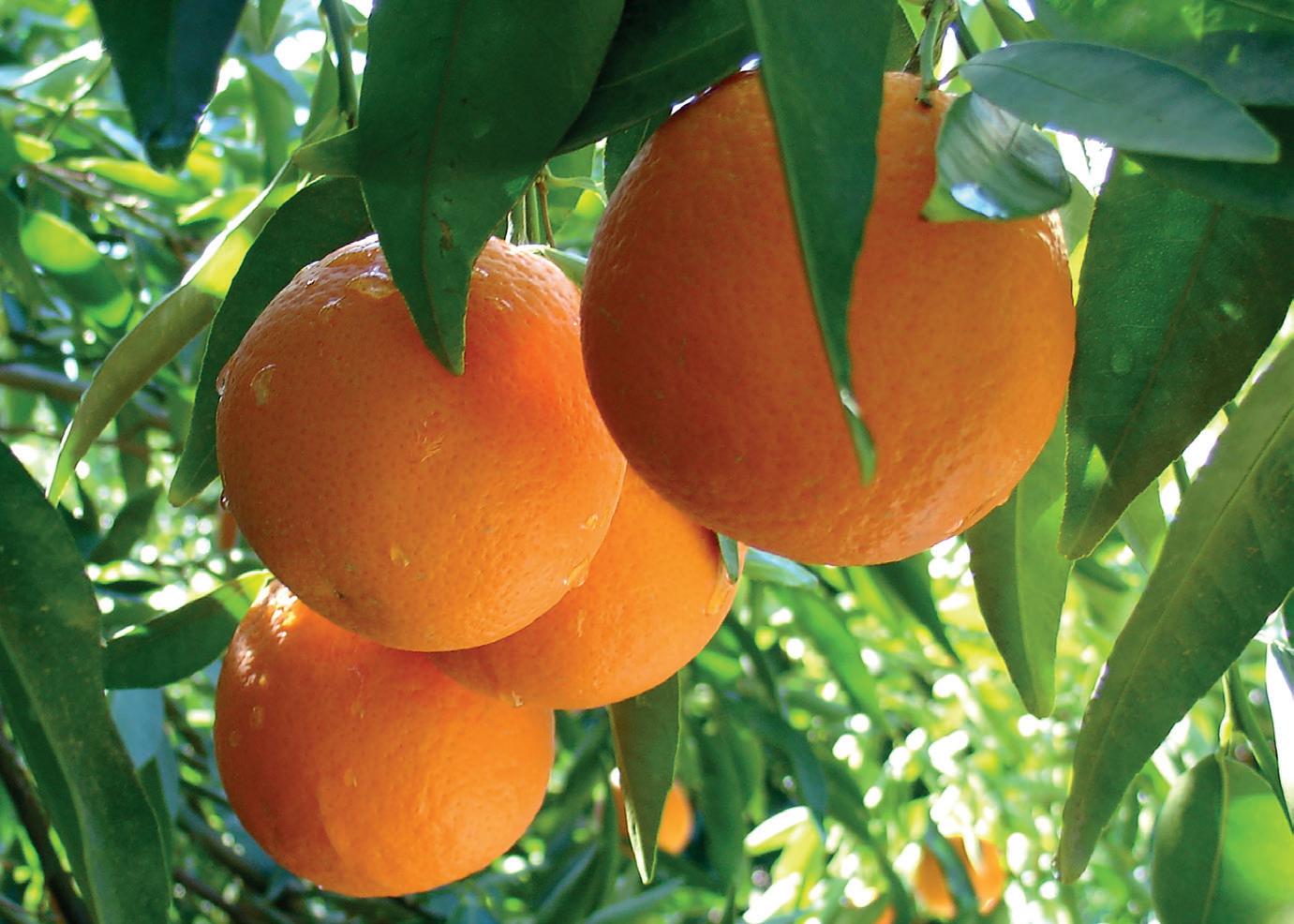
dispute cases.
“Should a satisfactory outcome be reached at the WTO, it will stimulate citrus export trade significantly,” he explains. Looking ahead to the future,
Chadwick confirms that he wants to stay involved in the citrus industry. “My blood is orange. I am weighing up different options and will advise as soon as these are finalised.” E

South African study says the cost of inefficient logistics to the country’s citrus industry was a “staggering” R5.27bn in 2024 alone.
by Fred Meintjes
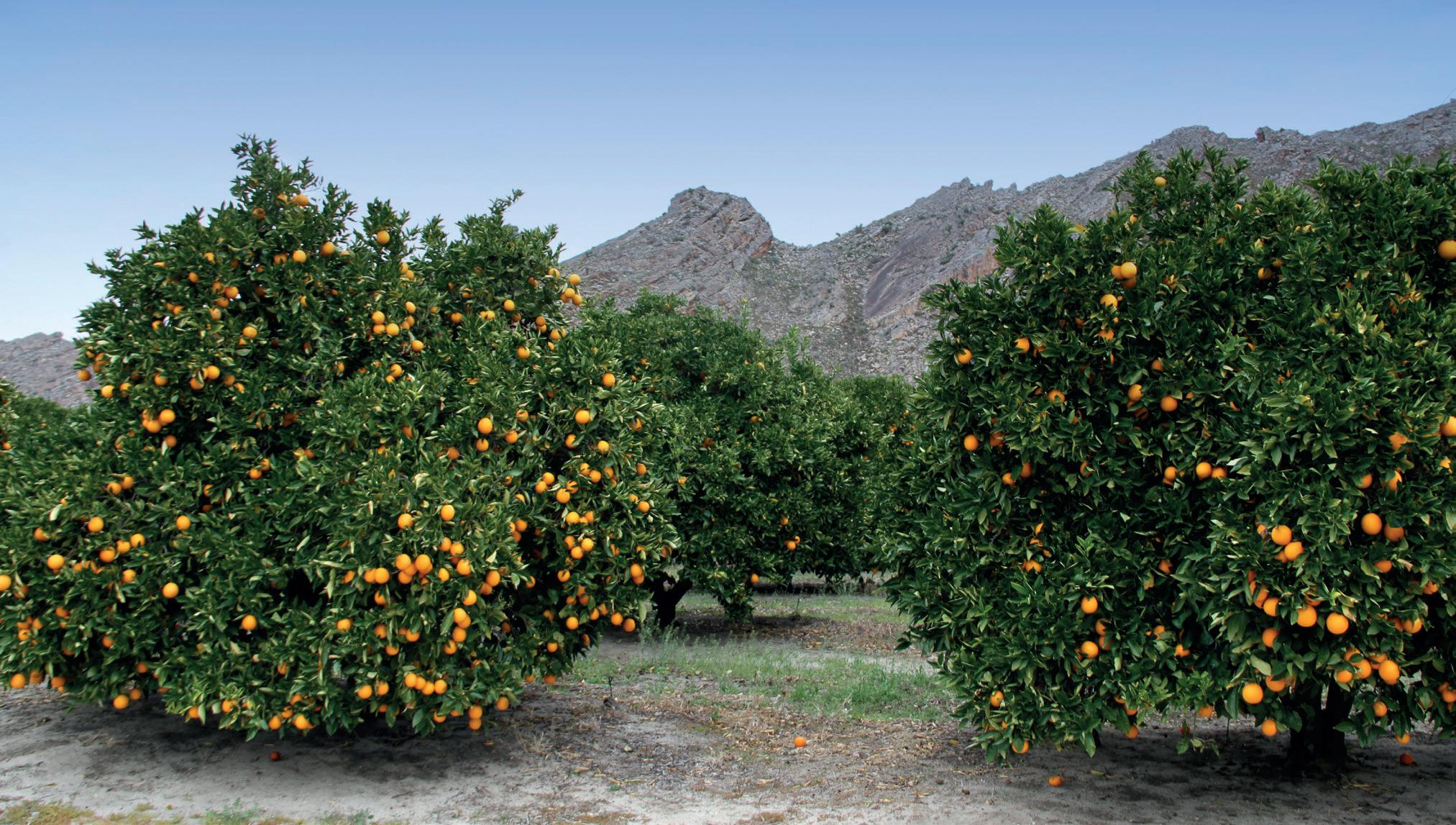
An independent study conducted by the South African Bureau for Food and Agricultural Policy (BFAP) has found that the combined direct and indirect costs of inefficient logistics to the citrus industry were a “staggering” R5.27bn in the 2024 season alone.
“This represents a debilitating loss of foreign revenue to the country and a setback to creating desperately needed jobs,” said outgoing Citrus Growers Association (CGA) chief executive Justin Chadwick.
Chadwick said the CGA hoped finance minister Enoch Godongwana would prioritise the country’s logistics crisis in the upcoming budget speech.
“The huge cost makes it clear that large-scale public private partnerships at ports across
South Africa are urgently needed,” said Dr Boitshoko Ntshabele, incoming chief executive of the CGA. “While the findings of the impact assessment are deeply concerning, the CGA views this as an opportunity to collaborate with stakeholders and implement effective solutions.”
The BFAP quantified the cost of logistical inefficiencies for the 2024 citrus season, with direct expenditure increasing by an estimated R1.56bn. Indirect cost, which is the revenue lost as produce is sold at a lesser price, was estimated at R2.6bn, with waste estimated at R1.1bn.
Chadwick explained that citrus was a perishable product with a limited shelf-life, so it was especially vulnerable to the impact of delays.
“The study quantifies the effects
of slow port throughput, deteriorating road and rail infrastructure, unreliable schedules, inefficiency surcharges imposed by shipping lines, and missed market opportunities,” he continued. “The losses and added costs jeopardise the long-term viability of the citrus industry. They also impact emerging growers and new entrants the hardest.”
Finally quantifying the damage was an important step, according to Gerrit van der Merwe, chairperson of the CGA and a grower in Citrusdal.
“In a certain sense South Africa has gotten used to the destruction of value that has been happening on a greater or lesser scale over the last few years,” he said.
“It’s incredibly frustrating for the growers and their rural communities, who feel the impact directly.”
Because of projected harvest increases over the next few years, the citrus industry has the potential to create tens of thousands of more jobs.
“If not addressed soon, our ports, already beset with these delays, will not be able to handle the increased volumes at all,” Ntshabele added. E
TOP—The logistical issues in the country have been described as “incredibly frustrating” for growers and exporters
New rules allow cold treatment to be carried out during transit.
by Maura Maxwell
India has streamlined its import regulations for Spanish citrus. Under the new protocol, shipments of oranges will be permitted to undergo cold treatment during transit rather than prior to departure as before.
The decision comes four years after Spain’s Citrus Management Committee (CGC) carried out a pilot shipment of 243 tonnes of Valencia oranges to India under the new protocol. The fruit arrived in good condition and the cold treatment applied during the journey proved to be effective against Mediterranean fruit fly.
CGC president Inmaculada Sanfeliu said the move put India’s protocol in line with that of other major citrus markets such as the US, China, Australia and South Korea.
“Opening third markets outside the EU is a complicated task that requires the special commitment of the government. Now the challenge will be for our citrus to make a place for itself in a destination as promising but as far away and complicated as India, the most populated country,” she said.
India is the world’s third biggest citrus producer, surpassing 16mn tonnes in 2023/24. Almost all its production is sold domestically, with small quantities exported to nearby Asian markets.
While still limited, citrus imports – particularly oranges –are projected to grow thanks to the country’s rapidly expanding middle class. In 2009 the country imported 10,000 tonnes of citrus, while in 2023 this had risen to more than 154,000 tonnes.
BELOW—Spain has high hopes for the Indian market
BOTTOM—Some of those involved in the pilot shipment, which took place in 2021


16mn
tonnes of citrus produced by india in 2023/24
Egypt is by far the largest supplier, accounting for around 82 per cent of imports. It is followed by South Africa and Australia. Spain has high hopes for the market, although the 30 per cent import tariff imposed on fresh citrus remains a barrier to growth.
Recently, the president of the European Commission, Ursula von der Leyen announced during a meeting with Indian PM Narendra Modi that Brussels would like to have a free trade agreement in place with India by the end of this year. E
WAO conference hears how marketing initiatives help drive sales in key markets.
by Maura Maxwell
European avocado consumption grew significantly in 2023/24, according to the latest data from the World Avocado Organisation (WAO). The data, presented at the WAO’s annual members’ congress held the day before Fruit Logistica, shows consumption growth in major markets like Germany, France, the UK and Italy compared to 2022/23.
Avocado sales in Germany grew from 110,000 tonnes in 2023 to 120,000 tonnes last year, while Italy and the UK also showed strong growth. France topped the table with 160,000 tonnes, an increase of 6.67 per cent year-on-year.
Analysis of per capita consumption figures shows that France remains the leader with 2.31kg. The UK is second with According to Europanel, avocado sales increased by 13.2 per cent in volume across Europe last year
Rwandan fruit exports surge on back of strong avocado sales
Strong international demand for avocados helped lift the value of Rwandan fruit exports by 61 per cent in 2023/24. Figures from the Ministry of Agriculture and Animal Resources shows that the country exported US$30.6mn of fruit, up from US$19mn in the previous year. Export volume grew 58 per cent to 34,700 tonnes. Key markets include the DR Congo, UAE and Vietnam.
Sada Gakuru, managing director of Kigali-based exporter S&I Fresh Ltd, said avocado exports had risen from 2-3 tonnes per week in 2021 to 15-20 tonnes in 2023/24, thanks to strong international demand.
As well as avocados, Rwanda exports macadamia nuts, passion fruit and strawberries, along with a variety of processed products such as juices.
1.71kg, followed by Germany with 1.48kg and Italy with 0.81kg. It is worth noting that Italy and France maintained their per capita consumption from last year, while the UK and Germany saw a notable increase. It is believed that this is partly due to more consumers discovering avocados.
According to new data from
Montosa cuts plastic in avocado and mango packaging by 90 per cent
Málaga-based tropicals specialist Montosa has reduced its use of plastic packaging by 90 per cent in the last three years by substituting it for cardboard, paper and cellulose mesh.
Cutting plastic usage has been one of the company’s priorities for many years. With France as its main export destination, it had already adapted in 2022 to the French ban on plastic packaging for fresh fruit and has increased its commitment with more sustainable formats in other markets.
Marta Santos, manager of Montosa’s quality department, commented: “Both our clients and our consumers have given a very positive rating to our sustainable packaging. That’s why we are now going one step further to offer these solutions in other markets, not just in France. Obviously we always adapt to the needs of each individual client to avoid any increase to the final retail price of the product”.
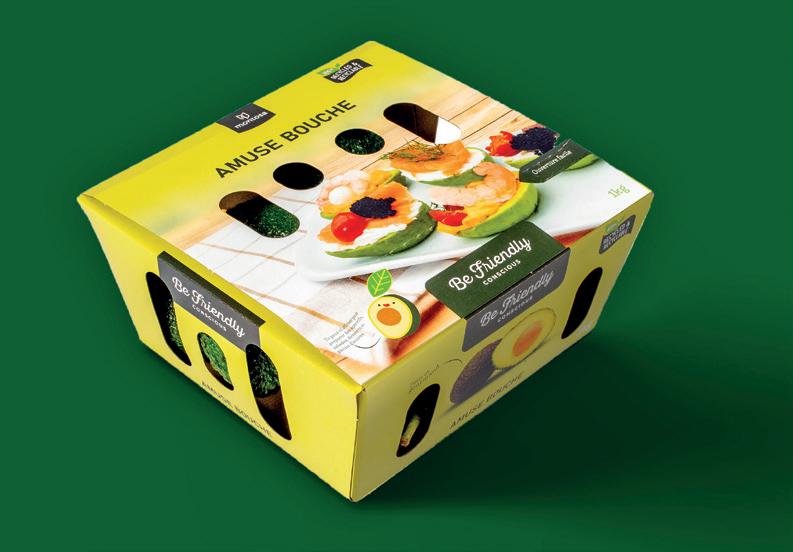
Europanel, avocado sales increased by 13.2 per cent in volume across Europe last year. A sizeable 80 per cent of Spanish households bought avocados, closely followed by French households. Almost half of British and German households bought avocados, and in Italy the proportion of households adding avocados to their shopping basket grew 8 per cent compared to the previous year.
During its conference, the WAO highlighted the success of its marketing initiatives in increasing avocado consumption and awareness across Europe. The organisation also presented its

ABOVE—Retail collaborations are a key component of the WAO’s strategy
strategic vision and ambitious plans for 2025, focusing on continued growth, innovation and collaboration, cementing its position as a driving force in the global avocado market.
WAO chairman Zac Bard said: “We look forward to building on this momentum and further strengthening our partnerships in the coming year. With Israel, Colombia and Chile on board, we are now well positioned to specifically promote and support the growth of this category in multiple time windows throughout the year”. E
Colombian avocados celebrate Super Bowl success
More than 6,500 tonnes of Colombian Hass avocados were sold ahead of last month’s Super Bowl, an increase of 350 per cent on last year.
Colombia’s agriculture minister, Martha Carvajalino, said: “The diversification and consolidation of agricultural exports is a strategic objective of Colombia. We are moving forward with resilience in opening new markets and strengthening existing ones, such as the US”.
The US market is a key target for the sector, its proximity and huge appetite for avocados making it an attractive option for exporters.
The Colombian Agricultural Institute (ICA) has played a fundamental role in boosting trade with its ‘Inspection at Origin’ programme, which allows for more efficient phytosanitary control and improved export logistics. The programme now includes 20 packing plants in Antioquia, Quindío, Caldas, Valle del Cauca and Risaralda.


New possibilities for Kenyan avocados are opening up, according to Enzispring’s Alice Okello, including in eastern Europe, the Middle East and Asia, but Red Sea issues continue to pose a challenge.
by Tom Joyce
Kenyan avocado grower
Enzispring is a relatively new player on the European market, having begun exports to the continent in just 2023. Based in Nairobi, the company operates farms in the Mount Kenya region, and founder Alice Okello anticipates growth in its export volumes over the coming years.
At present, Enzispring’s avocados are sent primarily to the port of Rotterdam in the Netherlands, according to Okello, where they are then redistributed to Poland, as well as to the port of Algeciras in Spain.
“Consumption of avocados is increasing in Poland,” she said. “Our customer in Poland is keen on doing a long-term partnership with us, committing to two containers per month to begin with. If everything goes well, they will definitely increase their volumes.”
Kenya’s main avocado season runs from March to October, providing a longer supply window than many of the country’s competitors. However, Kenyan volumes to Europe fall during Peru’s peak, when the focus shifts instead to the Middle East market.
“When Peru gets into the market, we take a back seat a little bit,” said Okello. “The Middle East offers more stability than Europe in terms of continuity of supplies. The main uncertainty there is the fluctuating prices. Sometimes when Kenyan avocados flood the market, the prices go much lower.”
Enzispring currently sends to Dubai, which serves as a hub for the wider Gulf region, but Okello said that opportunities for direct shipments to markets like Saudi Arabia and Iraq are increasing.
When it comes to logistics, Okello said the support of Maersk had been instrumental, giving Kenyan avocados access to new ports, including in India and China.
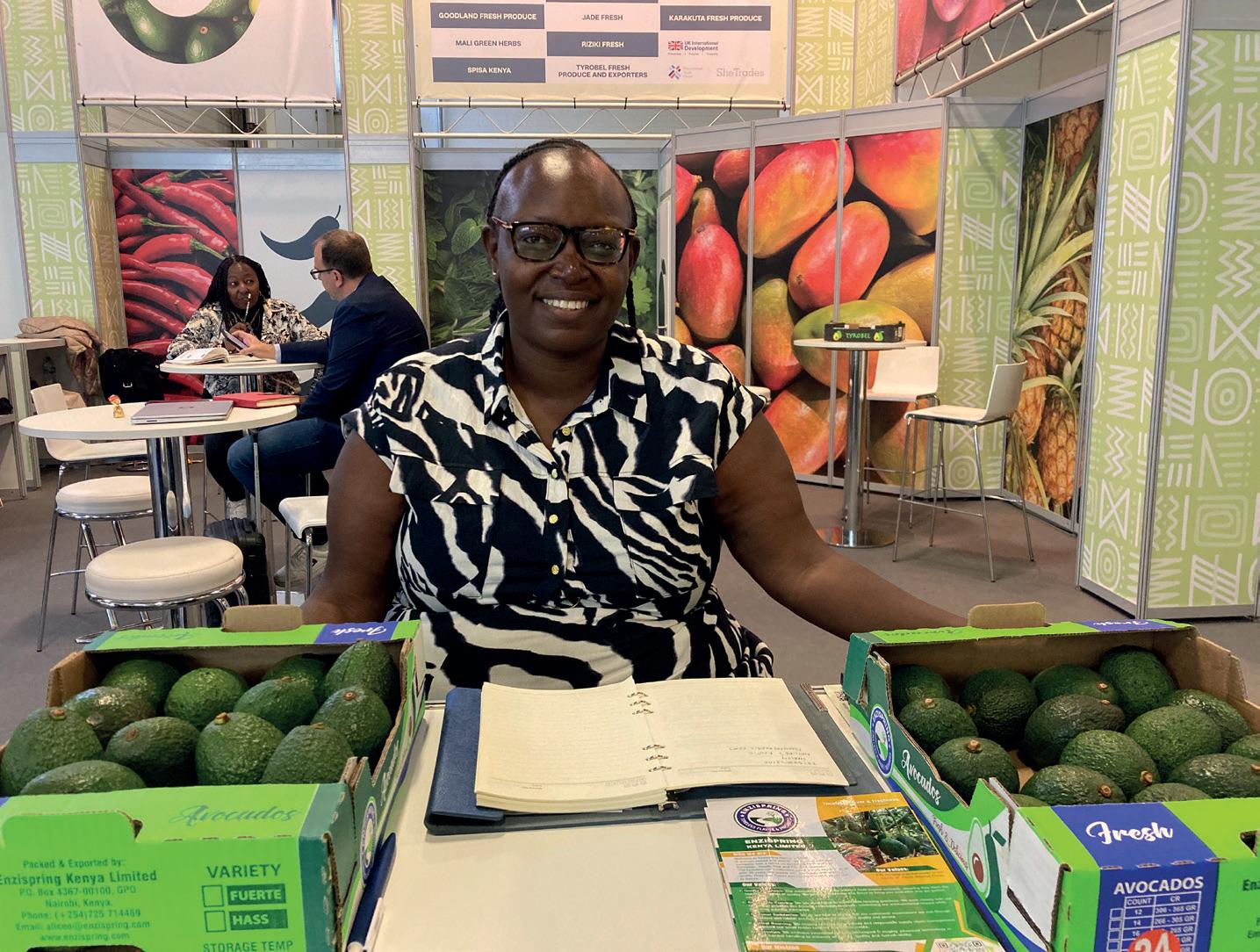
“The support of Maersk has been instrumental, giving us access to new ports, including in India and China”
“The only issue now is the Red Sea situation,” she added. “We’re really hoping for that to be sorted out, hopefully in the next few months, but it’s been very unpredictable.”
She said that delays caused by the crisis in the Red Sea had meant longer shipping times, with deliveries now taking up to 42 days to reach Rotterdam, compared with 23 days previously. “It’s a challenge, but we have to find ways to reach the market with top quality,” said Okello. “We use ethylene traps to manage the ripening and ensure the avocados arrive in peak condition.” E

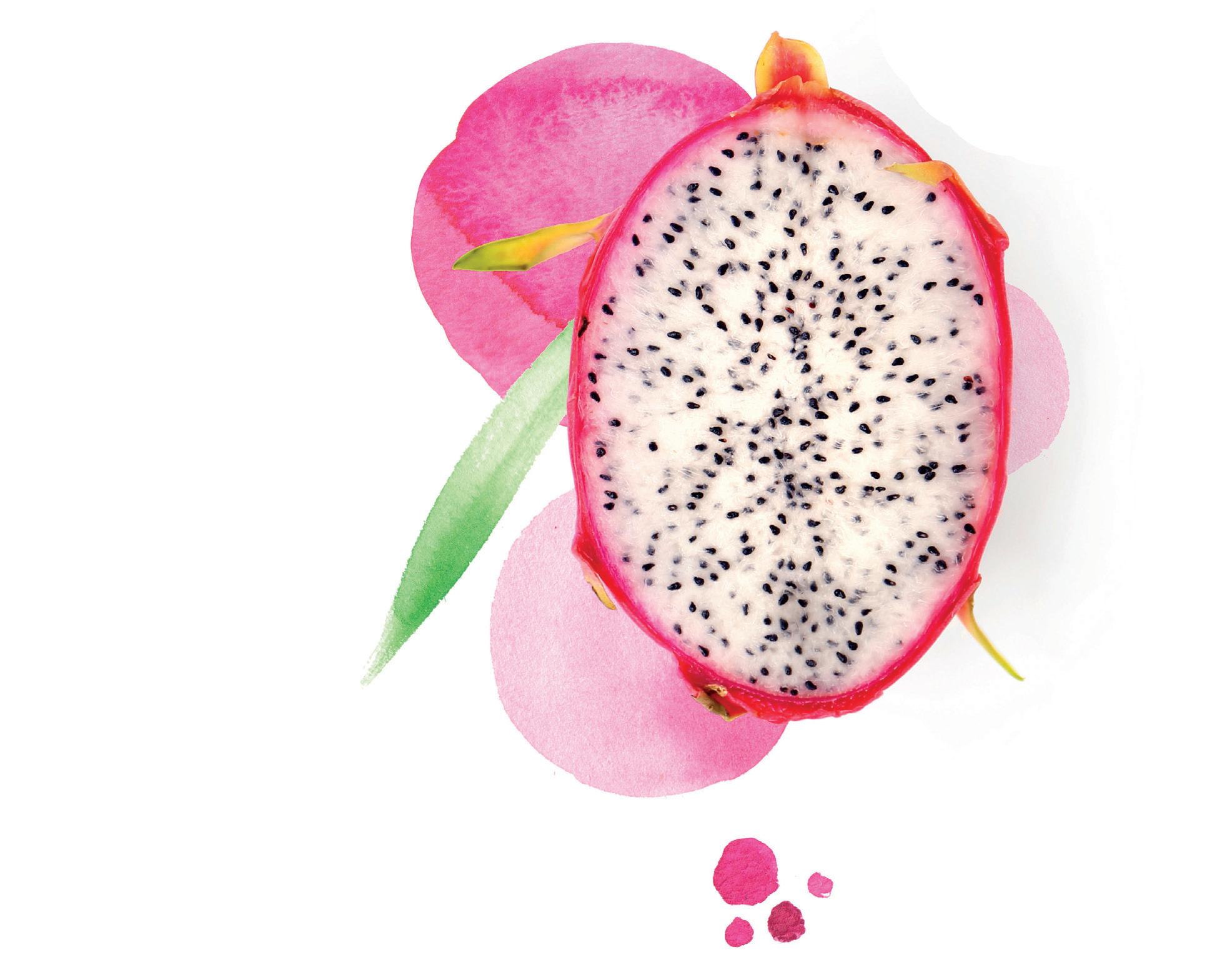
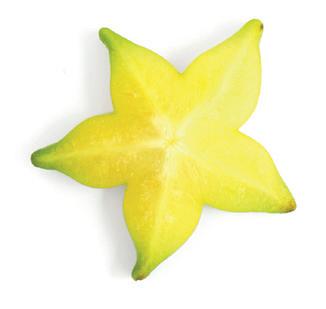
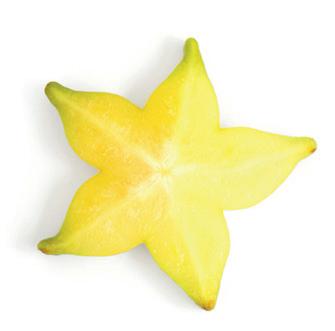
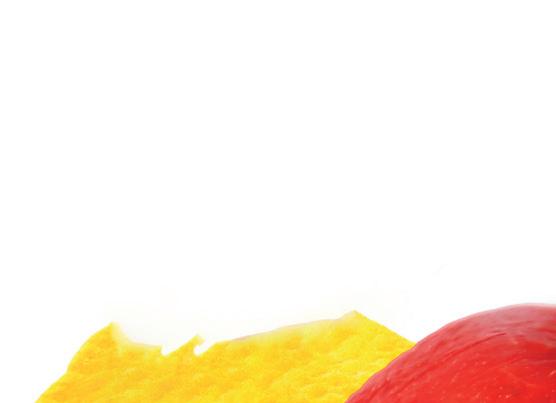
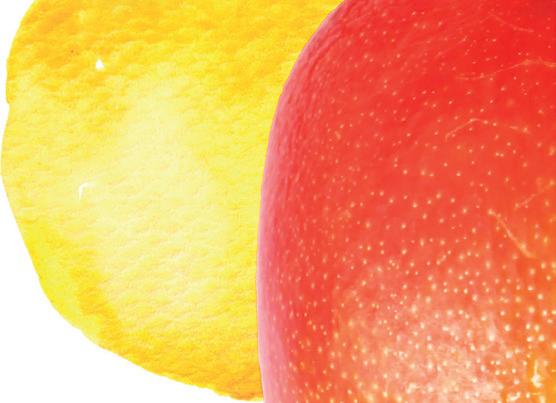
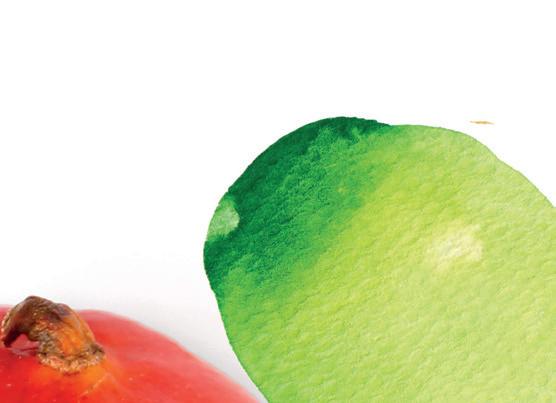



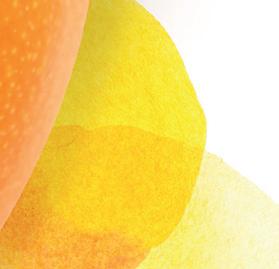








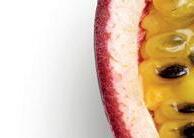
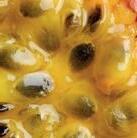

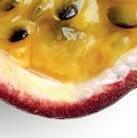
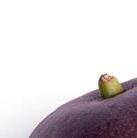

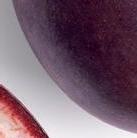
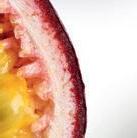








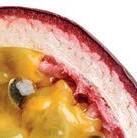











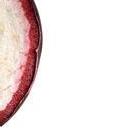








Europe president Wim Destoop explains why the avocado giant is looking to bring greater efficiency to its European business.
by Maura Maxwell

How has Westfalia’s Europe business developed over the last year to meet the needs of the category?
Wim Destoop: Over the last 12 months we have introduced a more functional approach across Europe. Our European businesses are successful in their own right, but by working even closer together I am confident we will maximise our impact and efficiencies for the benefit of all in the supply chain.
For example, we have appointed European leads for procurement and operations, who with their teams, work even more collaboratively across geographies – sharing learnings and developments. Mathijs Benard, operations manager for Central
Europe and Annabel Konst, head of procurement Central Europe, also joined Westfalia in the last year and bring valuable experience to the teams.
Our operations teams in the Netherlands and Germany are working together on several projects, including a custombuilt machine producing a fully recyclable cardboard twin pack. Our pan-European approach also aligns with several customers who expect consistency and transparency across the supply chain – whether they are directly working with our offices in Germany, the Netherlands, France or the UK, their experience of working with Westfalia will be the same.
Is the future positive for the avocado category?


ABOVE—The wide range of countries supplying Europe counter any supply challenges
LEFT—Wim Destoop, Westfalia’s Europe president
WD: Indeed it is – recent data from the World Avocado Organisation suggests that consumers continue to want avocados for their health and unique taste. The data also indicates the significant opportunities across Europe to increase the consumption per capita, focusing on frequency and penetration.
In the UK and Germany penetration is just over 40 per cent, while in France and Spain it’s over 70 per cent. In most European countries usage is spread throughout the day across breakfast, lunch and dinner. In Germany, the majority of avocados are eaten at breakfast. By working with retailers to deliver engaging promotions, activations and innovative products I am sure we can grow the consumption and penetration of avocado whole fruit, as well as the extended product range.
Europe also has the benefit of a wide range of suppliers across the Americas and Europe to counteract any supply challenges. We are also seeing increased production from Morocco, Brazil, Guatemala and Egypt which will only strengthen the supply calendar.
Does Westfalia’s recent acquisition of Syros signal a growing focus on value-added products like guacamole to supplement your fresh offer?
WD: Absolutely – we have been supplying own label guacamole and smashed avocado products to the UK for a number of years with production in both the UK and South Africa. Syros is based in Europe with a strong customer portfolio which gives us the ideal opportunity to maximise our impact across Europe and transfer learnings to additional geographies.
We have been supplying Syros with raw material for many years so already have the benefit of a close working partnership. The development of our valueadd range also supports our aspirations to use the total avocado crop, to reduce waste and support growers.
The future of value-added avocado based products is very exciting. We have recently trialled a smashed avocado pack next to whole avocados in the fresh fruit section with very promising results – sales of the smashed avocado far exceeded expectations and have not negatively affected sales of whole fruit. The initial results indicate that consumers like the convenience of the smashed avocado but also want the whole fruit to use for specific meals and occasions.
What about the avocado opportunities in foodservice? Is this a channel that Westfalia is looking to get more directly involved in?
WD: Of course, no channel is out of bounds for Westfalia! We currently supply key food service
Westfalia Fruit launches new range of sustainable dyes
Westfalia has partnered with UK startup Sages London to develop an innovative method of extracting a natural, sustainable dye from avocado stones.
The process extracts perseorangin, a rare and soughtafter natural pigment, from avocado stones collected at Westfalia’s UK facility. This is then converted into a dried powder with an extended shelf-life, which can be used to create eight distinct shades ranging from light yellow to rich reddish-brown, creating new opportunities for sustainable colouring solutions across multiple industries.
Westfalia said the move marks a significant advancement in total crop utilisation. Any unsuitable avocados are processed at the company’s facility into products like avocado pulp, smashed avocado, guacamole, and more. The avocado skins and seeds from the process, which were previously typically used in lowvalue applications such as anaerobic digesters, are now finding new, innovative, higher-value alternative uses.
“This breakthrough represents a significant step in our journey toward our total crop use strategy,” said Andrew Mitchell, the company’s head of group innovation. “By transforming what was once considered byproduct into a valuable resource, we’re creating sustainable solutions that benefit multiple industries.
“The ability to produce eight distinct natural shades while maintaining our commitment to use the entire fruit demonstrates the potential of innovative thinking in sustainable agriculture.”

customers both directly and via wholesalers as well as more traditional markets such as Covent Garden in the UK. We also provide our value-added guacamole and smashed avocado products to foodservice.
Complemented by our extended product range from the Syros portfolio, we plan to make more of an impact in the category. We also supply IQF avocado slices and dices – perfect for foodservice to manage stock levels and minimise waste. E
Steve Barnard says avocado specialist is pleased with first quarter results, achieved despite supply challenges in Mexico.
by Carl Collen
Mission Produce has reported its financial results for the fiscal first quarter (Q1) ended 31 January 2025, with total revenue increasing 29 per cent year-on-year to US$334.2mn. The increase was, the group said, primarily driven by the marketing and distribution segment, where average per-unit avocado selling prices increased 25 per cent on a 5 per cent increase in avocado volumes sold.
The higher selling prices reflected industry supply constraints in Mexico and demonstrated ”resilient consumer demand”.
Revenue in Mission’s blueberry segment also increased, primarily due to a 70 per cent rise in volume sold, partially offset by a 33 per cent decrease in average per-unit selling prices. Higher blueberry volume was driven by increased total acreage and yields from Mission farms, it stated, while price decreases were driven by a normalisation of the supply and demand environment this year, compared to the prior year’s high pricing that was driven by lower supply following unfavourable regional weather conditions.
Gross profit increased US$2.8mn on the same period of 2024 to US$31.5mn, driven by the international farming segment. This benefitted from increased packing and cooling service activity that correlated with higher blueberry production volumes, partially offset by lower
“We were pleased to meet robust consumer demand in our fiscal first quarter and deliver volume growth”
gross profit in the marketing and distribution segment, which was negatively impacted by lower perunit margins on avocados sold due to challenges in “obtaining Mexican supply required to meet customer commitments”.
Net income was US$3.9mn compared to breakeven, or US$0.00 per diluted share, for the same period last year. Adjusted net income was US$7.1mn, up from US$6.7mn last year, while adjusted EBITDA fell to US$17.7mn from US$19.2mn.
BELOW—Mission highlighted the underlying strength of the avocado category
“We were pleased to meet robust consumer demand in our fiscal first quarter and deliver volume growth despite industry supply challenges in Mexico,” said Steve Barnard, CEO of Mission. “Our marketing and distribution segment drove volume growth despite higher pricing, demonstrating the underlying strength of the category.
“Additionally, our strategic investments in our blueberries segment supported significant volume growth which led to solid segment EBITDA contribution,” he outlined. “While the operating environment led to lower per-unit avocado margins this year due to higher fruit costs, our diversification across categories and markets helped us deliver solid bottomline results against a tough year-ago comparison.
“Looking ahead, while the impact of tariffs on Mexican supply dynamics continues to be uncertain and fluid, we will focus on leveraging our competitive strengths in the California and Peruvian sourcing markets to deliver for our customers,” Barnard added. “Combined with our strong balance sheet and disciplined approach to capital allocation, we believe we’re well positioned to continue creating value for our shareholders.” E


Volumes are expected to increase 5.5 per cent across the key Southern Hemisphere apple-growing nations, with pear numbers set to fall 3.3 per cent.
by Carl Collen
The World Apple and Pear Association (Wapa) held its annual meeting at Fruit Logistica in Berlin, releasing its Southern Hemisphere apple and pear crop forecast for the upcoming season.
According to the forecast, which consolidates the data from Argentina, Australia, Brazil, Chile, New Zealand and South Africa, apple production is set to grow by 5.5 per cent compared to 2024, while the pear crop is set to decrease by 3.3 per cent.
For apples, the Southern Hemisphere forecast suggests an increase to 4.75mn tonnes compared to just under 4.5mn tonnes last year.
South Africa is expected to maintain its lead as the largest producer with 1.47mn tonnes, growth of 3.4 per cent on 2024. This is followed by Brazil (950,000 tonnes, up 14.2 per cent|), Chile (920,000 tonnes, up 0.7 per cent), New Zealand (544,949 tonnes, up 5.6 per cent), Argentina (537,000 tonnes, up 5.8 per cent), and Australia (319,923 tonnes, up 5.5 per cent).
Exports are also expected to increase by 5.3 per cent, to reach 1.65mn tonnes.
South Africa (up 5.5 per cent) and Chile (up 1 per cent), the two largest exporters, are both expected to increase their export volumes, reaching 641,488 tonnes
and 507,000 tonnes respectively.
Exports from New Zealand should grow by 9.7 per cent to 376,106 tonnes, Wapa said, with growing export quantities also forecasted for Argentina (90,000 tonnes, up 8.2 per cent) and Brazil (36,547 tonnes, up 14.6 per cent).
4.75mn forecast apple volumes from the southern hemisphere
In the pear category, meanwhile, Southern Hemisphere growers predict a slight decline in the crop (down 3.3 per cent), bringing the total to just over 1.44mn tonnes. Argentina (616,000 tonnes), the largest producing country, is expected to decrease its volumes by 10.9 per cent.
South Africa (551,642 tonnes), Chile (208,025 tonnes), and Australia (62,467 tonnes), on the other hand, are all expected to increase their production, by 2.9 per cent, 3 per cent, and 4.2 per cent respectively.
Export figures are also expected to decrease from 2024, with a total of 689,155 tonnes (down 4.4 per cent).
The EU production forecast, which was first published during Prognosfruit 2024, was revised to 10.39m tonnes for apples (down 9.7 per cent from 2023) and 1.79mn tonnes (up 5.1 per cent) for pears. E
ABOVE—Apple numbers are up while pears are down in the latest Wapa forecast
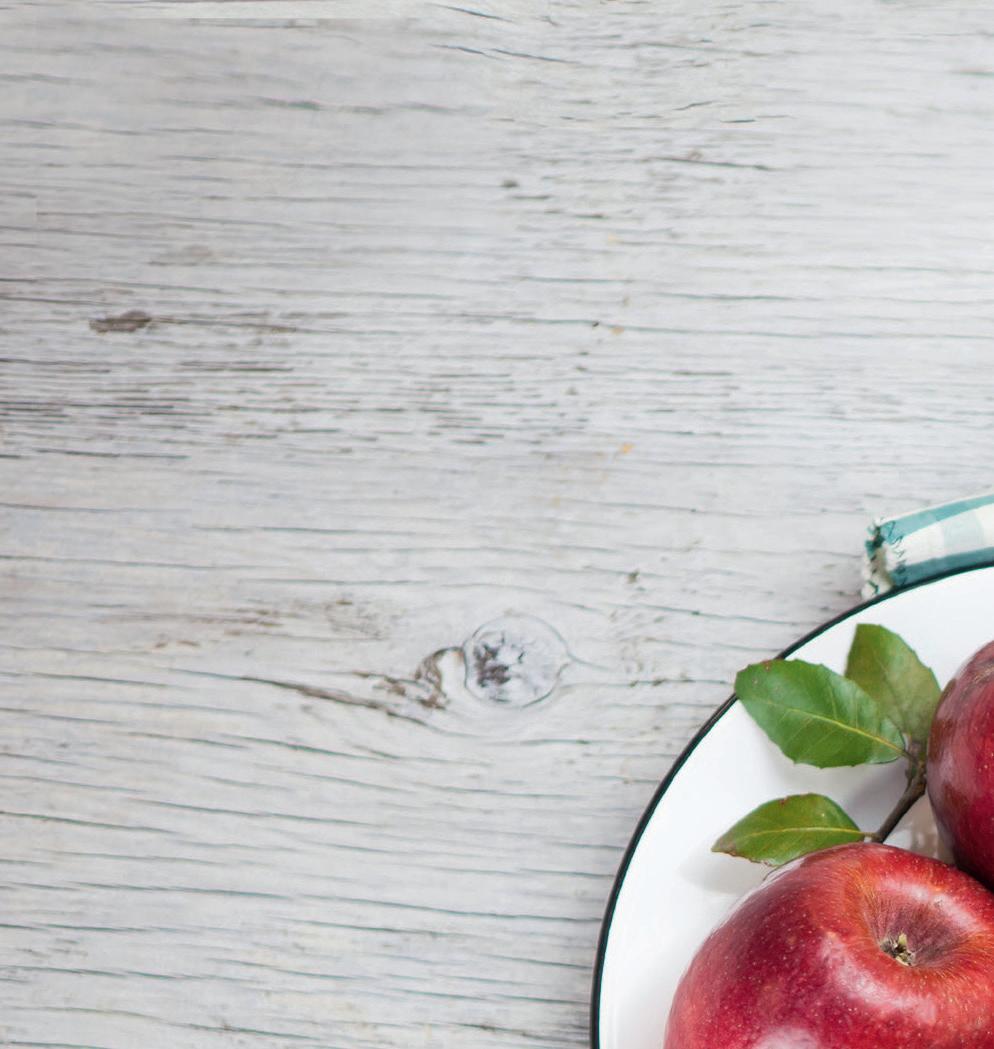
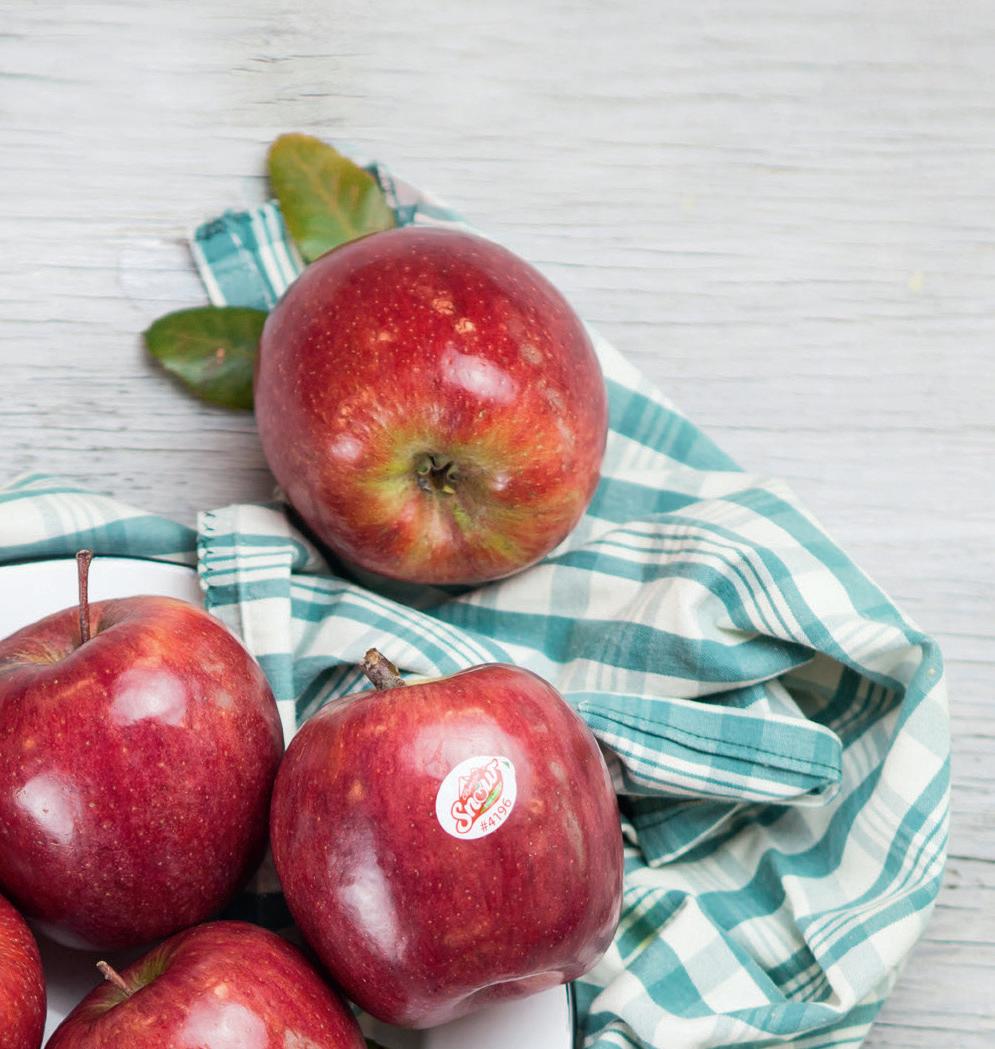
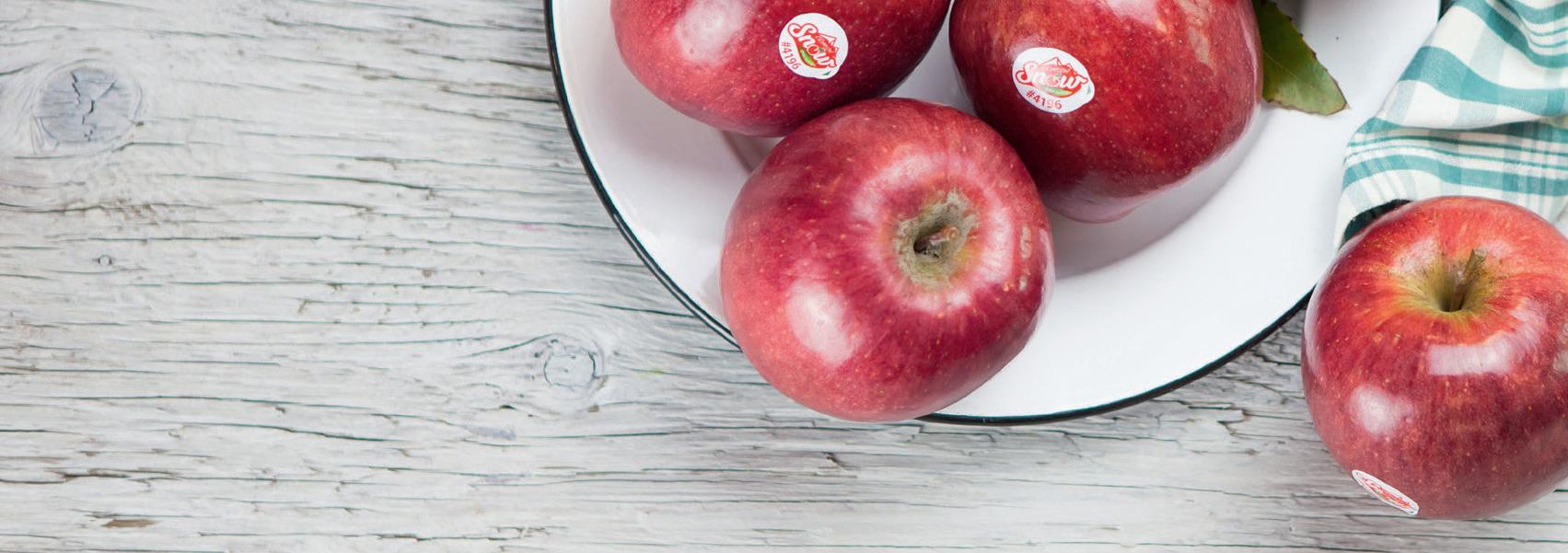











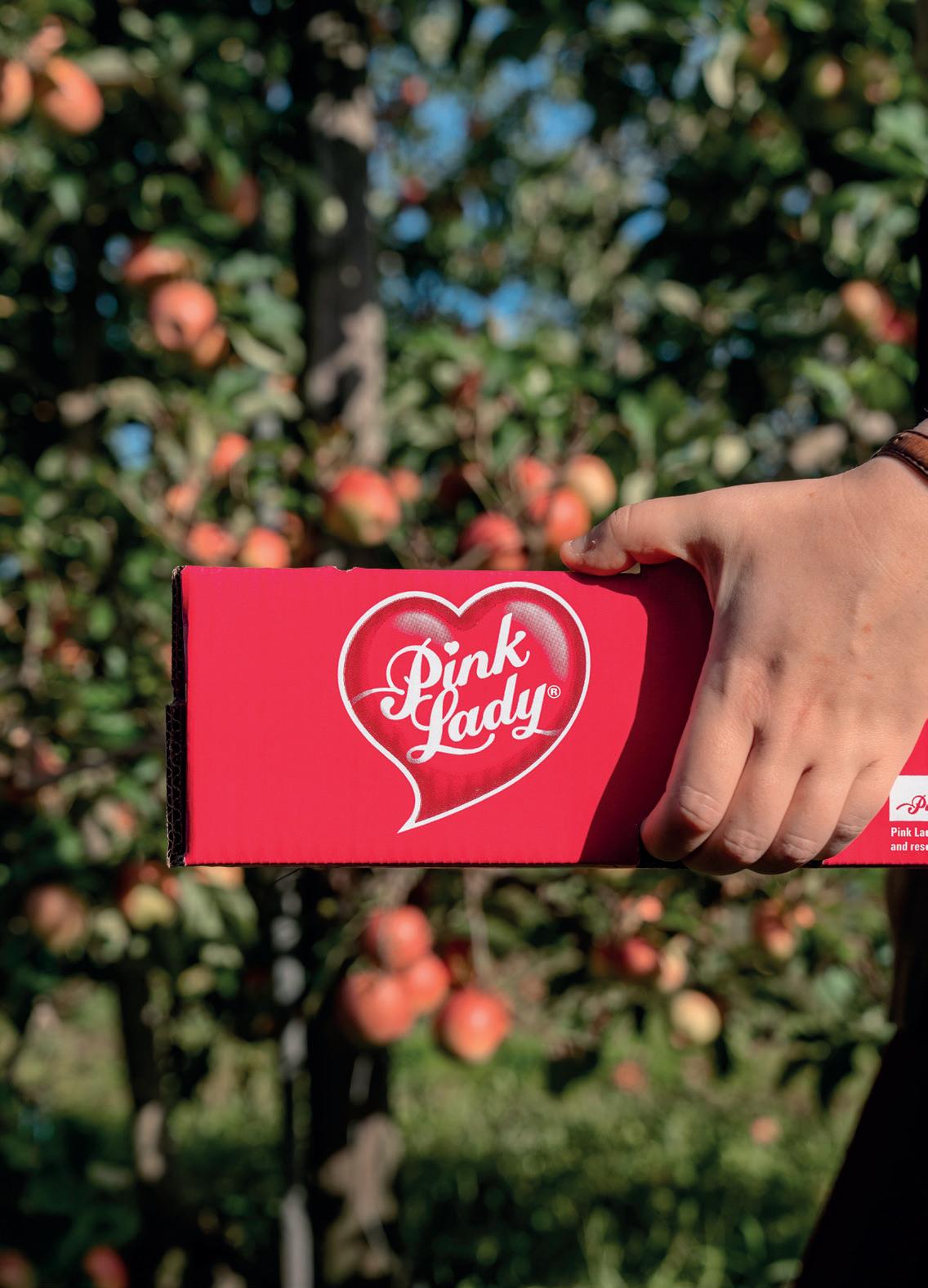
With Pink Lady continuing to buck the downward trend of the European apple category, new president Bruno Bertheloz aims to have 100mn people in Europe enjoying Pink Lady annually.
by Tom Joyce
Pink Lady Europe has set an ambitious target for 2030 to have 100mn people enjoying Pink Lady apples annually, according to new president Bruno Bertheloz.
In 2024, over 70mn people in Europe consumed Pink Lady apples over the course of the year, with sales since the start of this campaign up 4 per cent compared with the previous year.
ABOVE—New president Bruno Bertheloz says Pink Lady is “more than just an apple”
Key markets include Germany (24 per cent of Pink Lady’s European volumes), the UK (18 per cent), France (16 per cent), and Italy (8 per cent), with notable growth of 13 per cent in Germany and 16 per cent in Italy since the start of the season.
“Pink Lady is more than just an apple,” said Bertheloz. “We are shaping the future of fruit growing and marketing. Our strength comes from deep-rooted values: responsibility, fairness, teamwork, shared expertise and unwavering commitment. As a network, we are securing the future of our businesses and apple cultivation in Europe.”
Pink Lady Europe revealed plans to market over 360,000 tonnes of apples – around 2bn tonnes, with double-digit growth targeted in key markets, including Germany (13 per cent), Italy (15 per cent) and France (17 per cent).
“Pink Lady aims to achieve its ambitious targets through a dual strategy: expanding into new markets by tailoring initiatives to local and cultural preferences, while strengthening its presence in mature markets by boosting consumer loyalty and increasing consumption,” the group stated.
To support its expansion, Pink Lady said it was implementing three key strategic pillars:
“1. Understanding consumers better – placing consumers at the heart of the brand’s strategy through personalised messaging, refined segmentation and deep data analysis.
2. Producing better in the face of climate challenges –developing innovative technological tools and investing in reliable climate data and advanced monitoring technologies.
3. Fostering collaboration to drive innovation –strengthening ties between growers, distributors and consumers to encourage collective growth and shared innovation.”
Bertheloz commented: “Since Pink Lady pioneered the concept of club varieties, we have seen ourselves as ambassadors for apple growers and consumers. Our commitment to continuous innovation and our strong community ensures fair income for growers while delivering healthy, high quality and environmentally friendly apples to consumers.
“With Pink Lady, we offer more than just an apple –we create an experience, an emotion and a promise of excellence, both today and in the future. Pink Lady is more than an apple; it’s a brand that stimulates the senses and emotions. It embodies positive energy, indulgence and the promise of an extraordinary moment. Our mission is to elevate the apple category, bring freshness to the fruit aisle, and establish Pink Lady as an essential part of daily life.” E
The French apple exporter is focused on gaining in-depth knowledge of consumers to deploy a category-based approach that it says is proving highly successful in French supermarkets.
by Tom Joyce
In response to falling apple consumption in Europe, France’s Blue Whale says that revitalising the apple segment and the range of apples offered is becoming essential.
in France and in several other countries around the world with MarketSense.”
Three main reasons have been identified for the consumer drift away from apples: disappointing experiences in terms of taste and texture; the trivialisation of apples and a desire to turn to other fruits; and diverse consumer profiles with
BELOW—Blue Whale’s categorybased approach on show
point of sale,” said Pauline Planté, the company’s head of marketing France. “It’s a winning combination for reaching the hearts of consumers.
“Five major consumer profiles have been updated in France, with special expectations regarding apples: from diet addicts to gourmet foodies looking for sensory pleasure, as well as no-nonsense families. Cross-referencing certain consumption data from the Kantar panel has led to some truly interesting findings. For example, our all-new Candine is a sweet,
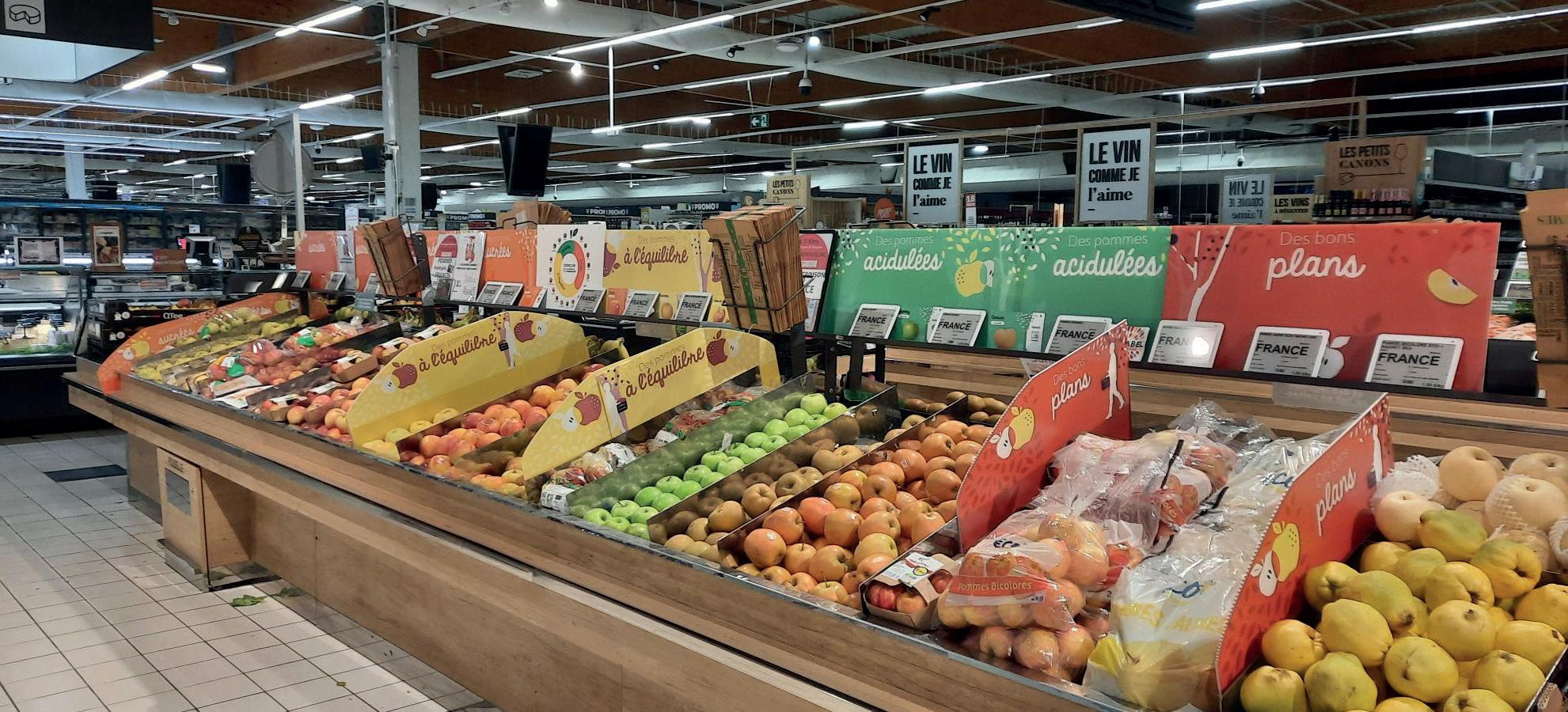
To this end, the company has sought to understand consumers around the world, getting to know their expectations in terms of the product, as well as the buying experience.
“This understanding is key to revitalising consumption,” said Christelle Bertin, Blue Whale’s director of marketing and communication. “We are the recommended apple partner. In order to develop our knowledge of consumers and understand their expectations, we’ve been carrying out large-scale studies since 2022
different expectations.
“There are around 100 varieties on the global apple market and over 70 varieties branded through clubs,” explained Bertin. “Not all these varieties will be successful. However, a wide range on the shelf can strengthen the department if a consumer approach is prioritised.”
Blue Whale has drawn on such lessons to rework how it presents its assortment to customers. “Our offer, which is relevant from a taste and organoleptic perspective, goes hand in hand with activation work both inside and outside the
crunchy and juicy variety, which is very well suited to the expectations of young consumers who are looking for a tasty apple that’s ideal for snacking.”
The category-based approach has been tested for two months by retailer Leclerc at various locations. “The assortment recommended by the chain has been set up according to taste, with clear and attractive shelf markings to encourage shoppers to browse the range and discover new varieties,” Blue Whale stated.
The result? The average shopping basket has grown, with the most popular innovations outperforming the rest. “We’ve got proof it works!” declared Bertin. “A 46 per cent jump in revenue in the apple category! The different varieties bring additional benefits to the department and meet different consumer expectations.” E

Matthieu Maxant, chief operating officer at Sakata Vegetables Europe, outlines how the seed company’s customer-centric approach is driving its innovative breeding programmes.
by Carl Collen
What is Sakata talking to the industry about right now?
Matthieu Maxant: We have a couple of exciting projects we are talking about. We decided a couple of years ago to change our approach to our customers. We adopted a new approach, taking them with us every step of the way, each season, in every field. We like to accompany our customer – the grower, distributor, plant breeder, or retailer at the end of the
chain – to understand what they need so we can drive our breeding programmes towards innovation. If we are speaking about the retailer and consumer, and what they like to see in a product, a good example is Metric. This is a long Dutch cucumber variety with a good resistance package and strong yields, but with an extra plus: its shine. This is important because a lot of retailers are now asking for no plastic film to be wrapped around cucumbers, which then becomes an issue for consumers
ABOVE—Matthieu Maxant
OPPOSITE TOP—Kai F1, a dark courgette resistant to New Delhi virus
OPPOSITE BOTTOM—Orionit F1 is a butternut variety with good brix that offers resistance to Didymella
because they see that their cucumbers are no longer shiny. So, we decided to drive our breeding programme towards finding the shiniest cucumber, which means the product is still attractive for the consumer without being wrapped in plastic. This is one of the examples that we are showing people.
MM: Going back to our new approach, we also have innovations that are more targeted to what growers need. We are a leader in butternut, for example, and one of the developments in that category is the increasing presence of the disease Didymella. Nobody was able to introduce a variety that resisted this

disease. Last year, however, we released a new variety – Orionit F1 – that had the same Brix but also offered Didymella resistance, an innovation that gives additional value to the grower. This is how Sakata wants to be seen – giving innovation to growers, to retailers, and to consumers, finding what customers need, with that in turn driving our breeding programmes.
How difficult is it to balance all of these demands? To consider all of these needs and breed an array of traits in each product?
MM: The most relevant example of balancing traits is ToBRFV in tomatoes. A couple of years ago when this virus first arrived, one big company was taking the market. They had an elongated plum tomato that had the best taste, with the best Brix and so on, but with no resistance. Breeders worked on ToBRFV resistance and brought some solutions, but the problem was these options had no taste. This is one of the major issues everybody now has. Fortunately, Sakata has come up with something. It is still not ready to disclose, but soon we will be able to release a tomato with resistance but, importantly, also great taste. Originally when ToBRFV came to the fore, we were not able
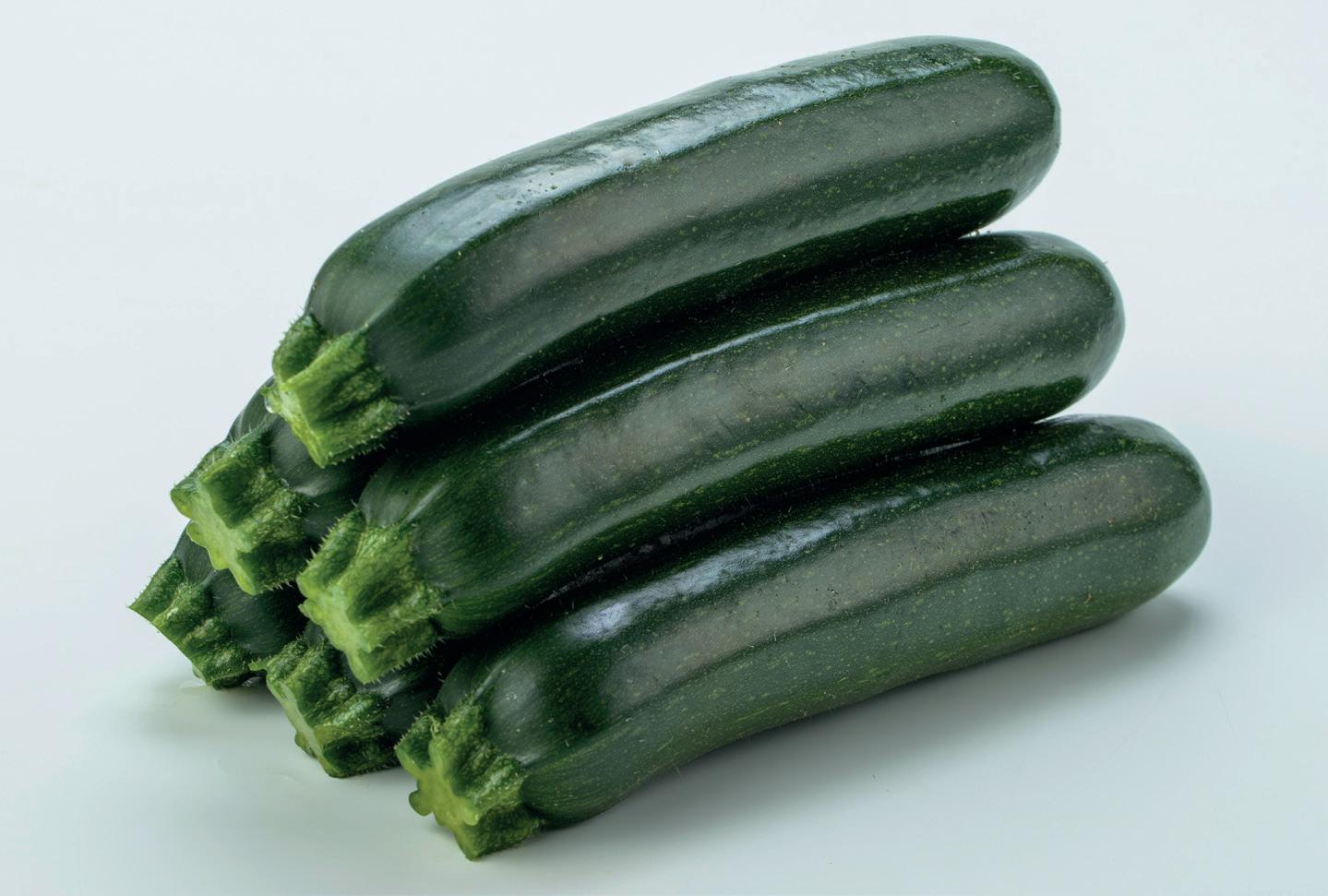
to find the right balance between resistance and taste, and we did not want to push a variety out onto the market too quickly that didn’t have great taste. It is a difficult balance to get right.
How do the many challenges across the global market – geo-political instability, climate change and others –impact a company like Sakata?
MM: These issues do affect us, because we are seeing more and more barriers go up across different countries. Just a few years ago, everyone was thinking about how open the world was, and this is not the reality anymore. Now, I would say that the company is not fully globalised, but rather is more focused on being localised, close to the customer. This creates fewer difficulties than being completely globalised, which adds more costs to operations. On the other

hand, being closer to the customer means Sakata can move much more quickly and can be more reactive to challenges.
It is not only political challenges we face. More and more, we are having to stand up to changes in climatic conditions. The more local we are, and near to what the customer needs, the easier it is to
“We want to understand what our customers need so we can drive breeding programmes towards innovation”
understand and find solutions. For example, a couple of years ago in Egypt we released a tomato that could resist very high summer temperatures. This is a very important characteristic that was not previously present in the market. A lot of tomatoes were already tolerant to heat, but to be able to resist peak temperatures, this was very new.
The more that we as a seed company can deliver these things, the better. And to do it properly, we need to be localised and near to the customers.

How about technology? How are technological developments benefitting Sakata?
MM: First of all we look at data, and the AI behind this. We are obviously an innovation-driven sector, but today we are not sure that we are able to analyse all the data points that we can take from technology. Clearly, AI will help us with the sheer volume of data we have. I am convinced that this will be the next step in technological advancement that benefits us.
Another example is robotics. We see that in our mature markets, we have less availability of labour, and it is increasingly difficult to find people to work. Robotics will help with this. You need to have people to harvest broccoli, to pick tomatoes, and other tasks. But this labour is not present, because we have a declining population, and the next generation does not want to work in these types of conditions.
Robotics will be a game-changer. Take broccoli as an example – genetically, the varieties produced today are
AB OVE—Txeco F1, Sakata’s large blocky pepper offering BELOW—The Ithaca F1 broccoli offers high yields during winter
showcases growing portfolio at Fruit
Sakata’s enhanced range of vegetable seed options was on display at Fruit Logistica in February. The group’s portfolio has been strongly reinforced in recent years in categories such as butternut, cucumbers, peppers and courgettes.
Innovative varieties included Orionit F1, the only butternut squash that is resistant to Didymella (IR); Kai F1, a dark courgette resistant to New Delhi virus; Txeco F1, a large blocky pepper offering full pack resistance; and Metric, described as “the shiniest long Dutch cucumber on the shelves”.
In addition, Sakata highlighted its broccoli offering with new varieties such as Ithaca F1, which offers very high yields during winter harvests.
“Sakata’s priority is to always meet the needs of each market player and provide an appropriate response to local growing conditions,” said Maxant.
Sakata Vegetables Europe, a subsidiary of Sakata Seed Corporation (Japan), breeds, produces and markets high quality vegetable seeds for Europe, the Middle East and Africa. It offers around 900 varieties of broccoli, tomatoes, squash, watermelons, cabbages and more.
not ready to be harvested by a machine. So that means we must adapt. If broccoli is to be machine-harvested, the head must be elongated so that the harvester can take it. And if you are using manual labour, you may go two or three times to the field to harvest, but with robots, you need to do it in one go for greater efficiency and longterm cost effectiveness.
However, this is a long-term vision. Today, I am not sure that the seed industry is ready to fully embrace robotics. Everyone is working on it, but we are not quite ready as a sector. E


A Canadian supplier is using innovative marketing in its drive to secure fairer returns for banana producers.
by Michael Barker

When a company speaks of wanting to dominate global banana supply, it conjures up images of a soulless dollar-chasing corporation that will do anything to boost the bottom line.
However, when it comes to innovative Canadian disrupter Equifruit, nothing could be further from the truth. Using humour and absurdist marketing, the Montrealbased, all-women-owned B Corp is starting to gain significant traction in its drive to open the world’s eyes to a fairer system of banana supply.
Led by charismatic president Jennie Coleman – who was recently named one of Canada’s Most Admired CEOs by Waterstone Human Capital – the business has been supplying 100 per cent Fairtrade bananas to the North American market since its founding in 2006. Sourcing from growers in Ecuador, Peru, Colombia, Nicaragua and Mexico, it has already achieved a market leadership position in the North American Fairtrade segment. But it feels like a drop in the ocean given Fairtrade bananas have only a paltry two per cent share – a far

cry from the inroads that have been achieved by the Fairtrade and fairer pricing movements in both the UK and EU.
Speaking to Eurofruit at the Global Produce & Floral Show in Atlanta in October, Coleman said the company’s goal is simple, if highly ambitious: “Our vision is global Fairtrade banana domination,” she said. “Only four per cent of the global market is bought and sold on Fairtrade terms and we just can’t accept that. There has been a hundred-year business model [in banana sourcing] which we think belongs to the last century, and ours is one that prioritises a fairer distribution of value along that supply chain. It starts with small growers and plantation workers back in producing countries, and our role really is to be the representatives of those growers, to find them export markets on Fairtrade terms.”
It’s not easy to stand out and convince retailers, and ultimately consumers, to pay more for a product as homogenised as bananas – but that’s where Equifruit really shines, through innovative communication and telling a story that resonates. In Atlanta, the company set up a photography booth in the style of a Vanity Fair (or ‘Bananity Fair’ as it was cutely labelled) magazine cover, where visitors could get snapped in fun poses to share on social media.
At a previous show in Nashville, Equifruit printed fake $5 bills and left them around a hotel complex, put them in a Crystal Maze-style dome to be caught, and fired them out of a gold money gun. The message?
That the average American eats 27lbs of bananas per year, and with a Fairtrade banana programme estimated to raise prices by about 20c per lb, that adds up to a total of only about five bucks a year.
The Equifruit team are masters of marketing and their zany humour and unbridled enthusiasm under the hashtag #BananaBadass is already turning heads across social media. Doubling down on their core message from the Nashville campaign, the team used an email signoff that highlighted frivolous things that they’ve spent more on in the past year than the $5 Fairtrade premium – such as a single fancy coffee, hot sauce, glitter slime or sunglasses for their dog.
“There’s all this emotion and stress built into raising the price of bananas when the end effect is so negligible for the vast majority of the market,” Coleman points out. “If we spent just $5 more per year, then banana farmers would have working toilets in their children’s school washrooms.”
Equifruit’s approach is to use the silly to highlight the serious. “We are doing all sorts of crazy things,” Coleman says. “We really lean heavily on humour and the absurd to grab people’s attention, but we always bring the message back to getting farmers paid fairly.
“Our aim at a trade show is brand awareness. We know bananas are a very weighty decision for a retailer. It takes them a while to think differently about their banana supply chains, pricing and merchandising strategies. If we can bring them here and make them laugh, it’s a way for them to find
“Only four per cent of the global market is bought and sold on Fairtrade terms and we just can’t accept that”
the confidence that if they do a programme with Equifruit we’ll also find a way to communicate to their consumers to tell the story.”
Coleman admits that getting retailers – particularly in the US market where relationships with the big multinational suppliers go back decades – is no easy feat. Buyers are concerned that if consumers notice a price increase on bananas, then that will set their price perception for the entire store, and it takes shock tactics such as Equifruit’s marketing approach to get them to consider a new path.
“We want retailers to have the courage to try something different, something that has a tangible impact,” Coleman adds. “We really have to work at winding back the model, and changing the mindset of the buyer is critical for the impact we can have.”

Building consumer brand awareness is still in the early stages, and remains part of a longer-term strategy. While Equifruit is active on Instagram and TikTok, it is still predominantly a trade-facing brand. And Coleman is philosophical enough to realise that only by winning contracts can the company make a difference. She readily admits it’s not easy to be the people dropping truth bombs and also the ones that want to sell you bananas.
“You don’t want to put people on the defensive, so we use humour to bring tension down and get people a little bit more comfortable with the idea that we are doing something different,” she explains. “And then we always come back with this message about the importance of Fairtrade and paying farmers fairly.”
The focus right now is firmly on the vast North American market, where low Fairtrade uptake and higher acceptance of brands by retailers gives plenty to aim at. But ultimately, Coleman is not putting limits on where the company can go.
For the immediate future there’s a plan to invest more in telling the story, expanding with new hires, and continuing to exhibit at trade shows. Equifruit has already defied almost every convention by being a female-owned B Corp with the credibility of Fairtrade behind it. And one suspects it is only just getting started. E
OPPOSITE LEFT—
The Equifruit team at GPFS in Atlanta in October
OPPOSITE RIGHT—
Jennie Coleman
ABOVE—Equifruit sales manager
Shelby Dwyer makes it rain dollars

Association says that labour, regulatory and economic crises are threatening the future of US fresh produce.
by Carl Collen
The International Fresh Produce Association (IFPA) has urged US congress to take bipartisan action to support growers, strengthen food security, and maintain the country’s leadership in production.
Bret Erickson, senior vice president of business affairs at Little Bear Produce, testified before the US Senate Committee on Agriculture, Nutrition, and Forestry, representing both his company and IFPA during a hearing on the agricultural economy.
“The fresh produce sector contributes US$28bn annually to the US agricultural economy and plays a vital role in promoting
public health,” said Erickson. “However, our industry is struggling under the weight of labour shortages, rising costs and regulatory burdens that threaten our ability to compete and grow.”
He called on lawmakers to take immediate action on agricultural labour and regulatory issues, as well as to pass a bipartisan, comprehensive farm bill. On the agricultural labour crisis, Erickson stressed that the persistent shortage of reliable, legal farm labour continued to threaten domestic food production. He urged lawmakers to collaborate with the administration to reform H-2A visa programme rules and streamline processes to enhance the competitiveness of US agriculture.
“Labour costs now make up more than 50 per cent – and in some cases, a significantly higher percentage – of the total expenses for fresh produce growers and these costs are steadily rising,” Erickson said. “If our nation is serious about maintaining robust domestic
production and food security in the United States, congress and the Trump administration must address agriculture’s labour crisis now.”
Talking about regulatory reform, Erickson criticised recent regulatory changes that had disrupted access to essential pesticides.
“In recent years, the Environmental Protection Agency’s (EPA) regulatory process has been in disarray and dysfunction from adverse legal decisions and political paralysis,” he noted. “If agriculture is to remain an essential component of our national economy, farmers must have the federal government’s commitment to providing certainty that products to control damaging pests will be safe and available.”
Finally, Erickson brought up trade barriers, highlighting the importance of reducing non-tariff trade barriers that put US specialty crop growers at a disadvantage in global markets. IFPA called on congress to fully fund critical USDA programmes that support agricultural exports through the Trade and Foreign Agriculture Agency.
“The future of US agricultural production and food security depends on smarter federal policies that meaningfully address these challenges,” concluded Erickson’s testimony. “By investing in the future of fresh produce growers, congress can ensure that the US remains a world leader in producing safe, abundant, affordable and nutritious food.” E
Spain is importing more fresh produce than it used to, and at the same time producing slightly less of its own fruit and vegetables. For the period 2020-2023, new Faostat data show a 10 per cent decline in production. And according to Fepex, produce imports rose 6 per cent year on year to 4.3mn tonnes valued at €5bn (+11 per cent) in 2024. Of that volume, just over half – 2.2mn tonnes,
worth €3.3bn – came from non-EU countries and 49 per cent, worth just over €1.7bn, originated within the EU. France and Morocco were the leading suppliers to the Spanish market last year, sending 1.1mn tonnes and 455,086 tonnes respectively. The value of imports from third countries increased by 12 per cent, while those from EU countries grew less, by 9 per cent. E
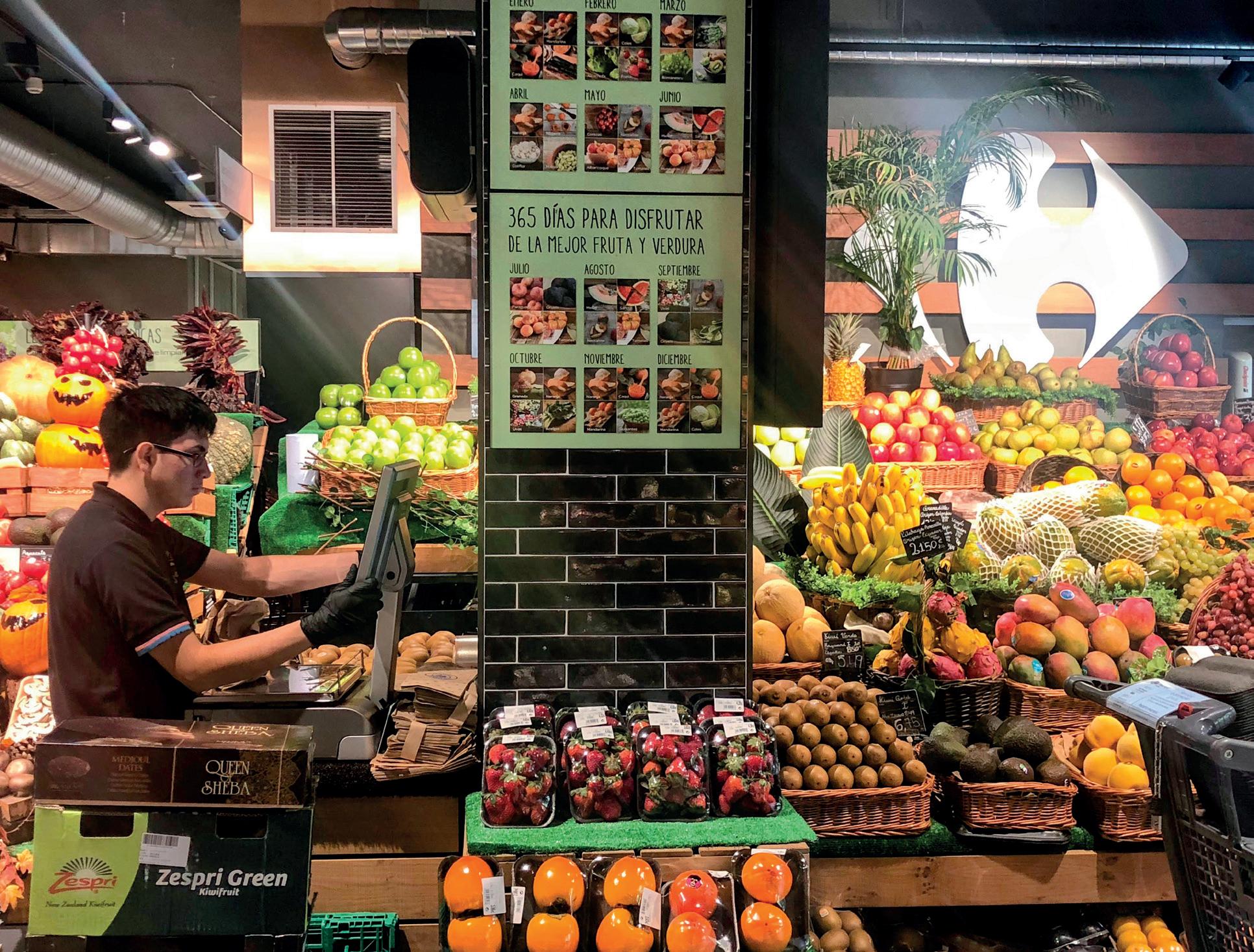






















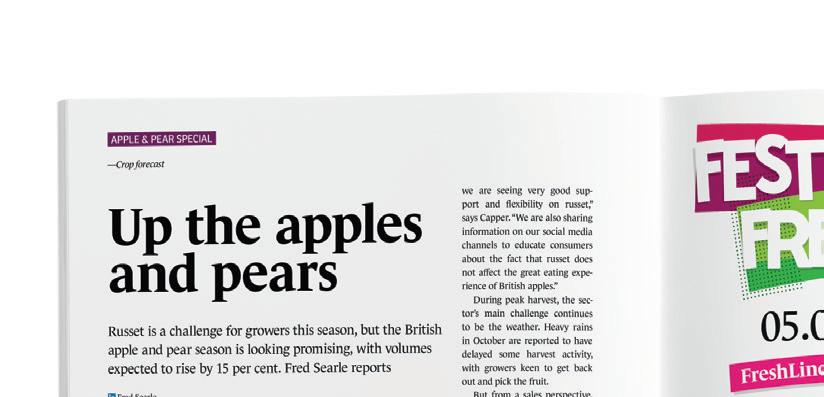









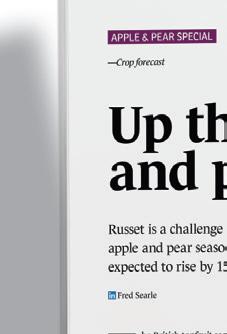






























































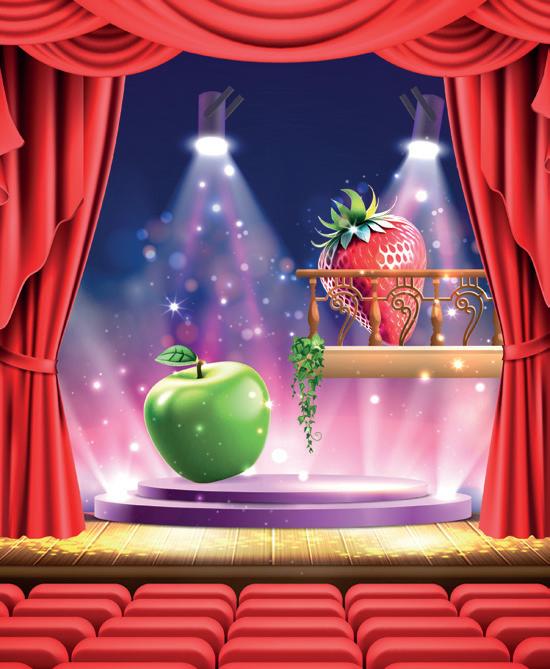

























































































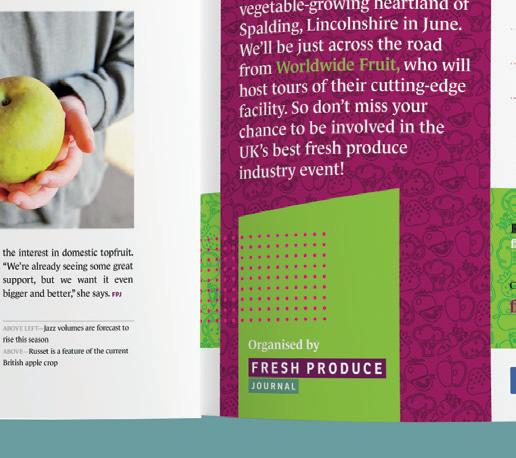

















FPJ Digital Edition and Fruitnet Specials: Online access included
FPJ News: fresh news updates sent to your inbox
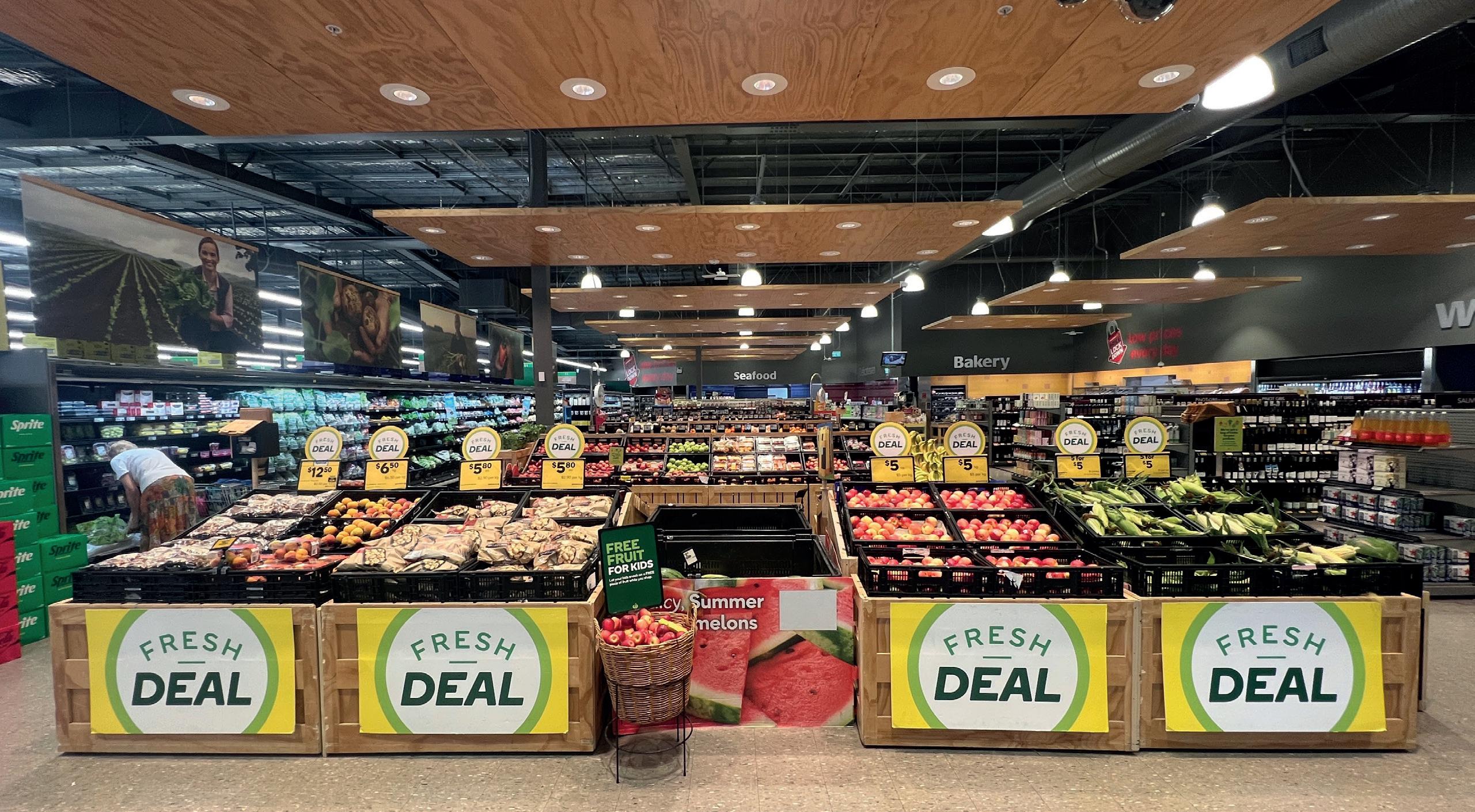

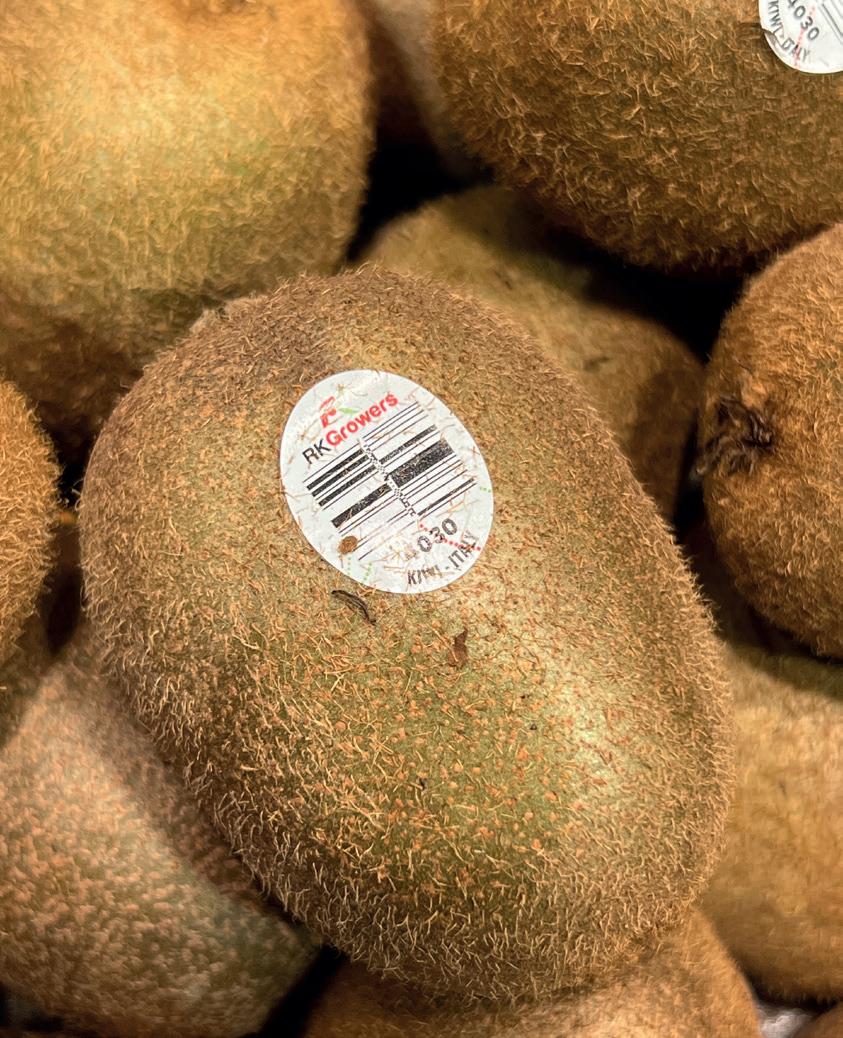
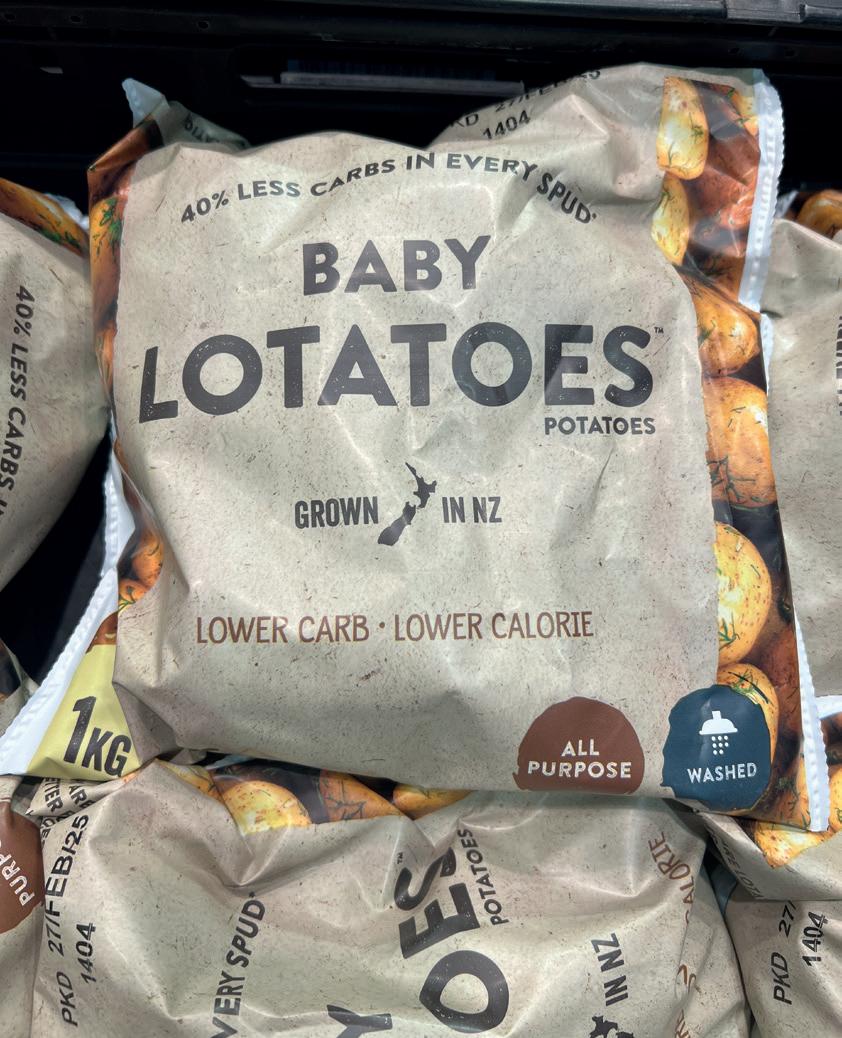
The timing of our visit to this smart supermarket at the top of New Zealand’s North Island, right at the start of the Bay of Plenty region’s kiwifruit harvest, goes some way to explaining why the kiwifruit on sale here – loose and packed – was not from just down the road, but from 18,500km away in Piedmont, Italy. On closer inspection, there were some other noteworthy features among this well-presented fresh produce
department. These included: a stonefruit hybrid known as a peacherine, a smaller, apricot-sized fruit that combines the slightly fuzzy skin of a peach with the firmer flesh of a nectarine; some locally grown, low-carb potatoes for healthconscious shoppers; and tropicaltasting Piqa pears, which more closely resemble apples. For shoppers, there was plenty of novelty and innovation on display. E































































